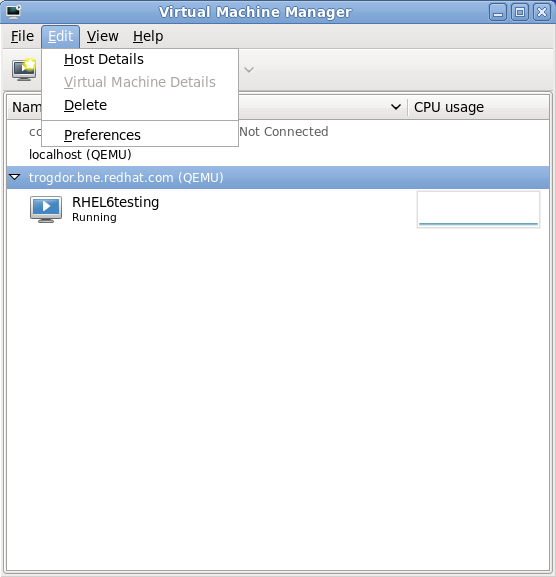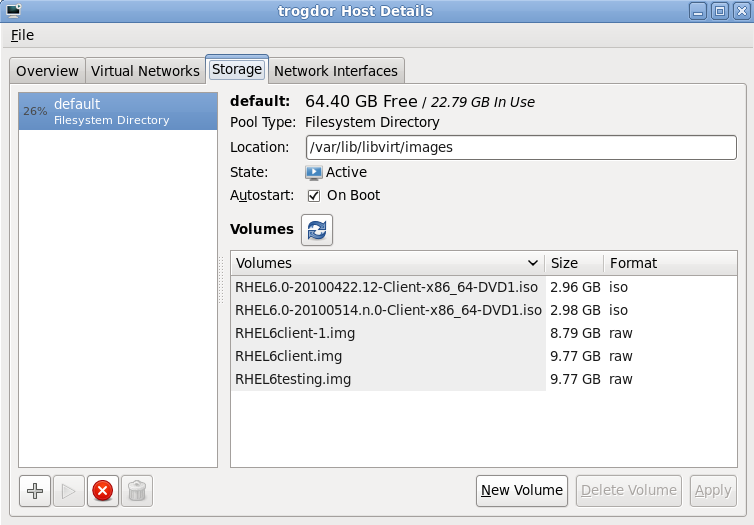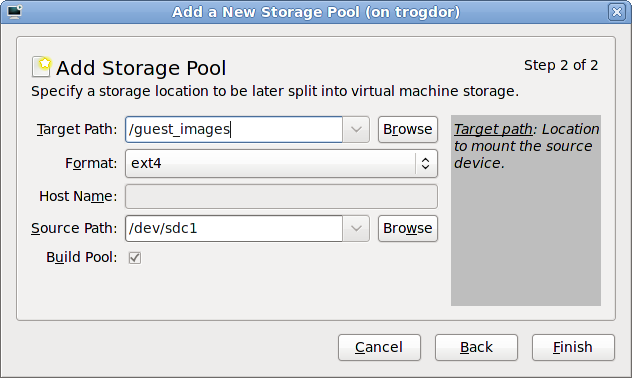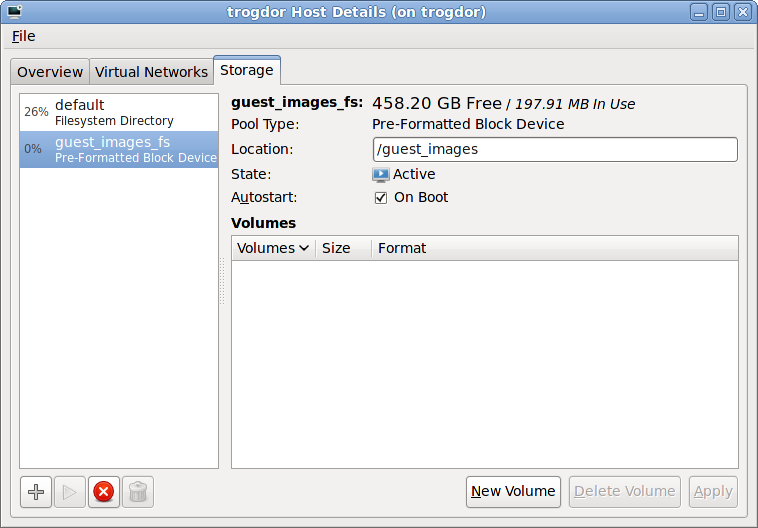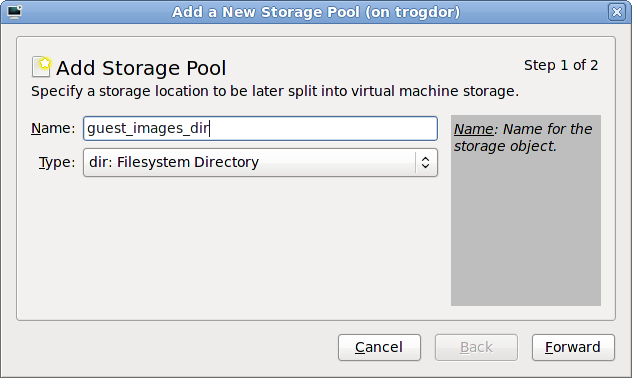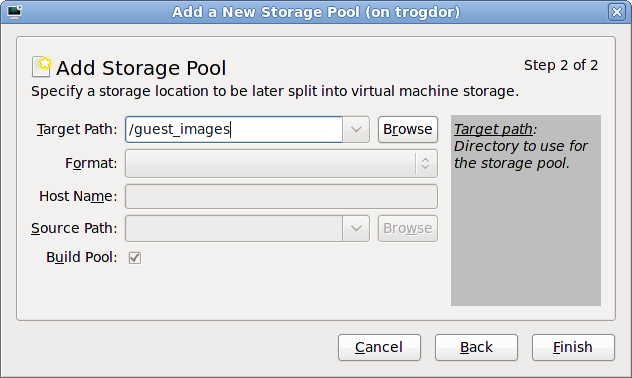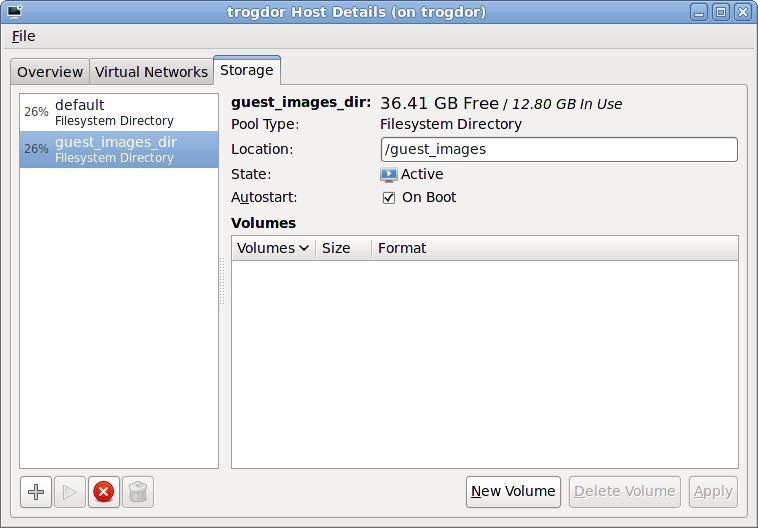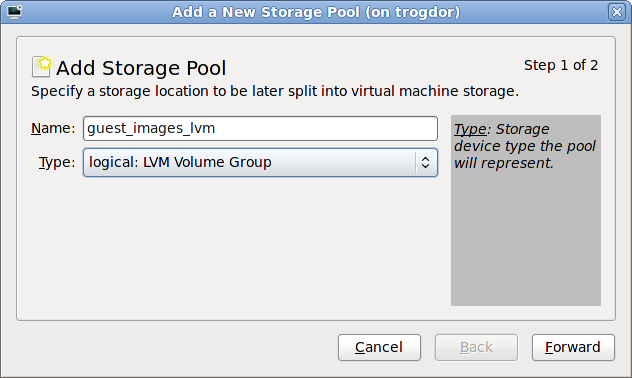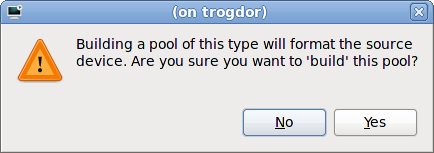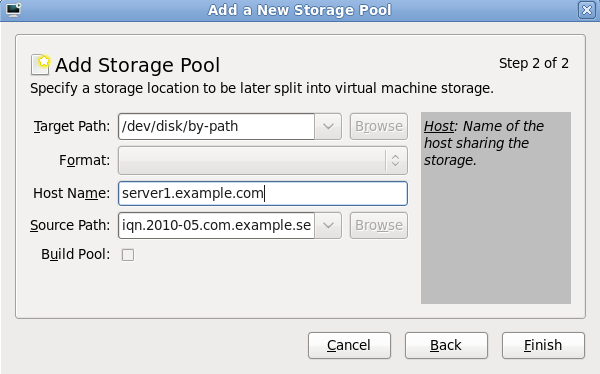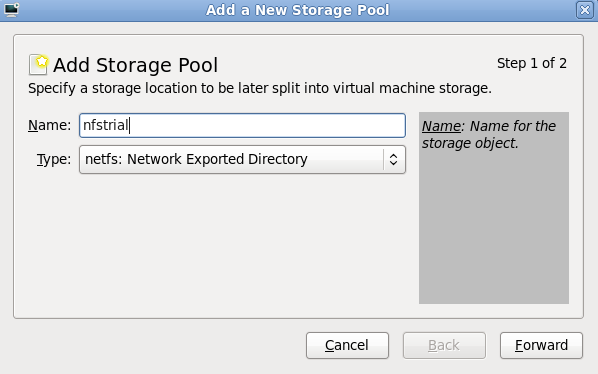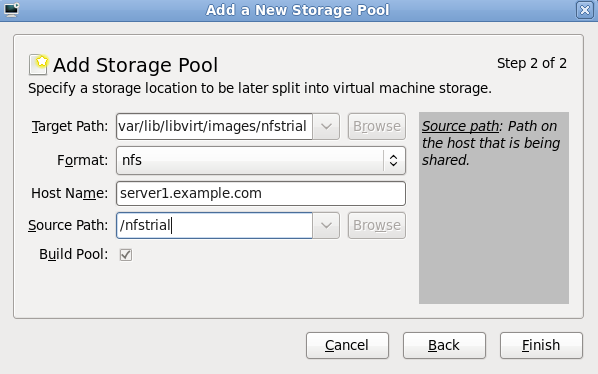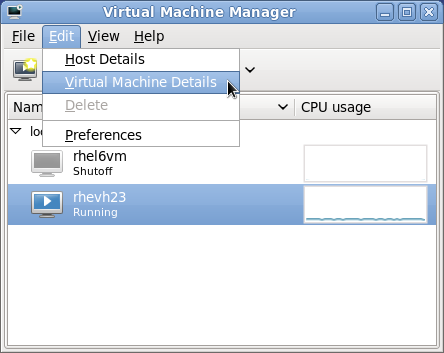
https://www.amazon.com/Voice-Desert-Valerio-Stefano-ebook/dp/B0CJLZ2QY5/
SITEMAP
Make a donation: IBAN: IT36M0708677020000000008016 - BIC/SWIFT: ICRAITRRU60 - VALERIO DI STEFANO or
Privacy Policy Cookie Policy Terms and Conditions
Guide to Virtualization on Red Hat Enterprise Linux 6
Edition 1
Legal Notice
1801 Varsity Drive
Raleigh, NC 27606-2072 USA
Phone: +1 919 754 3700
Phone: 888 733 4281
Fax: +1 919 754 3701
Abstract
- Preface
- 1. Introduction
- I. Requirements and limitations
- II. Installation
- III. Configuration
- 10. Network Configuration
- 11. KVM Para-virtualized Drivers
- 12. PCI passthrough
- 13. SR-IOV
- 14. KVM guest timing management
- IV. Administration
- 15. Server best practices
- 16. Security for virtualization
- 17. sVirt
- 18. KVM live migration
- 19. Remote management of virtualized guests
- 20. Overcommitting with KVM
- 21. KSM
- 22. Advanced virtualization administration
- 23. Migrating to KVM from other hypervisors using virt-v2v
- 24. Miscellaneous administration tasks
- 24.1. Automatically starting guests
- 24.2. Using qemu-img
- 24.3. Verifying virtualization extensions
- 24.4. Setting KVM processor affinities
- 24.5. Generating a new unique MAC address
- 24.6. Improving guest response time
- 24.7. Very Secure
ftpd - 24.8. Disable SMART disk monitoring for guests
- 24.9. Configuring a VNC Server
- 24.10. Gracefully shutting down guests
- 24.11. Virtual machine timer management with libvirt
- V. Virtualization storage topics
- VI. Virtualization reference guide
- 30. Managing guests with virsh
- 31. Managing guests with the Virtual Machine Manager (virt-manager)
- 31.1. Starting virt-manager
- 31.2. The Virtual Machine Manager main window
- 31.3. The virtual hardware details window
- 31.4. Virtual Machine graphical console
- 31.5. Adding a remote connection
- 31.6. Displaying guest details
- 31.7. Performance monitoring
- 31.8. Displaying CPU usage
- 31.9. Displaying Disk I/O
- 31.10. Displaying Network I/O
- 31.11. Managing a virtual network
- 31.12. Creating a virtual network
- 32. libvirt configuration reference
- 33. Creating custom libvirt scripts
- VII. Troubleshooting
- A. Additional resources
- Glossary
- B. Revision History
- C. Colophon
Preface
- System Requirements
- Installation
- Configuration
- Administration
- Reference
- Troubleshooting
- Appendixes
1. Document Conventions
1.1. Typographic Conventions
Mono-spaced Bold
To see the contents of the filemy_next_bestselling_novelin your current working directory, enter thecat my_next_bestselling_novelcommand at the shell prompt and press Enter to execute the command.
Press Enter to execute the command.Press Ctrl+Alt+F2 to switch to the first virtual terminal. Press Ctrl+Alt+F1 to return to your X-Windows session.
mono-spaced bold. For example:
File-related classes includefilesystemfor file systems,filefor files, anddirfor directories. Each class has its own associated set of permissions.
Choose → → from the main menu bar to launch Mouse Preferences. In the Buttons tab, click the Left-handed mouse check box and click to switch the primary mouse button from the left to the right (making the mouse suitable for use in the left hand).To insert a special character into a gedit file, choose → → from the main menu bar. Next, choose → from the Character Map menu bar, type the name of the character in the Search field and click . The character you sought will be highlighted in the Character Table. Double-click this highlighted character to place it in the Text to copy field and then click the button. Now switch back to your document and choose → from the gedit menu bar.
Mono-spaced Bold ItalicProportional Bold Italic
To connect to a remote machine using ssh, typesshat a shell prompt. If the remote machine isusername@domain.nameexample.comand your username on that machine is john, typessh john@example.com.Themount -o remountcommand remounts the named file system. For example, to remount thefile-system/homefile system, the command ismount -o remount /home.To see the version of a currently installed package, use therpm -qcommand. It will return a result as follows:package.package-version-release
Publican is a DocBook publishing system.
1.2. Pull-quote Conventions
mono-spaced roman and presented thus:
books Desktop documentation drafts mss photos stuff svn books_tests Desktop1 downloads images notes scripts svgs
mono-spaced roman but add syntax highlighting as follows:
package org.jboss.book.jca.ex1; import javax.naming.InitialContext; public class ExClient { public static void main(String args[]) throws Exception { InitialContext iniCtx = new InitialContext(); Object ref = iniCtx.lookup("EchoBean"); EchoHome home = (EchoHome) ref; Echo echo = home.create(); System.out.println("Created Echo"); System.out.println("Echo.echo('Hello') = " + echo.echo("Hello")); } }
1.3. Notes and Warnings
Note
Important
Warning
2. We need your feedback
6.
Chapter 1. Introduction
1.1. What is virtualization?
- Hardware-assisted virtualization is the technique used for full virtualization with KVM.
- Para-virtualization is a technique used by Xen to run Linux guests.
- Software virtualization or emulation. Software virtualization uses binary translation and other emulation techniques to run unmodified operating systems. Software virtualization is significantly slower than hardware-assisted virtualization or para-virtualization. Software virtualization, using QEMU without KVM, is unsupported by Red Hat Enterprise Linux.
1.2. KVM and virtualization in Red Hat Enterprise Linux
What is KVM?
(KVM) is a Full virtualization solution for Linux on AMD64 and Intel 64 hardware. KVM is a Linux kernel module built for the standard Red Hat Enterprise Linux 6 kernel. KVM can run multiple, unmodified virtualized guest Windows and Linux operating systems.The KVM hypervisor in Red Hat Enterprise Linux is managed with the libvirt API and tools built for libvirt,virt-manager and virsh. Virtualized guests are run as Linux processes and threads which are controlled by these modules.
virsh and virt-manager tools.
Overcommitting
The KVM hypervisor supports overcommitting virtualized CPUs and memory. Overcommitting means allocating more virtualized CPUs or memory than the available resources on the system. CPU overcommitting allows virtualized guests to run on fewer servers and in higher densities. Memory overcommitting allows hosts to utilize memory and virtual memory to increase guest densities.KSM
Kernel SamePage Merging (KSM) is used by the KVM hypervisor to allow KVM guests to share identical memory pages. These shared pages are usually common libraries or other identical, high-use data. KSM allows for greater guest density of identical or similar guest operating systems by avoiding memory duplication.1.3. libvirt and the libvirt tools
virsh
Thevirsh command-line tool is built on the libvirt management API and operates as an alternative to the graphical virt-manager application. The virsh command can be used in read-only mode by unprivileged users or, with root access, full administration functionality. The virsh command is ideal for scripting virtualization administration.
virsh command is included in the libvirt-client package.
virt-manager
virt-manager is a graphical desktop tool for managing virtualized guests. virt-manager can be used to perform virtualization administration, virtualized guest creation, migration and configuration tasks. virt-manager allows access to graphical guest consoles. virt-manager can view virtualized guests, host statistics, device information and performance graphs. virt-manager can manage the local hypervisor and remote hypervisors using the same interface and methods.
1.4. Virtualized hardware devices
- Emulated software devices.
- Para-virtualized devices.
- Physically shared devices.
1.4.1. Virtualized and emulated devices
Virtualized CPUs (VCPUs)
A system has a number of virtual CPUs (VCPUs) relative to the number of physical processor cores. The number of virtual CPUs is finite and represents the total number of virtual CPUs that can be assigned to guest virtual machines.Emulated graphics devices
Two emulated graphics devices are provided. These devices can be connected to with the SPICE protocol or with VNC.- The
ac97device emulates a Cirrus CLGD 5446 PCI VGA card. - The
vgadevice emulates a dummy VGA card with Bochs VESA extensions (hardware level, including all non-standard modes).
Emulated system components
Various core system components are emulated to provide basic system functions.- A Cirrus i440FX host PCI bridge.
- PIIX3 PCI to ISA bridge.
- A PS/2 mouse and keyboard.
- An EvTouch USB Graphics Tablet.
- A PCI UHCI USB controller and a virtualized USB hub.
- A PCI and ISA network adapters.
- Emulated serial ports.
Emulated sound devices
Two emulated sound devices are available:- The
ac97device emulates an Intel 82801AA AC97 Audio compatible sound card. - The
es1370device emulates an ENSONIQ AudioPCI ES1370 sound card.
Emulated network drivers
There are four emulated network drivers available for network devices:- The
e1000driver emulates an Intel E1000 network adaptor (Intel 82540EM, 82573L, 82544GC). - The
ne2k_pcidriver emulates a Novell NE2000 network adaptor. - The
pcnetdriver emulates an AMD Lance Am7990 network adaptor. - The
rtl8139driver emulates a Realtek 8139 network adaptor.
Emulated storage drivers
Storage devices and storage pools can use the emulated drivers to attach storage devices to virtualized guests. Alternatively, the para-virtualized drivers can be used.- The emulated IDE driver
- The KVM hypervisor provides two emulated PCI IDE interfaces. The emulated IDE driver can be used to attach any combination of up to four virtualized IDE hard disks or virtualized IDE CD-ROM drives to each virtualized guest. The emulated IDE driver is used for virtualized CD-ROM and DVD-ROM drives.
- The emulated floppy disk drive driver
- The emulated floppy disk drive driver is used for creating virtualized floppy drives.
1.4.2. Para-virtualized drivers
Para-virtualized network driver
The para-virtualized network driver is a Red Hat branded virtual network device. The para-virtualized network driver can be used as the driver for existing network devices or new network devices for virtualized guests.Para-virtualized block driver
The para-virtualized block driver is a driver for all storage devices supported by the hypervisor attached to the virtualized guest (except for floppy disk drives, which must be emulated).The para-virtualized clock
Guests using the Time Stamp Counter (TSC) as a clock source may suffer timing issues.The para-virtualized serial driver
The para-virtualized serial driver (virtio-serial) is a bytestream-oriented, character stream driver. The para-virtualized serial driver provides a simple communication interface between the host's user space and the guest's user space where networking is not available or unusable.The balloon driver
The balloon driver allows guests to express to the hypervisor how much memory they require. The balloon driver allows the host to efficiently allocate memory to the guest and allow free memory to be allocated to other guests and processes.1.4.3. Physically shared devices
PCI passthrough
The KVM hypervisor supports attaching PCI devices on the host system to virtualized guests. PCI passthrough allows guests to have exclusive access to PCI devices for a range of tasks. PCI passthrough allows PCI devices to appear and behave as if they were physically attached to the guest operating system.SR-IOV
SR-IOV (Single Root I/O Virtualization) is a standard for a type of PCI passthrough which natively shares a single device to multiple guests.- Virtualization-PF
- Virtualization VF
NPIV
N_Port ID Virtualization (NPIV) is a function available with some Fibre Channel devices. NPIV shares a single physical N_Port as multiple N_Port IDs. NPIV provides similar functionality for Host Bus Adaptors (HBAs) that SR-IOV provides for network interfaces. With NPIV, virtualized guests can be provided with a virtual Fibre Channel initiator to Storage Area Networks (SANs).1.5. Storage
Storage pools
A storage pool is a file, directory, or storage device managed by libvirt for the purpose of providing storage to virtualized guests. Storage pools are divided into storage volumes that store virtualized guest images or are attached to virtualized guests as additional storage.Local storage pools
Local storage pools are directly attached to the host server. Local storage pools include local directories, directly attached disks, and LVM volume groups on local devices.Networked (shared) storage pools
Networked storage pools covers storage devices shared over a network using standard protocols.Storage volumes
Storage pools are divided into storage volumes. Storage volumes are an abstraction of physical partitions, LVM logical volumes, file-based disk images and other storage types handled by libvirt. Storage volumes are presented to virtualized guests as local storage devices regardless of the underlying hardware.1.6. Virtualization security features
SELinux
SELinux was developed by the US National Security Agency and others to provide Mandatory Access Control (MAC) for Linux. All processes and files are given a type and access is limited by fine-grained controls. SELinux limits an attackers abilities and works to prevent many common security exploits such as buffer overflow attacks and privilege escalation.sVirt
sVirt is a technology included in Red Hat Enterprise Linux 6 that integrates SELinux and virtualization. sVirt applies Mandatory Access Control (MAC) to improve security when using virtualized guests. sVirt improves security and hardens the system against bugs in the hypervisor that might be used as an attack vector for the host or to another virtualized guest.1.7. Migration
- Load balancing - guests can be moved to hosts with lower usage when a host becomes overloaded.
- Hardware failover - when hardware devices on the host start to fail, guests can be safely relocated so the host can be powered down and repaired.
- Energy saving - guests can be redistributed to other hosts and host systems powered off to save energy and cut costs in low usage periods.
- Geographic migration - guests can be moved to another location for lower latency or in serious circumstances.
Offline migration
An offline migration suspends the guest then moves an image of the guest's memory to the destination host. The guest is resumed on the destination host and then memory the guest used on the source host is freed.Live migration
Live migration is the process of migrating a running guest from one physical host to another physical host.1.8. V2V
virt-v2v tool converts and imports virtual machines from Xen, other versions of KVM and VMware ESX.
Part I. Requirements and limitations
System requirements, support restrictions and limitations for virtualization with Red Hat Enterprise Linux 6
Chapter 2. System requirements
Minimum system requirements
- 6GB free disk space
- 2GB of RAM.
Recommended system requirements
- 6GB plus the required disk space recommended by the guest operating system per guest. For most operating systems more than 6GB of disk space is recommended.
- One processor core or hyper-thread for each virtualized CPU and one for the hypervisor.
- 2GB of RAM plus additional RAM for virtualized guests.
KVM overcommit
KVM requirements
The KVM hypervisor requires:- an Intel processor with the Intel VT and the Intel 64 extensions, or
- an AMD processor with the AMD-V and the AMD64 extensions.
Storage support
The working guest storage methods are:- files on local storage,
- physical disk partitions,
- locally connected physical LUNs,
- LVM partitions,
- NFS shared file systems,
- iSCSI,
- GFS2 clustered file systems, and
- Fibre Channel-based LUNs
- SRP devices (SCSI RDMA Protocol), the block export protocol used in Infiniband and 10GbE iWARP adapters.
File-based guest storage
/var/lib/libvirt/images/ folder. If you use a different directory you must add the directory to the SELinux policy. Refer to Section 16.2, “SELinux and virtualization” for details.
Chapter 3. KVM compatibility
| Operating system | Support level |
|---|---|
| Red Hat Enterprise Linux 3 x86 | Optimized with para-virtualized drivers |
| Red Hat Enterprise Linux 4 x86 | Optimized with para-virtualized drivers |
| Red Hat Enterprise Linux 4 AMD 64 and Intel 64 | Optimized with para-virtualized drivers |
| Red Hat Enterprise Linux 5 x86 | Optimized with para-virtualized drivers |
| Red Hat Enterprise Linux 5 AMD 64 and Intel 64 | Optimized with para-virtualized drivers |
| Red Hat Enterprise Linux 6 x86 | Optimized with para-virtualized drivers |
| Red Hat Enterprise Linux 6 AMD 64 and Intel 64 | Optimized with para-virtualized drivers |
| Fedora 12 x86 | Optimized with para-virtualized drivers |
| Fedora 12 AMD 64 and Intel 64 | Optimized with para-virtualized drivers |
| Fedora 13 x86 | Optimized with para-virtualized drivers |
| Fedora 13 AMD 64 and Intel 64 | Optimized with para-virtualized drivers |
| Windows Server 2003 R2 32-Bit | Optimized with para-virtualized drivers |
| Windows Server 2003 R2 64-Bit | Optimized with para-virtualized drivers |
| Windows Server 2003 Service Pack 2 32-Bit | Optimized with para-virtualized drivers |
| Windows Server 2003 Service Pack 2 64-Bit | Optimized with para-virtualized drivers |
| Windows XP 32-Bit | Optimized with para-virtualized drivers |
| Windows Vista 32-Bit | Supported |
| Windows Vista 64-Bit | Supported |
| Windows Server 2008 32-Bit | Optimized with para-virtualized drivers |
| Windows Server 2008 (and R2) 64-Bit | Optimized with para-virtualized drivers |
| Windows 7 32-Bit | Optimized with para-virtualized drivers |
| Windows 7 64-Bit | Optimized with para-virtualized drivers |
Chapter 4. Virtualization limitations
4.1. General limitations for virtualization
Other limitations
For the list of all other limitations and issues affecting virtualization read the Red Hat Enterprise Linux 6 Release Notes. The Red Hat Enterprise Linux 6 Release Notes cover the present new features, known issues and limitations as they are updated or discovered.Test before deployment
You should test for the maximum anticipated load and virtualized network stress before deploying heavy I/O applications. Stress testing is important as there are performance drops caused by virtualization with increased I/O usage.4.2. KVM limitations
- Maximum VCPUs per guest
- Virtualized guests support up to a maximum of 64 virtualized CPUs in Red Hat Enterprise Linux 6.0.
- Constant TSC bit
- Systems without a Constant Time Stamp Counter require additional configuration. Refer to Chapter 14, KVM guest timing management for details on determining whether you have a Constant Time Stamp Counter and configuration steps for fixing any related issues.
- Memory overcommit
- KVM supports memory overcommit and can store the memory of guests in swap. A guest will run slower if it is swapped frequently. When KSM is used, make sure that the swap size is the size of the overcommit ratio.
- CPU overcommit
- It is not recommended to have more than 10 virtual CPUs per physical processor core. Any number of overcommitted virtual CPUs above the number of physical processor cores may cause problems with certain virtualized guests.Overcommitting CPUs has some risk and can lead to instability. Refer to Chapter 20, Overcommitting with KVM for tips and recommendations on overcommitting CPUs.
- Virtualized SCSI devices
- SCSI emulation is limited to 16 virtualized (emulated) SCSI devices..
- Virtualized IDE devices
- KVM is limited to a maximum of four virtualized (emulated) IDE devices per guest.
- Para-virtualized devices
- Para-virtualized devices, which use the
virtiodrivers, are PCI devices. Presently, guests are limited to a maximum of 32 PCI devices. Some PCI devices are critical for the guest to run and these devices cannot be removed. The default, required devices are:- the host bridge,
- the ISA bridge and usb bridge (The usb and isa bridges are the same device),
- the graphics card (using either the Cirrus or qxl driver), and
- the memory balloon device.
Out of the 32 available PCI devices for a guest 4 are not removable. This means there are only 28 PCI slots available for additional devices per guest. Every para-virtualized network or block device uses one slot. Each guest can use up to 28 additional devices made up of any combination of para-virtualized network, para-virtualized disk devices, or other PCI devices using VT-d. - Migration limitations
- Live migration is only possible with CPUs from the same vendor (that is, Intel to Intel or AMD to AMD only).The No eXecution (NX) bit must be set to on or off for both CPUs for live migration.
- Storage limitations
- The host should not use disk labels to identify file systems in the
fstabfile, theinitrdfile or used by the kernel command line. If less privileged users, especially virtualized guests, have write access to whole partitions or LVM volumes the host system could be compromised.Guest should not be given write access to whole disks or block devices (for example,/dev/sdb). Virtualized guests with access to block devices may be able to access other block devices on the system or modify volume labels which can be used to compromise the host system. Use partitions (for example,/dev/sdb1) or LVM volumes to prevent this issue. - SR-IOV limitations
- SR-IOV is only supported with the following devices:Intel® 82576NS Gigabit Ethernet Controller (
igbdriver)Intel® 82576EB Gigabit Ethernet Controller (igbdriver)Neterion X3100 Series 10GbE PCIe (vxgedriver)Intel® 82599ES 10 Gigabit Ethernet Controller (ixgbedriver)Intel® 82599EB 10 Gigabit Ethernet Controller (ixgbedriver) - PCI passthrough limitations
- PCI passthrough (attaching PCI devices to guests) should work on systems with the AMD IOMMU or Intel VT-d technologies.
4.3. Application limitations
- kdump server
- netdump server
Part II. Installation
Virtualization installation topics
Table of Contents
Chapter 5. Installing the virtualization packages
yum command and the Red Hat Network (RHN).
5.1. Installing KVM with a new Red Hat Enterprise Linux installation
Need help installing?
- Start an interactive Red Hat Enterprise Linux installation from the Red Hat Enterprise Linux Installation CD-ROM, DVD or PXE.
- You must enter a valid installation number when prompted to receive access to the virtualization and other Advanced Platform packages.
- Complete the other steps up to the package selection step.
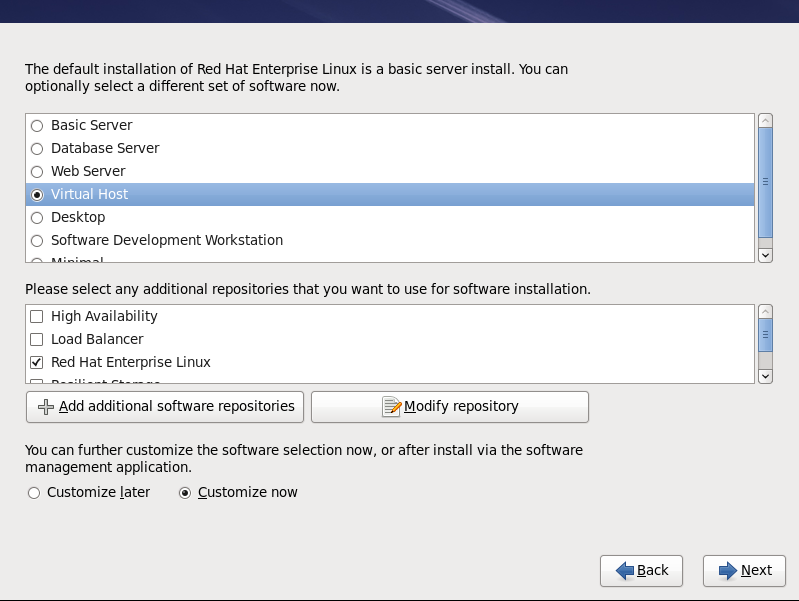 Select the Virtual Host server role to install a platform for virtualized guests. Alternatively, select the Customize Now radio button to specify individual packages.
Select the Virtual Host server role to install a platform for virtualized guests. Alternatively, select the Customize Now radio button to specify individual packages. - Select the Virtualization package group. This selects the KVM hypervisor,
virt-manager,libvirtandvirt-viewerfor installation.
Customize the packages (if required)
Customize the Virtualization group if you require other virtualization packages.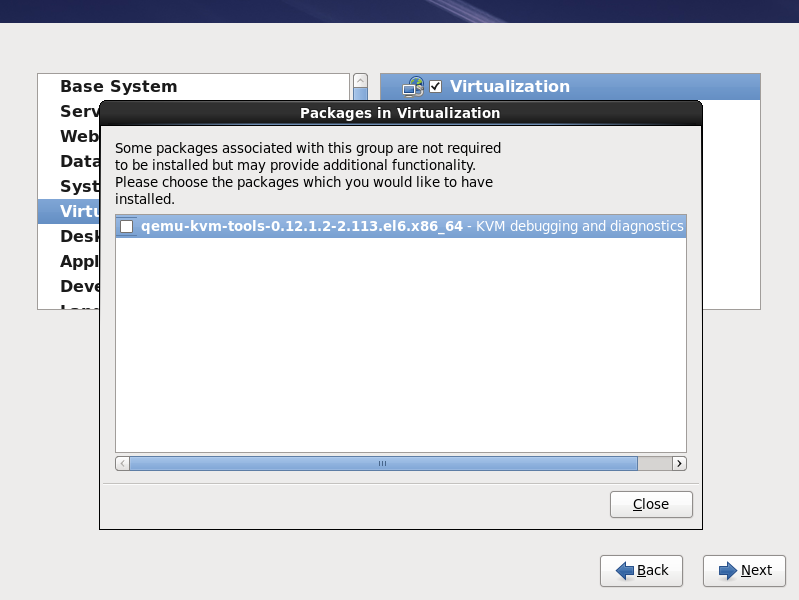 Press the Close button then the Next button to continue the installation.
Press the Close button then the Next button to continue the installation.
Note
Installing KVM packages with Kickstart files
This section describes how to use a Kickstart file to install Red Hat Enterprise Linux with the KVM hypervisor packages. Kickstart files allow for large, automated installations without a user manually installing each individual system. The steps in this section will assist you in creating and using a Kickstart file to install Red Hat Enterprise Linux with the virtualization packages.%packages section of your Kickstart file, append the following package group:
%packages @kvm
5.2. Installing KVM packages on an existing Red Hat Enterprise Linux system
Adding packages to your list of Red Hat Network entitlements
This section describes how to enable Red Hat Network (RHN) entitlements for the virtualization packages. You need these entitlements enabled to install and update the virtualization packages on Red Hat Enterprise Linux. You require a valid Red Hat Network account in order to install virtualization packages on Red Hat Enterprise Linux.rhn_register command and follow the prompts.
Procedure 5.1. Adding the Virtualization entitlement with RHN
- Log in to RHN using your RHN username and password.
- Select the systems you want to install virtualization on.
- In the System Properties section the present systems entitlements are listed next to the Entitlements header. Use the link to change your entitlements.
- Select the checkbox.
Installing the KVM hypervisor with yum
To use virtualization on Red Hat Enterprise Linux you require the kvm package. The kvm package contains the KVM kernel module providing the KVM hypervisor on the default Red Hat Enterprise Linux kernel.
kvm package, run:
# yum install kvm
Recommended virtualization packages:
- python-virtinst
- Provides the
virt-installcommand for creating virtual machines. - libvirt
- The libvirt package provides the server and host side libraries for interacting with hypervisors and host systems. The libvirt package provides the
libvirtddaemon that handles the library calls, manages virtualizes guests and controls the hypervisor. - libvirt-python
- The libvirt-python package contains a module that permits applications written in the Python programming language to use the interface supplied by the libvirt API.
- virt-manager
virt-manager, also known as Virtual Machine Manager, provides a graphical tool for administering virtual machines. It uses libvirt-client library as the management API.- libvirt-client
- The libvirt-client package provides the client-side APIs and libraries for accessing libvirt servers. The libvirt-client package includes the
virshcommand line tool to manage and control virtualized guests and hypervisors from the command line or a special virtualization shell.
# yum install virt-manager libvirt libvirt-python python-virtinst libvirt-client
Chapter 6. Virtualized guest installation overview
virt-install. Both methods are covered by this chapter.
- Red Hat Enterprise Linux 5.
- Para-virtualized Red Hat Enterprise Linux 6 on Red Hat Enterprise Linux 5: Chapter 8, Installing Red Hat Enterprise Linux 6 as a para-virtualized guest on Red Hat Enterprise Linux 5
- Red Hat Enterprise Linux 6: Chapter 7, Installing Red Hat Enterprise Linux 6 as a virtualized guest
- Microsoft Windows operating systems: Chapter 9, Installing a fully-virtualized Windows guest
6.1. Virtualized guest prerequisites and considerations
- Performance
- Input/output requirements and types of input/output.
- Storage.
- Networking and network infrastructure.
- Guest load and usage for processor and memory resources.
6.2. Creating guests with virt-install
virt-install command to create virtualized guests from the command line. virt-install is used either interactively or as part of a script to automate the creation of virtual machines. Using virt-install with Kickstart files allows for unattended installation of virtual machines.
virt-install tool provides a number of options one can pass on the command line. To see a complete list of options run:
$ virt-install --help
virt-install man page also documents each command option and important variables.
qemu-img is a related command which may be used before virt-install to configure storage options.
--vnc option which opens a graphical window for the guest's installation.
Example 6.1. Using virt-install to install a RHEL 5 guest
- Uses LVM partitioning
- Is a plain QEMU guest
- Uses virtual networking
- Boots from PXE
- Uses VNC server/viewer
# virt-install \ --network network:default \ --name rhel5support --ram=756\ --file=/var/lib/libvirt/images/rhel5support.img \ --file-size=6 --vnc --cdrom=/dev/sr0
man virt-install for more examples.
6.3. Creating guests with virt-manager
virt-manager, also known as Virtual Machine Manager, is a graphical tool for creating and managing virtualized guests.
Procedure 6.1. Creating a virtualized guest with virt-manager
Open virt-manager
Startvirt-manager. Launch the application from the menu and submenu. Alternatively, run thevirt-managercommand as root.Optional: Open a remote hypervisor
Select the hypervisor and press the button to connect to the remote hypervisor.Create a new guest
The virt-manager window allows you to create a new virtual machine. Click the button (Figure 6.1, “Virtual Machine Manager window”) to open the wizard.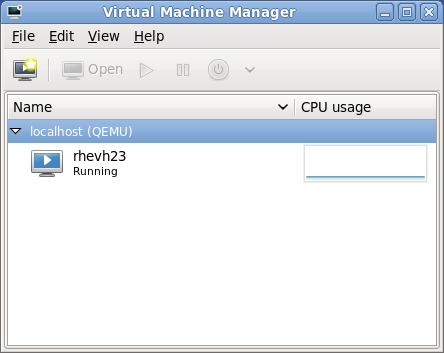
Figure 6.1. Virtual Machine Manager window
New VM wizard
The wizard breaks down the guest creation process into five steps:- Naming the guest and choosing the installation type
- Locating and configuring the installation media
- Configuring memory and CPU options
- Configuring the guest's storage
- Configuring networking, hypervisor type, architecture, and other hardware settings
Ensure thatvirt-managercan access the installation media (whether locally or over the network).Specify name and installation type
The guest creation process starts with the selection of a name and installation type. Virtual machine names can have underscores (_), periods (.), and hyphens (-).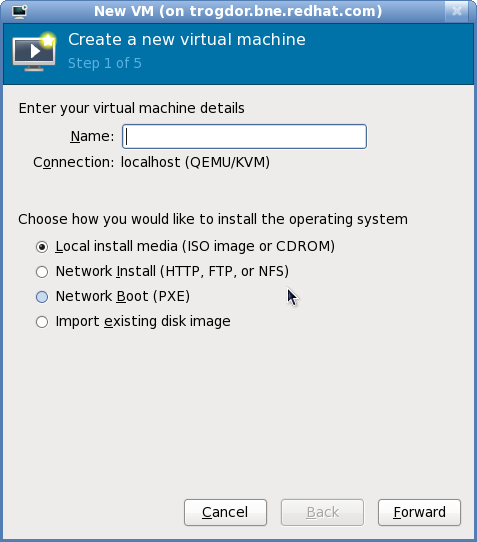
Figure 6.2. Step 1
Type in a virtual machine name and choose an installation type:- Local install media (ISO image or CDROM)
- This method uses a CD-ROM, DVD, or image of an installation disk (e.g.
.iso). - Network Install (HTTP, FTP, or NFS)
- Network installing involves the use of a mirrored Red Hat Enterprise Linux or Fedora installation tree to install a guest. The installation tree must be accessible through either HTTP, FTP, or NFS.
- Network Boot (PXE)
- This method uses a Preboot eXecution Environment (PXE) server to install the guest. Setting up a PXE server is covered in the Deployment Guide. To install via network boot, the guest must have a routable IP address or shared network device. For information on the required networking configuration for PXE installation, refer to Chapter 10, Network Configuration.
- Import existing disk image
- This method allows you to create a new guest and import a disk image (containing a pre-installed, bootable operating system) to it.
Click to continue.Configure installation
Next, configure the and of the installation. Except for network booting, this step also requires further configuration (depending on your chosen installation method). When using local install media or importing an existing disk image, you need to specify the location of the installation media or disk image.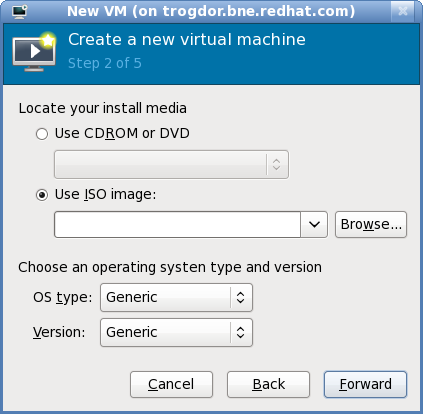
Figure 6.3. Local install media (configuration)
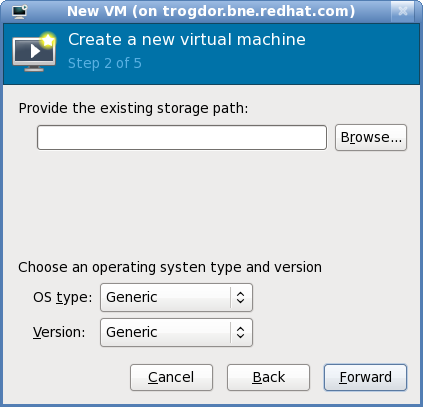
Figure 6.4. Import existing disk image (configuration)
Important
It is recommend that you use the default directory for virtual machine images,/var/lib/libvirt/images/. If you are using a different location, make sure it is added to your SELinux policy and relabeled before you continue with the installation. Refer to Section 16.2, “SELinux and virtualization” for details on how to do this.When performing a network install, you need to specify the URL of the installation tree. You can also specify the URL of any kickstart files you want to use, along with any kernel options you want to pass during installation.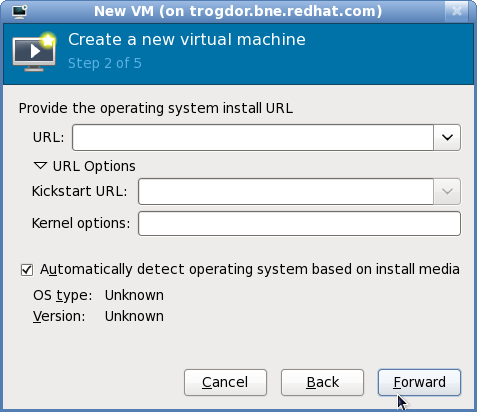
Figure 6.5. Network Install (configuration)
Click to continue.Configure CPU and memory
The next step involves configuring the number of CPUs and amount of memory to allocate to the virtual machine. The wizard shows the number of CPUs and amount of memory you can allocate; configure these settings and click .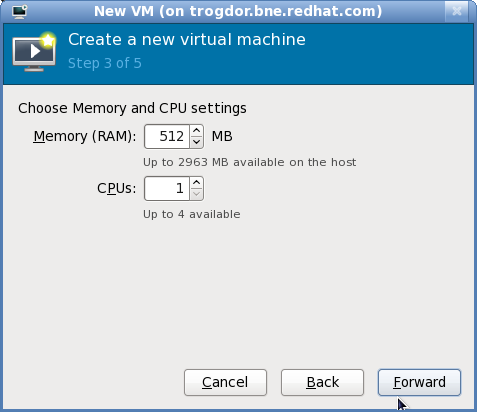
Figure 6.6. Configuring CPU and Memory
Configure storage
Assign a physical storage device (Block device) or a file-based image (File). File-based images should be stored in/var/lib/libvirt/images/to satisfy default SELinux permissions.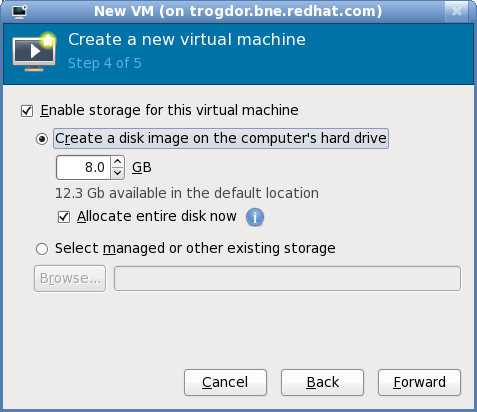
Figure 6.7. Configuring virtual storage
If you chose to import an existing disk image during the first step,virt-managerwill skip this step.Assign sufficient space for your virtualized guest and any applications the guest requires, then click to continue.Final configuration
Verify the settings of the virtual machine and click when you are satisfied; doing so will create the guest with default networking settings, virtualization type, and architecture.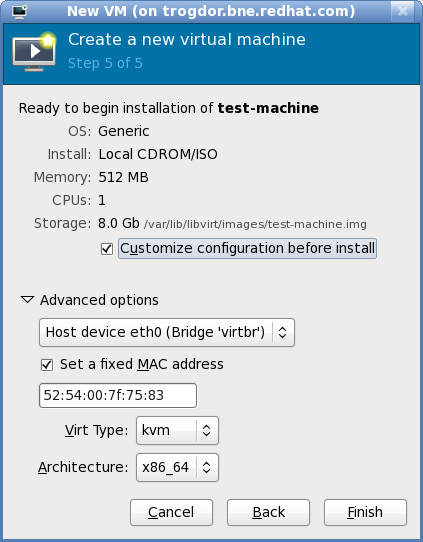
Figure 6.8. Verifying the configuration
If you prefer to further configure the virtual machine's hardware first, check the box first before clicking . Doing so will open another wizard Figure 6.9, “Virtual hardware configuration” that will allow you to add, remove, and configure the virtual machine's hardware settings.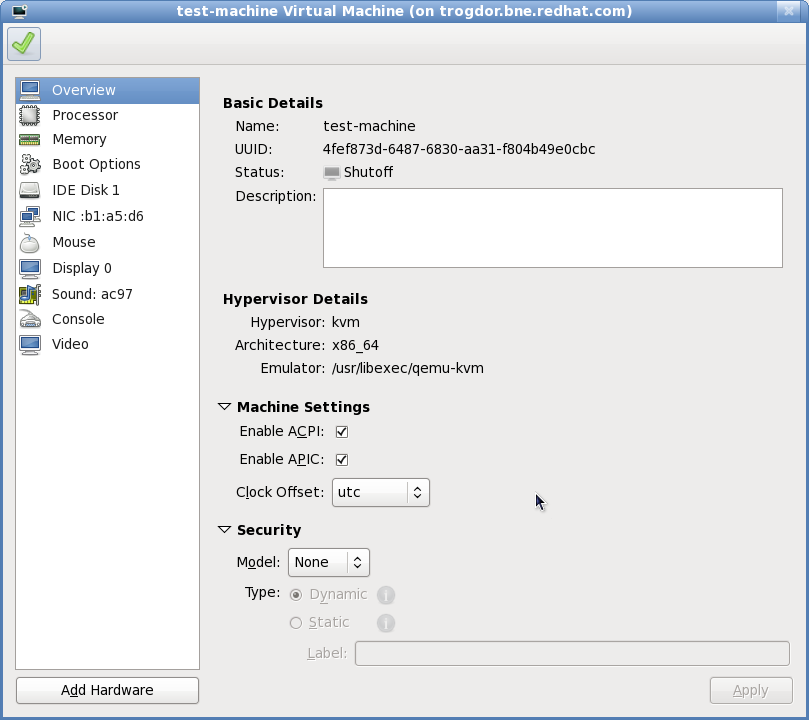
Figure 6.9. Virtual hardware configuration
After configuring the virtual machine's hardware, click .virt-managerwill then create the guest with your specified hardware settings.
virt-manager. Chapter 6, Virtualized guest installation overview contains step-by-step instructions to installing a variety of common operating systems.
6.4. Installing guests with PXE
Create a new bridge
- Create a new network script file in the
/etc/sysconfig/network-scripts/directory. This example creates a file namedifcfg-installationwhich makes a bridge namedinstallation.# cd /etc/sysconfig/network-scripts/ # vim ifcfg-installation DEVICE=installation TYPE=Bridge BOOTPROTO=dhcp ONBOOT=yes
Warning
The line,TYPE=Bridge, is case-sensitive. It must have uppercase 'B' and lower case 'ridge'. - Start the new bridge by restarting the network service. The
ifup installationcommand can start the individual bridge but it is safer to test the entire network restarts properly.# service network restart
- There are no interfaces added to the new bridge yet. Use the
brctl showcommand to view details about network bridges on the system.# brctl show bridge name bridge id STP enabled interfaces installation 8000.000000000000 no virbr0 8000.000000000000 yes
Thevirbr0bridge is the default bridge used bylibvirtfor Network Address Translation (NAT) on the default Ethernet device.
Add an interface to the new bridge
Edit the configuration file for the interface. Add theBRIDGEparameter to the configuration file with the name of the bridge created in the previous steps.# Intel Corporation Gigabit Network Connection DEVICE=eth1 BRIDGE=installation BOOTPROTO=dhcp HWADDR=00:13:20:F7:6E:8E ONBOOT=yes
After editing the configuration file, restart networking or reboot.# service network restart
Verify the interface is attached with thebrctl showcommand:# brctl show bridge name bridge id STP enabled interfaces installation 8000.001320f76e8e no eth1 virbr0 8000.000000000000 yes
Security configuration
Configureiptablesto allow all traffic to be forwarded across the bridge.# iptables -I FORWARD -m physdev --physdev-is-bridged -j ACCEPT # service iptables save # service iptables restart
Disable iptables on bridges
Alternatively, prevent bridged traffic from being processed byiptablesrules. In/etc/sysctl.confappend the following lines:net.bridge.bridge-nf-call-ip6tables = 0 net.bridge.bridge-nf-call-iptables = 0 net.bridge.bridge-nf-call-arptables = 0
Reload the kernel parameters configured withsysctl.# sysctl -p /etc/sysctl.conf
Restart libvirt before the installation
Restart thelibvirtdaemon.# service libvirtd reload
PXE installation with virt-install
Forvirt-install append the --network=bridge:installation installation parameter where installation is the name of your bridge. For PXE installations use the --pxe parameter.
Example 6.2. PXE installation with virt-install
# virt-install --hvm --connect qemu:///system \
--network=bridge:installation --pxe\
--name EL10 --ram=756 \
--vcpus=4
--os-type=linux --os-variant=rhel5
--file=/var/lib/libvirt/images/EL10.img \
PXE installation with virt-manager
The steps below are the steps that vary from the standardvirt-manager installation procedures.
Select PXE
Select PXE as the installation method.
Select the bridge
Select Shared physical device and select the bridge created in the previous procedure.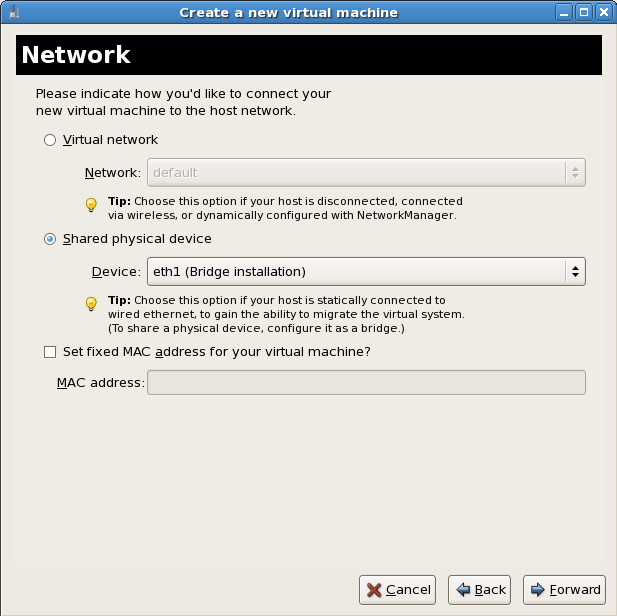
Start the installation
The installation is ready to start.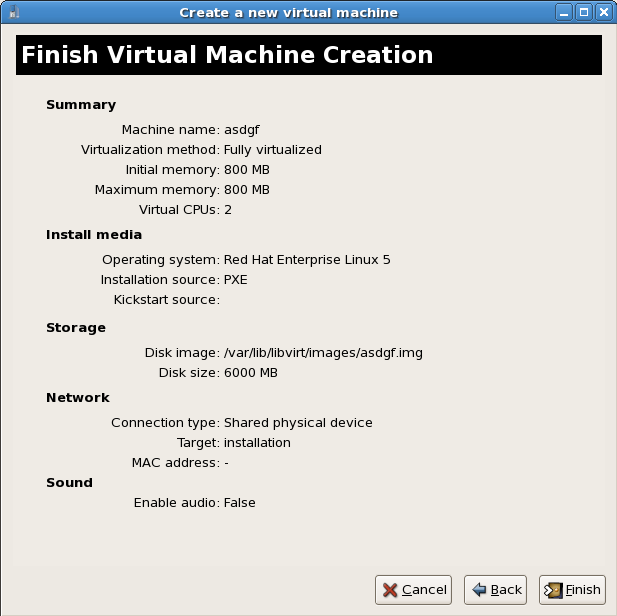
Chapter 7. Installing Red Hat Enterprise Linux 6 as a virtualized guest
7.1. Creating a Red Hat Enterprise Linux 6 guest with local installation media
Procedure 7.1. Creating a Red Hat Enterprise Linux 6 guest with virt-manager
Optional: Preparation
Prepare the storage environment for the virtualized guest. For more information on preparing storage, refer to Part V, “Virtualization storage topics”.Note
Various storage types may be used for storing virtualized guests. However, for a guest to be able to use migration features the guest must be created on networked storage.Red Hat Enterprise Linux 6 requires at least 1GB of storage space. However, Red Hat recommends at least 5GB of storage space for a Red Hat Enterprise Linux 6 installation and for the procedures in this guide.Open virt-manager and start the wizard
Open virt-manager by executing the virt-manager command as root or opening Applications -> System Tools -> Virtual Machine Manager.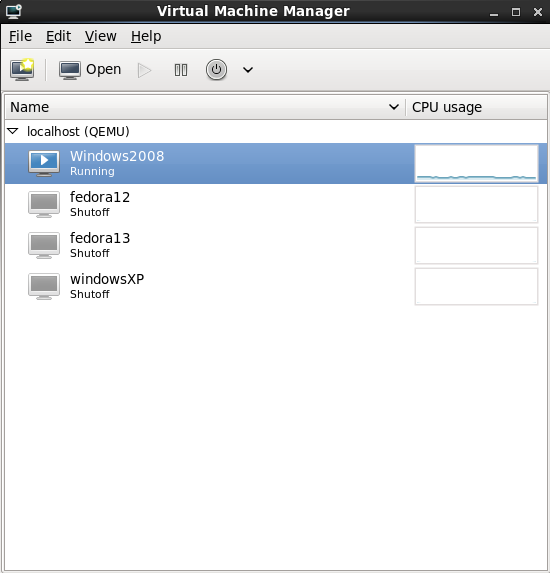
Figure 7.1. The main virt-manager window
Press the (see figure Figure 7.2, “The create new virtualized guest button”) to start the new virtualized guest wizard.
Figure 7.2. The create new virtualized guest button
The Create a new virtual machine window opens.Name the virtualized guest
Guest names can contain letters, numbers and the following characters: '_', '.' and '-'. Guest names must be unique for migration.Choose the Local install media (ISO image or CDROM) radio button.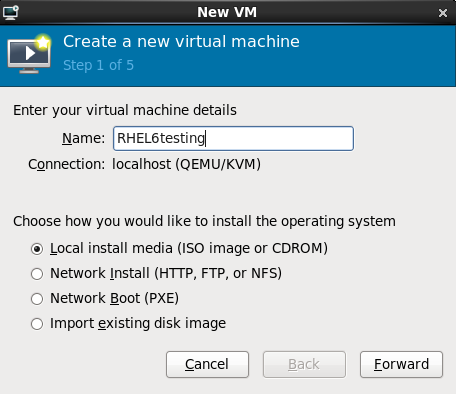
Figure 7.3. The Create a new virtual machine window - Step 1
Press to continue.Select the installation media
Select the installation ISO image location or a DVD drive with the installation disc inside. This example uses an ISO file image of the Red Hat Enterprise Linux 6.0 installation DVD image.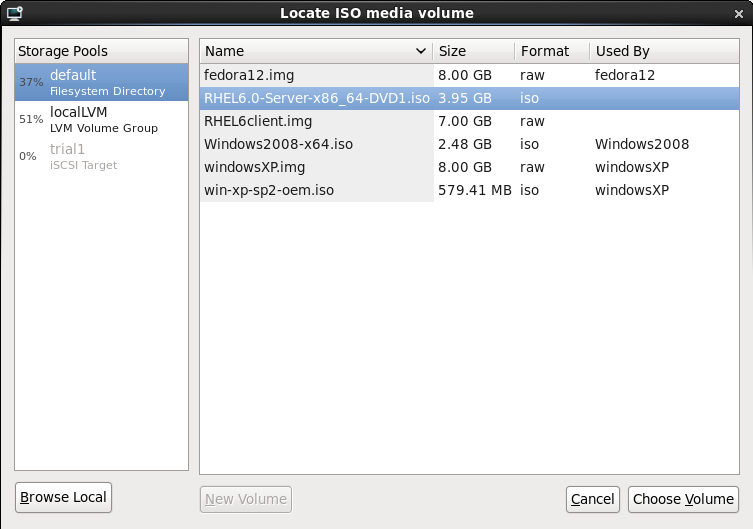
Figure 7.4. The Locate ISO media volume window
Image files and SELinux
For ISO image files and guest storage images, the recommended directory to use is the/var/lib/libvirt/images/directory. Any other location may require additional configuration for SELinux, refer to Section 16.2, “SELinux and virtualization” for details.Select the operating system type and version which match the installation media you have selected.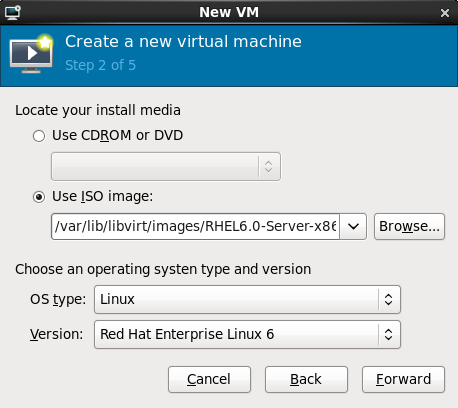
Figure 7.5. The Create a new virtual machine window - Step 2
Press to continue.Set RAM and virtual CPUs
Choose appropriate values for the virtualized CPUs and RAM allocation. These values affect the host's and guest's performance. Memory and virtualized CPUs can be overcommitted, for more information on overcommitting refer to Chapter 20, Overcommitting with KVM.Virtualized guests require sufficient physical memory (RAM) to run efficiently and effectively. Red Hat supports a minimum of 512MB of RAM for a virtualized guest. Red Hat recommends at least 1024MB of RAM for each logical core.Assign sufficient virtual CPUs for the virtualized guest. If the guest runs a multithreaded application, assign the number of virtualized CPUs the guest will require to run efficiently.You cannot assign more virtual CPUs than there are physical processors (or hyper-threads) available on the host system. The number of virtual CPUs available is noted in the Up toXavailable field.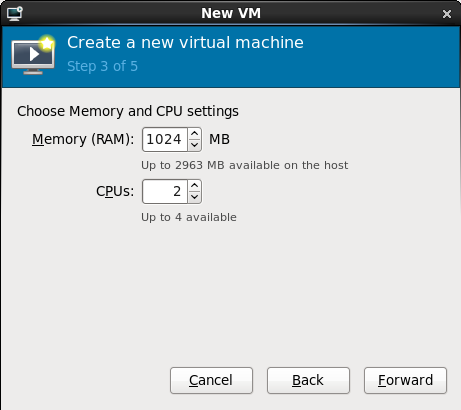
Figure 7.6. The Create a new virtual machine window - Step 3
Press to continue.Storage
Enable and assign storage for the Red Hat Enterprise Linux 6 guest. Assign at least 5GB for a desktop installation or at least 1GB for a minimal installation.Migration
Live and offline migrations require guests to be installed on shared network storage. For information on setting up shared storage for guests refer to Part V, “Virtualization storage topics”.With the default local storage
Select the Create a disk image on the computer's hard drive radio button to create a file-based image in the default storage pool, the/var/lib/libvirt/images/directory. Enter the size of the disk image to be created. If the Allocate entire disk now check box is selected, a disk image of the size specified will be created immediately. If not, the disk image will grow as it becomes filled.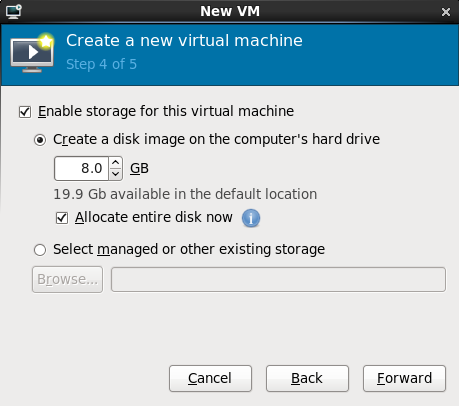
Figure 7.7. The Create a new virtual machine window - Step 4
With a storage pool
Select Select managed or other existing storage to use a storage pool.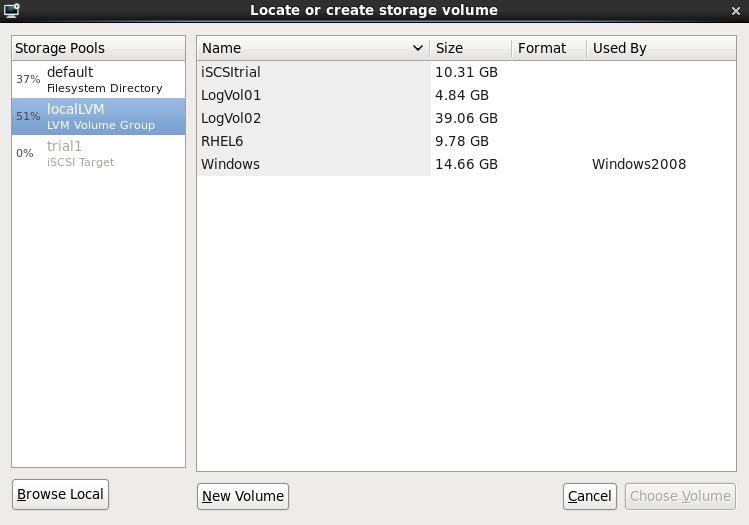
Figure 7.8. The Locate or create storage volume window
- Press the browse button to open the storage pool browser.
- Select a storage pool from the Storage Pools list.
- Optional: Press the New Volume button to create a new storage volume. Enter the name of the new storage volume.
- Press the Choose Volume button to select the volume for the virtualized guest.
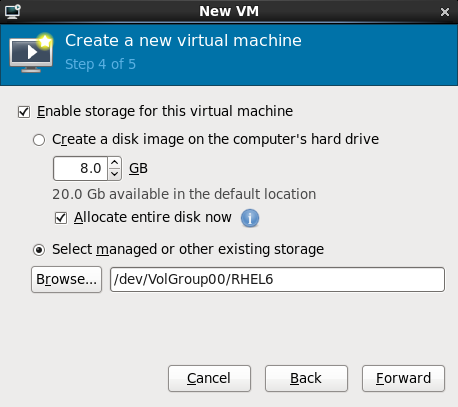
Figure 7.9. The Create a new virtual machine window - Step 4
Press to continue.Verify and finish
Verify there were no errors made during the wizard and everything appears as expected.Select the Customize configuration before install check box to change the guest's storage or network devices, to use the para-virtualized drivers or, to add additional devices.Press the Advanced options down arrow to inspect and modify advanced options. For a standard Red Hat Enterprise Linux 6 none of these options require modification.
Figure 7.10. The Create a new virtual machine window - Step 5
Press to continue into the Red Hat Enterprise Linux installation sequence. For more information on installing Red Hat Enterprise Linux 6 refer to the Red Hat Enterprise Linux 6 Installation Guide.
7.2. Creating a Red Hat Enterprise Linux 6 guest with a network installation tree
Procedure 7.2. Creating a Red Hat Enterprise Linux 6 guest with virt-manager
Optional: Preparation
Prepare the storage environment for the virtualized guest. For more information on preparing storage, refer to Part V, “Virtualization storage topics”.Note
Various storage types may be used for storing virtualized guests. However, for a guest to be able to use migration features the guest must be created on networked storage.Red Hat Enterprise Linux 6 requires at least 1GB of storage space. However, Red Hat recommends at least 5GB of storage space for a Red Hat Enterprise Linux 6 installation and for the procedures in this guide.Open virt-manager and start the wizard
Open virt-manager by executing the virt-manager command as root or opening Applications -> System Tools -> Virtual Machine Manager.
Figure 7.11. The main virt-manager window
Press the (see figure Figure 7.12, “The create new virtualized guest button”) to start the new virtualized guest wizard.
Figure 7.12. The create new virtualized guest button
The Create a new virtual machine window opens.Name the virtualized guest
Guest names can contain letters, numbers and the following characters: '_', '.' and '-'. Guest names must be unique for migration.Choose the installation method from the list of radio buttons.
Figure 7.13. The Create a new virtual machine window - Step 1
Press to continue.
7.3. Creating a Red Hat Enterprise Linux 6 guest with PXE
Procedure 7.3. Creating a Red Hat Enterprise Linux 6 guest with virt-manager
Optional: Preparation
Prepare the storage environment for the virtualized guest. For more information on preparing storage, refer to Part V, “Virtualization storage topics”.Note
Various storage types may be used for storing virtualized guests. However, for a guest to be able to use migration features the guest must be created on networked storage.Red Hat Enterprise Linux 6 requires at least 1GB of storage space. However, Red Hat recommends at least 5GB of storage space for a Red Hat Enterprise Linux 6 installation and for the procedures in this guide.Open virt-manager and start the wizard
Open virt-manager by executing the virt-manager command as root or opening Applications -> System Tools -> Virtual Machine Manager.
Figure 7.14. The main virt-manager window
Press the (see figure Figure 7.15, “The create new virtualized guest button”) to start the new virtualized guest wizard.
Figure 7.15. The create new virtualized guest button
The Create a new virtual machine window opens.Name the virtualized guest
Guest names can contain letters, numbers and the following characters: '_', '.' and '-'. Guest names must be unique for migration.Choose the installation method from the list of radio buttons.
Figure 7.16. The Create a new virtual machine window - Step 1
Press to continue.
Chapter 8. Installing Red Hat Enterprise Linux 6 as a para-virtualized guest on Red Hat Enterprise Linux 5
Important note on para-virtualization
8.1. Using virt-install
virt-install command. For instructions on virt-manager, refer to the procedure in Section 8.2, “Using virt-manager”.
Automating with virt-install
virt-install tool. The --vnc option shows the graphical installation. The name of the guest in the example is rhel6PV, the disk image file is rhel6PV.img and a local mirror of the Red Hat Enterprise Linux 6 installation tree is http://example.com/installation_tree/RHEL6-x86/. Replace those values with values for your system and network.
# virt-install --namerhel6PV\ --disk /var/lib/libvirt/images/rhel6PV.img,size=5 \ --vnc --paravirt --vcpus=2 --ram=1024 \ -location=http://example.com/installation_tree/RHEL6-x86/
http://example.com/kickstart/ks.cfg, to fully automate the installation.
# virt-install --namerhel6PV\ --disk /var/lib/libvirt/images/rhel6PV.img,size=5 \ --nographics --paravirt --vcpus=2 --ram=1024 \ -location=http://example.com/installation_tree/RHEL6-x86/ \ -x "ks=http://example.com/kickstart/ks.cfg"
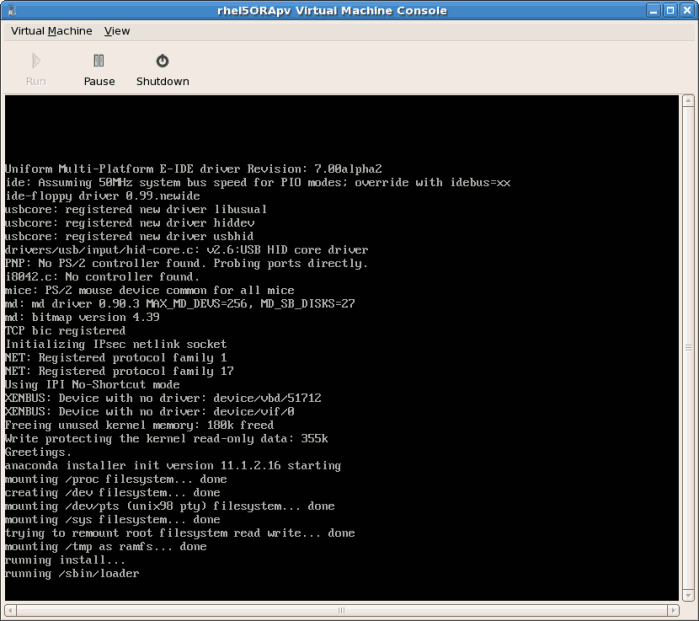
8.2. Using virt-manager
Procedure 8.1. Creating a para-virtualized Red Hat Enterprise Linux 6 guest with virt-manager
Open virt-manager
Startvirt-manager. Launch the application from the menu and submenu. Alternatively, run thevirt-managercommand as root.Select the hypervisor
Select the hypervisor. Note that presently the KVM hypervisor is namedqemu.Connect to a hypervisor if you have not already done so. Open the File menu and select the Add Connection... option. Refer to Section 31.5, “Adding a remote connection”.Once a hypervisor connection is selected the New button becomes available. Press the New button.Start the new virtual machine wizard
Pressing the New button starts the virtual machine creation wizard.Press to continue.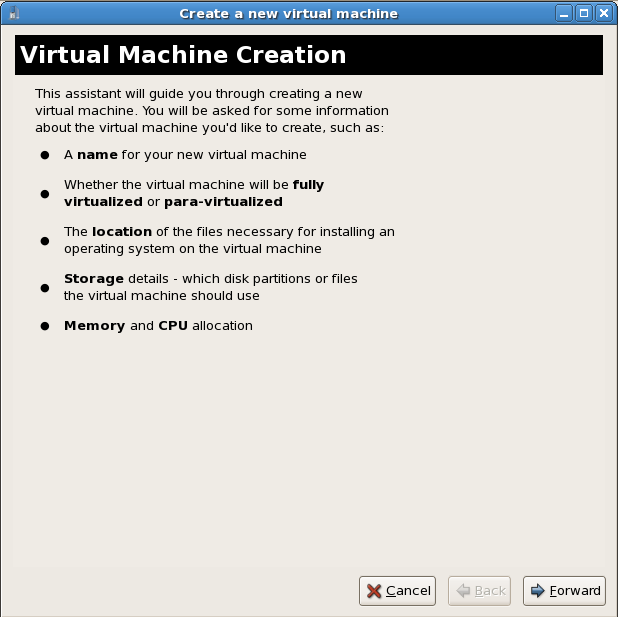
Name the virtual machine
Provide a name for your virtualized guest. The following punctuation and whitespace characters are permitted for '_', '.' and '-' characters.Press to continue.
Choose a virtualization method
Select Xen para-virtualized as the virtualization method. Press to continue.
Press to continue.Select the installation method
Red Hat Enterprise Linux can be installed using one of the following methods:- local install media, either an ISO image or physical optical media.
- Select Network install tree if you have the installation tree for Red Hat Enterprise Linux hosted somewhere on your network via HTTP, FTP or NFS.
- PXE can be used if you have a PXE server configured for booting Red Hat Enterprise Linux installation media. Configuring a sever to PXE boot a Red Hat Enterprise Linux installation is not covered by this guide. However, most of the installation steps are the same after the media boots.
Set OS Type to Linux and OS Variant to Red Hat Enterprise Linux 5 as shown in the screenshot.Press to continue.
Locate installation media
Select ISO image location or CD-ROM or DVD device. This example uses an ISO file image of the Red Hat Enterprise Linux installation DVD.- Press the button.
- Search to the location of the ISO file and select the ISO image. Press to confirm your selection.
- The file is selected and ready to install.Press to continue.
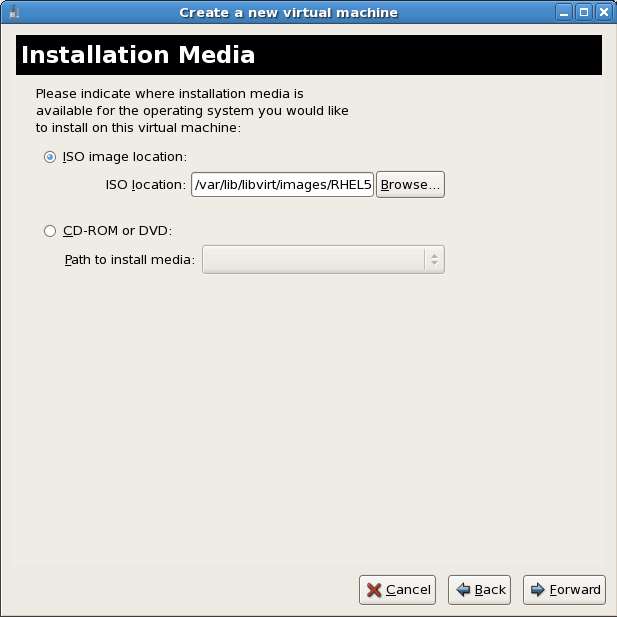
Image files and SELinux
For ISO image files and guest storage images it is recommended to use the/var/lib/libvirt/images/directory. Any other location may require additional configuration for SELinux, refer to Section 16.2, “SELinux and virtualization” for details.Storage setup
Assign a physical storage device (Block device) or a file-based image (File). File-based images should be stored in the/var/lib/libvirt/images/directory to satisfy default SELinux permissions. Assign sufficient space for your virtualized guest and any applications the guest requires.Press to continue.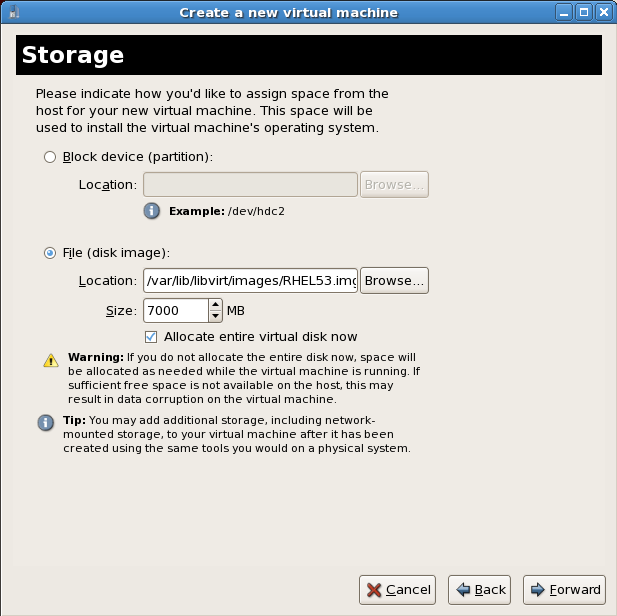
Migration
Live and offline migrations require guests to be installed on shared network storage. For information on setting up shared storage for guests refer to Part V, “Virtualization storage topics”.Network setup
Select either Virtual network or Shared physical device.The virtual network option uses Network Address Translation (NAT) to share the default network device with the virtualized guest. Use the virtual network option for wireless networks.The shared physical device option uses a network bond to give the virtualized guest full access to a network device.Press to continue.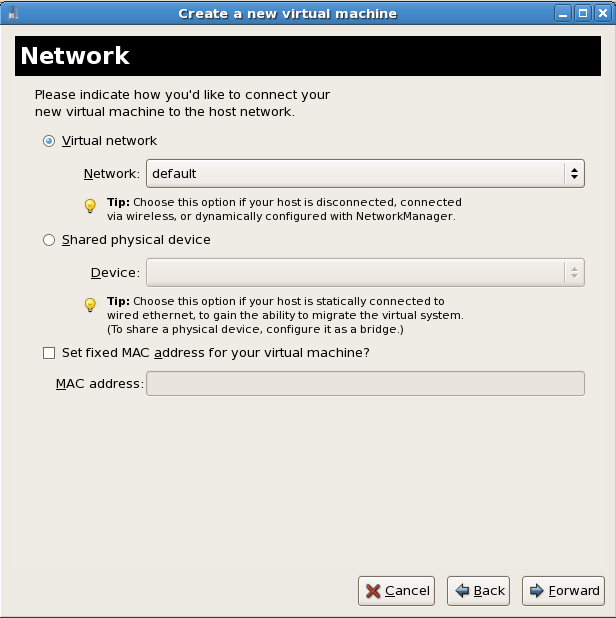
Memory and CPU allocation
The Memory and CPU Allocation window displays. Choose appropriate values for the virtualized CPUs and RAM allocation. These values affect the host's and guest's performance.Virtualized guests require sufficient physical memory (RAM) to run efficiently and effectively. Choose a memory value which suits your guest operating system and application requirements. Remember, guests use physical RAM. Running too many guests or leaving insufficient memory for the host system results in significant usage of virtual memory and swapping. Virtual memory is significantly slower which causes degraded system performance and responsiveness. Ensure you allocate sufficient memory for all guests and the host to operate effectively.Assign sufficient virtual CPUs for the virtualized guest. If the guest runs a multithreaded application, assign the number of virtualized CPUs the guest will require to run efficiently. Do not assign more virtual CPUs than there are physical processors (or hyper-threads) available on the host system. It is possible to over allocate virtual processors, however, over allocating has a significant, negative effect on guest and host performance due to processor context switching overheads.Press to continue.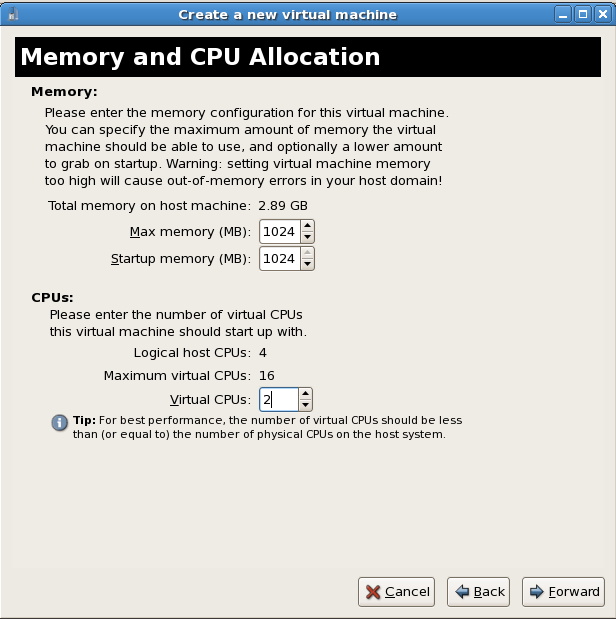
Verify and start guest installation
Verify the configuration.Press to start the guest installation procedure.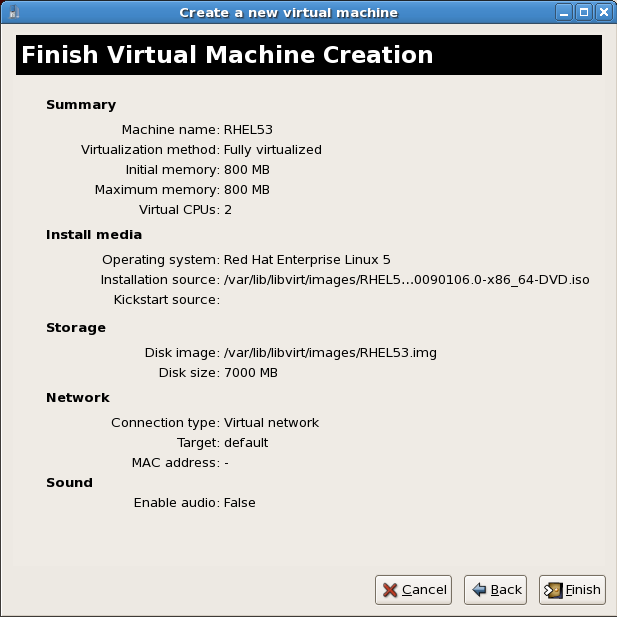
Installing Red Hat Enterprise Linux
Complete the Red Hat Enterprise Linux installation sequence. The installation sequence is covered by the Red Hat Enterprise Linux 6 Installation Guide. Refer to Red Hat Documentation for the Red Hat Enterprise Linux 6 Installation Guide.
Chapter 9. Installing a fully-virtualized Windows guest
virt-install), launch the operating system's installer inside the guest, and access the installer through virt-viewer.
virt-viewer tool. This tool allows you to display the graphical console of a virtual machine (via the VNC protocol). In doing so, virt-viewer
allows you to install a fully virtualized guest's operating system
through that operating system's installer (e.g. the Windows XP
installer).
- Creating the guest (using either
virt-installorvirt-manager) - Installing the Windows operating system on the guest (through
virt-viewer)
9.1. Using virt-install to create a guest
virt-install command allows you to
create a fully-virtualized guest from a terminal, i.e. without a GUI. If
you prefer to use a GUI instead, refer to Section 6.3, “Creating guests with virt-manager” for instructions on how to use virt-manager.
Important
# virt-install \ --name=guest-name\ --network network=default \ --disk path=path-to-disk\ --disk size=disk-size\ --cdrom=path-to-install-disk\ --vnc --ram=1024
path-to-disk/dev/sda3) or image file (/var/lib/libvirt/images/name.img). It must also have enough free space to support the disk-sizeImportant
/var/lib/libvirt/images/. Other directory locations for file-based images are prohibited by SELinux. If you run SELinux in enforcing mode, refer to Section 16.2, “SELinux and virtualization” for more information on installing guests.
virt-install interactively. To do so, use the --prompt command, as in:
# virt-install --prompt
virt-viewer
will launch the guest and run the operating system's installer. Refer
to to the relevant Microsoft installation documentation for instructions
on how to install the operating system.
Important
virt-viewer launches, press F5 and refer to Section 9.2, “Installing Windows 2003” for further instructions before proceeding.
9.2. Installing Windows 2003
virt-viewer launches and boots the installer, press F5. If you do not press F5 at the right time you will need to restart the installation. Pressing F5 allows you to select a different HAL or Computer Type.
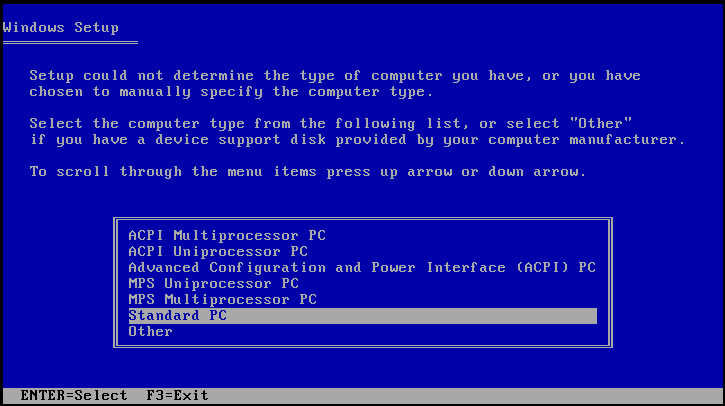
Figure 9.1. Selecting a different HAL
Standard PC as the Computer Type. Then, press Enter to continue with the installation process.
Part III. Configuration
Configuring virtualization in Red Hat Enterprise Linux 6
Table of Contents
- 10. Network Configuration
- 11. KVM Para-virtualized Drivers
- 12. PCI passthrough
- 13. SR-IOV
- 14. KVM guest timing management
Chapter 10. Network Configuration
- virtual networks using Network Address Translation (NAT)
- directly allocated physical devices using PCI passthrough or SR-IOV.
- bridged networks
10.1. Network Address Translation (NAT) with libvirt
Host configuration
Every standardlibvirt installation
provides NAT based connectivity to virtual machines out of the box. This
is the so called 'default virtual network'. Verify that it is available
with the virsh net-list --all command.
# virsh net-list --all Name State Autostart ----------------------------------------- default active yes
# virsh net-define /usr/share/libvirt/networks/default.xml
/usr/share/libvirt/networks/default.xml
# virsh net-autostart default Network default marked as autostarted
# virsh net-start default Network default started
libvirt default network is running, you will see an isolated bridge device. This device does not
have any physical interfaces added. The new device uses NAT and IP
forwarding to connect to outside world. Do not add new interfaces.
# brctl show bridge name bridge id STP enabled interfaces virbr0 8000.000000000000 yes
libvirt adds iptables rules which allow traffic to and from guests attached to the virbr0 device in the INPUT, FORWARD, OUTPUT and POSTROUTING chains. libvirt then attempts to enable the ip_forward parameter. Some other applications may disable ip_forward, so the best option is to add the following to /etc/sysctl.conf.
net.ipv4.ip_forward = 1
Guest configuration
Once the host configuration is complete, a guest can be connected to the virtual network based on its name. To connect a guest to the 'default' virtual network, the following could be used in the XML configuration file (such as/etc/libvirtd/qemu/myguest.xml) for the guest:
<interface type='network'> <source network='default'/> </interface>
Note
<interface type='network'> <source network='default'/> <mac address='00:16:3e:1a:b3:4a'/> </interface>
10.2. Bridged networking with libvirt
Disable NetworkManager
NetworkManager does not support bridging. NetworkManager must be disabled to use networking with the network scripts (located in the/etc/sysconfig/network-scripts/ directory).
# chkconfig NetworkManager off # chkconfig network on # service NetworkManager stop # service network start
Note
NM_CONTROLLED=no" to the ifcfg-* scripts used in the examples.
Creating the bridge
Create or edit the following two network configuration files. These steps can be repeated (with different names) for additional network bridges.Change to the network scripts directory
Change to the/etc/sysconfig/network-scriptsdirectory:# cd /etc/sysconfig/network-scripts
Modify a network interface to make a bridge
Edit the network script for the network device you are adding to the bridge. In this example,/etc/sysconfig/network-scripts/ifcfg-eth0is used. This file defineseth0, the physical network interface which is set as part of a bridge:DEVICE=eth0 # change the hardware address to match the hardware address your NIC uses HWADDR=00:16:76:D6:C9:45 ONBOOT=yes BRIDGE=br0
Tip
You can configure the device's Maximum Transfer Unit (MTU) by appending anMTUvariable to the end of the configuration file.MTU=9000
Create the bridge script
Create a new network script in the/etc/sysconfig/network-scriptsdirectory calledifcfg-br0or similar. Thebr0is the name of the bridge, this can be anything as long as the name of the file is the same as the DEVICE parameter, and that it matches the bridge name used in step 2.DEVICE=br0 TYPE=Bridge BOOTPROTO=dhcp ONBOOT=yes DELAY=0
Warning
The line,TYPE=Bridge, is case-sensitive. It must have uppercase 'B' and lower case 'ridge'.Restart the network
After configuring, restart networking or reboot.# service network restart
Configure iptables
Configureiptablesto allow all traffic to be forwarded across the bridge.# iptables -I FORWARD -m physdev --physdev-is-bridged -j ACCEPT # service iptables save # service iptables restart
Disable iptables on bridges
Alternatively, prevent bridged traffic from being processed byiptablesrules. In/etc/sysctl.confappend the following lines:net.bridge.bridge-nf-call-ip6tables = 0 net.bridge.bridge-nf-call-iptables = 0 net.bridge.bridge-nf-call-arptables = 0
Reload the kernel parameters configured withsysctl.# sysctl -p /etc/sysctl.conf
Restart the libvirt service
Restart thelibvirtservice with theservicecommand.# service libvirtd reload
Verify the bridge
Verify the new bridge is available with the bridge control command (brctl).# brctl show bridge name bridge id STP enabled interfaces virbr0 8000.000000000000 yes br0 8000.000e0cb30550 no eth0
virt-manager and libvirt, which guests can be attached and have full network access.
virbr0 bridge. Do not attempt to attach a physical device to virbr0. The virbr0 bridge is only for Network Address Translation (NAT) connectivity.
Chapter 11. KVM Para-virtualized Drivers
- Red Hat Enterprise Linux 3.9 and newer
- Red Hat Enterprise Linux 4.8 and newer
- Red Hat Enterprise Linux 5.3 and newer
- Red Hat Enterprise Linux 6 and newer
- Some versions of Linux based on the 2.6.27 kernel or newer kernel versions.
Note
- Windows XP (32-bit only)
- Windows Server 2003 (32-bit and 64-bit versions)
- Windows Server 2008 (32-bit and 64-bit versions)
- Windows 7 (32-bit and 64-bit versions)
11.1. Using the para-virtualized drivers with Red Hat Enterprise Linux 3.9 guests
virtio, virtio_blk, virtio_net, virtio_pci and virtio_ring. All five modules must be loaded to use both the para-virtualized block and network devices drivers.
Note
virtio, virtio_net and virtio_pci modules. To use the block device driver only, load the virtio, virtio_ring, virtio_blk and virtio_pci modules.
Modified initrd files
/boot directory. The original initrd file is saved to /boot/initrd- kernel-version .img.virtio.orig. The original initrd file is replaced with a new initrd RAM disk containing the virtio
driver modules. The initrd RAM disk is modified to allow the guest to
boot from a storage device using the para-virtualized drivers. To use a
different initrd file, you must ensure that drivers are loaded with the sysinit script (Loading the para-virtualized drivers with the sysinit script) or when creating new initrd RAM disk (Adding the para-virtualized drivers to the initrd RAM disk).
Loading the para-virtualized drivers with the sysinit script
This procedure covers loading the para-virtualized driver modules during the boot sequence on a Red Hat Enterprise Linux 3.9 or newer guest with thesysinit script. Note that
the guest cannot use the para-virtualized drivers for the default boot
disk if the modules are loaded with the sysinit script.
virtiovirtio_ringvirtio_blkvirtio_netvirtio_pci
virtio_net and virtio_blk can be change. If the drivers are loaded in a different order, drivers will not work.
/etc/rc.d/rc.sysinit file.
if [ -f /etc/rc.modules ]; then
/etc/rc.modules
fi
Append the following lines after that section:
if [ -f /etc/rc.modules ]; then
/etc/rc.modules
fi
modprobe virtio
modprobe virtio_ring # Comment this out if you do not need block driver
modprobe virtio_blk # Comment this out if you do not need block driver
modprobe virtio_net # Comment this out if you do not need net driver
modprobe virtio_pci
Adding the para-virtualized drivers to the initrd RAM disk
This procedure covers loading the para-virtualized driver modules with the kernel on a Red Hat Enterprise Linux 3.9 or newer guest by including the modules in the initrd RAM disk. The mkinitrd tool configures the initrd RAM disk to load the the modules. Specify the additional modules with the--with parameter for the mkinitrd command. Append following set of parameters, in the exact order, when using the mkinitrd command to create a custom initrd RAM disk:
--with virtio --with virtio_ring --with virtio_blk --with virtio_net --with virtio_pci
AMD64 and Intel 64 issues
Use thex86_64 version of the virtio package for AMD64 systems.
ia32e version of the virtio package for Intel 64 systems. Using the x86_64 version of the virtio may cause a 'Unresolved symbol' error during the boot sequence on Intel 64 systems.
Network performance issues
If you experience low performance with the para-virtualized network drivers, verify the setting for the GSO and TSO features on the host system. The para-virtualized network drivers require that the GSO and TSO options are disabled for optimal performance.interface with the network interface used by the guest):
# ethtool -k interface# ethtool -Kinterfacegso off # ethtool -Kinterfacetso off
Para-virtualized driver swap partition issue
After activating the para-virtualized block device driver the swap partition may not be available. This issue is may be caused by a change in disk device name. To fix this issue, open the/etc/fstab file and locate the lines containing swap partitions, for example:
/dev/hda3 swap swap defaults 0 0
/dev/vd* naming convention, not the /dev/hd* naming convention. To resolve this issue modify the incorrect swap entries in the /etc/fstab file to use the /dev/vd* convention, for the example above:
/dev/vda3 swap swap defaults 0 011.2. Installing the KVM Windows para-virtualized drivers
- hosting the installation files on a network accessible to the guest,
- using a virtualized CD-ROM device of the driver installation disk .iso file, or
- using a virtualized floppy device to install the drivers during boot time (for Windows guests).
Download the drivers
The virtio-win package contains the para-virtualized block and network drivers for all supported Windows guests.Download the virtio-win package with theyumcommand.# yum install virtio-win
The drivers are also from Microsoft (windowsservercatalog.com). Note that the Red Hat Enterprise Virtualization Hypervisor and Red Hat Enterprise Linux are created on the same code base so the drivers for the same version (for example, Red Hat Enterprise Virtualization Hypervisor 2.2 and Red Hat Enterprise Linux 5.5) are supported for both environments.The virtio-win package installs a CD-ROM image,virtio-win.iso, in the/usr/share/virtio-win/directory.Install the para-virtualized drivers
It is recommended to install the drivers on the guest before attaching or modifying a device to use the para-virtualized drivers.For block devices storing root file systems or other block devices required for booting the guest, the drivers must be installed before the device is modified. If the drivers are not installed on the guest and the driver is set to the virtio driver the guest will not boot.
11.2.1. Installing the drivers on an installed Windows guest
virt-manager and then install the drivers.
Procedure 11.1. Installing from the driver CD-ROM image with virt-manager
Open virt-manager and the guest
Openvirt-manager, select your virtualized guest from the list by double clicking the guest name.Open the hardware window
Click the blue button at the top to view guest details. Then click the button at the bottom of the window.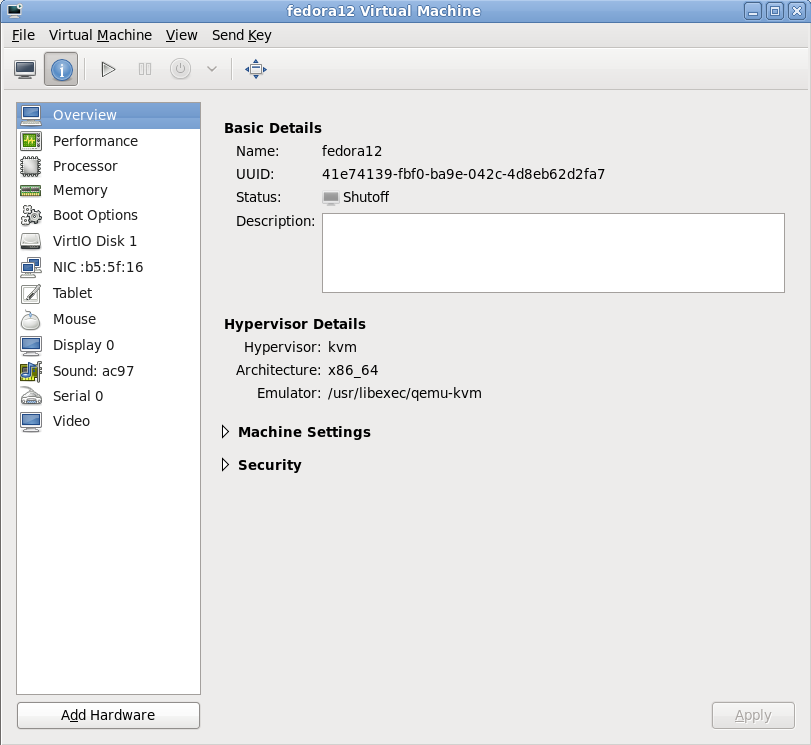
Select the device type
This opens a wizard for adding the new device. Select Storage from the dropdown menu.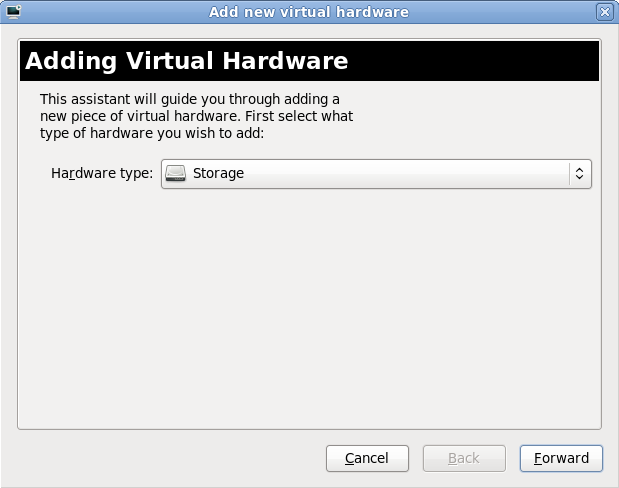 Click the button to proceed.
Click the button to proceed.Select the ISO file
Select Select managed or other existing storage and set the file location of the para-virtualized drivers .iso image file. The default location for the latest version of the drivers is/usr/share/virtio-win/virtio-win.iso.Change the Device type to IDE cdrom and click the button to proceed.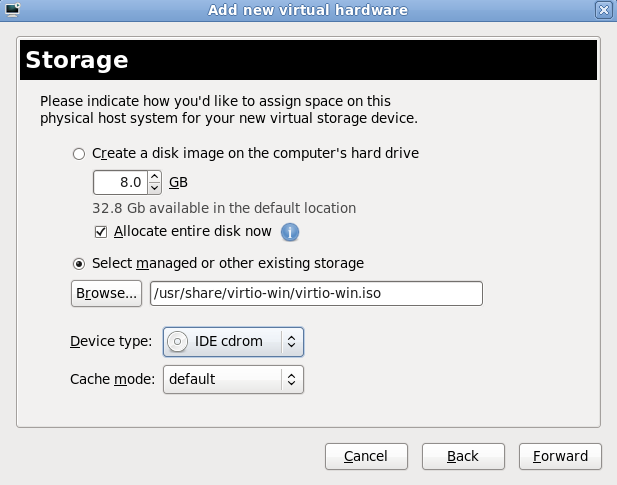
Finish adding virtual hardware
Press the button to complete the wizard.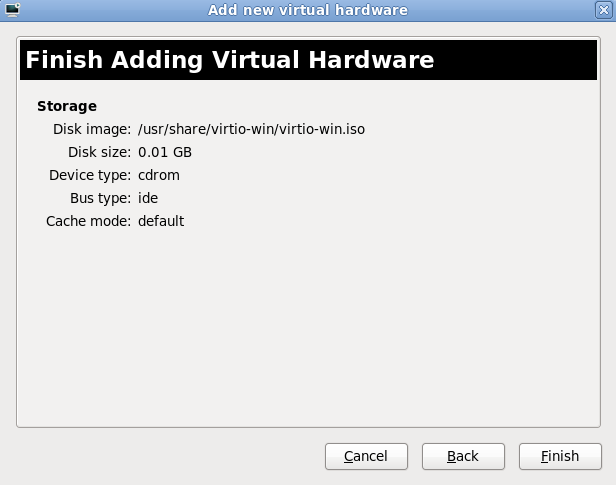
Reboot
Reboot or start the guest to begin using the driver disc. Virtualized IDE devices require a restart to for the guest to recognize the new device.
Procedure 11.2. Windows installation
Open My Computer
On the Windows guest, open My Computer and select the CD-ROM drive.
Select the correct installation files
There are four files available on the disc. Select the drivers you require for your guest's architecture:- the para-virtualized block device driver (
RHEV-Block.msifor 32-bit guests orRHEV-Block64.msifor 64-bit guests), - the para-virtualized network device driver (
RHEV-Network.msifor 32-bit guests orRHEV-Block64.msifor 64-bit guests), - or both the block and network device drivers.
Double click the installation files to install the drivers.Install the block device driver
Start the block device driver installation
Double clickRHEV-Block.msiorRHEV-Block64.msi.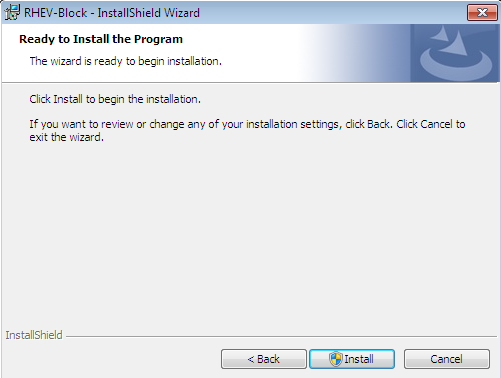 Press to continue.
Press to continue.Confirm the exception
Windows may prompt for a security exception.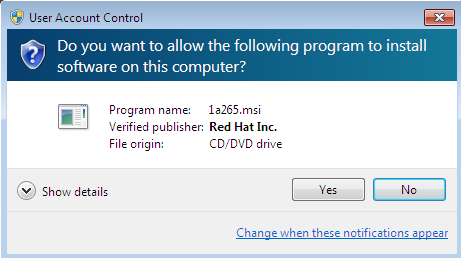 Press if it is correct.
Press if it is correct.Finish
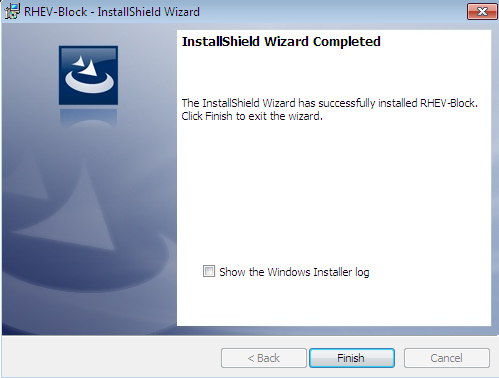 Press to complete the installation.
Press to complete the installation.
Install the network device driver
Start the network device driver installation
Double clickRHEV-Network.msiorRHEV-Network64.msi. Press to continue.
Press to continue.Performance setting
This screen configures advanced TCP settings for the network driver. TCP timestamps and TCP window scaling can be enabled or disabled. The default is, 1, for window scaling to be enabled.TCP window scaling is covered by IETF RFC 1323. The RFC defines a method of increasing the receive window size to a size greater than the default maximum of 65,535 bytes up to a new maximum of 1 gigabyte (1,073,741,824 bytes). TCP window scaling allows networks to transfer at closer to theoretical network bandwidth limits. Larger receive windows may not be supported by some networking hardware or operating systems.TCP timestamps are also defined by IETF RFC 1323. TCP timestamps are used to better calculate Return Travel Time estimates by embedding timing information is embedded in packets. TCP timestamps help the system to adapt to changing traffic levels and avoid congestion issues on busy networks.Value Action 0 Disable TCP timestamps and window scaling. 1 Enable TCP window scaling. 2 Enable TCP timestamps. 3 Enable TCP timestamps and window scaling. 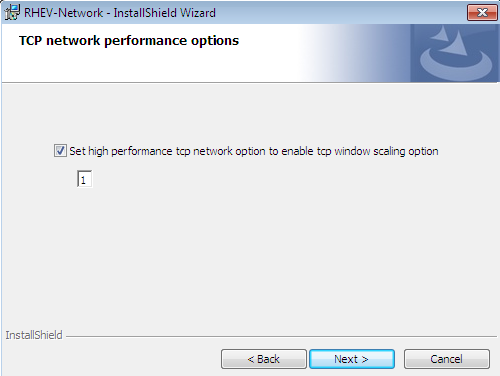 Press to continue.
Press to continue.Confirm the exception
Windows may prompt for a security exception. Press if it is correct.
Press if it is correct.Finish
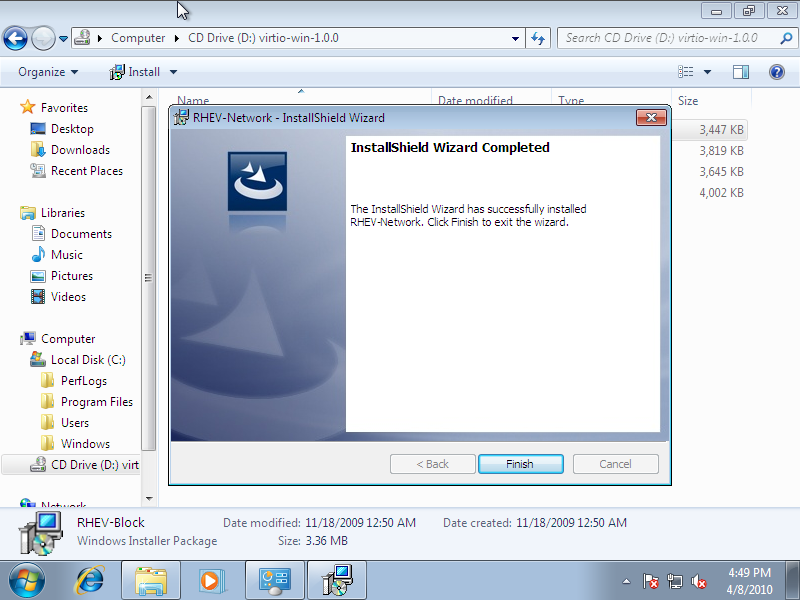 Press to complete the installation.
Press to complete the installation.
Reboot
Reboot the guest to complete the driver installation.
11.2.2. Installing drivers during the Windows installation
virtio) drivers for the default storage device.
- Install the virtio-win package:
# yum install virtio-win
Creating guests
Create the guest, as normal, without starting the guest. Follow one of the procedures below. Creating the guest with virsh
This method attaches the para-virtualized driver floppy disk to a Windows guest before the installation.If the guest is created from an XML definition file withvirshuse thevirsh definecommand not thevirsh createcommand.- Create, but do not start, the guest. Refer to Chapter 30, Managing guests with virsh for details on creating guests with the
virshcommand. - Add the driver disk as a virtualized floppy disk with the
virshcommand. This example can be copied and used if there are no other virtualized floppy devices attached to the virtualized guest.# virsh attach-disk
guest1/usr/share/virtio-win/virtio-drivers.vfd fda --type floppy
Creating the guest with virt-manager
- At the final step of the virt-manager guest creation wizard, check the Customize configuration before install checkbox.
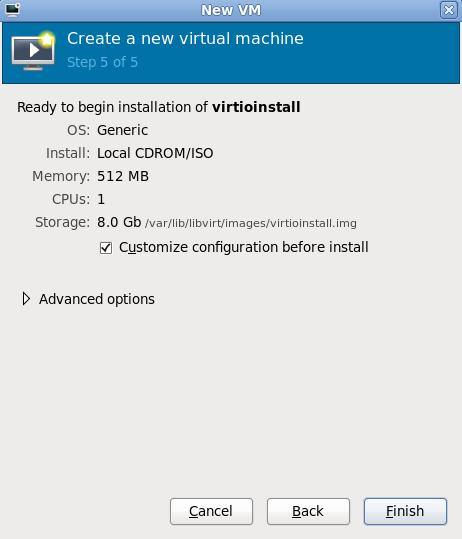 Press the button to continue.
Press the button to continue. Add the new device
Select Storage from the Hardware type list. Click Forward to continue.
Select the driver disk
Select Select managed or existing storage.Set the location to/usr/share/virtio-win/virtio-drivers.vfd.Change Device type to Floppy disk.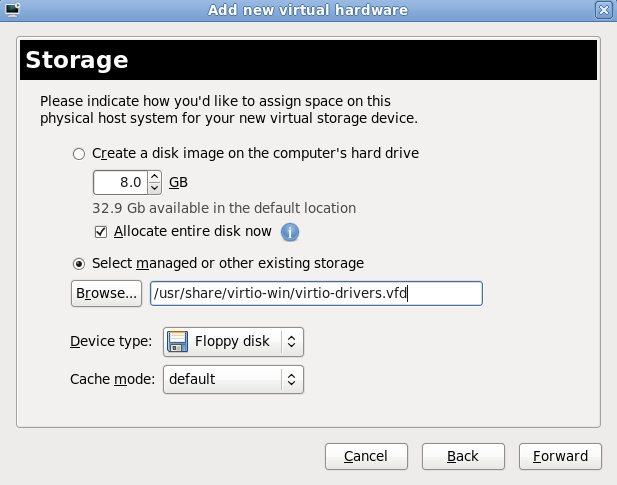 Press the button to continue.
Press the button to continue.Confirm the new device
Click the Finish button to confirm the device setup and add the device to the guest.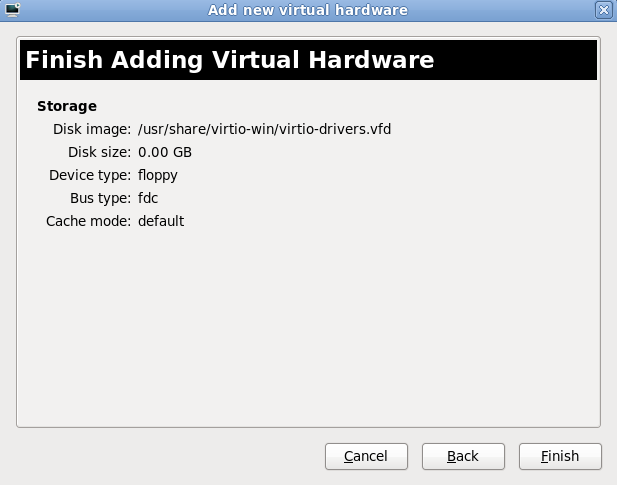 Press the green tick button to add the new device.
Press the green tick button to add the new device.
Creating the guest with virt-install
Append the following parameter exactly as listed below to add the driver disk to the installation with thevirt-installcommand :--disk path=/usr/share/virtio-win/virtio-drivers.vfd,device=floppy
- During the installation, additional steps are required to install drivers, depending on the type of Windows guest.
Windows Server 2003 and Windows XP
Before the installation blue screen repeatedly press F6 for third party drivers.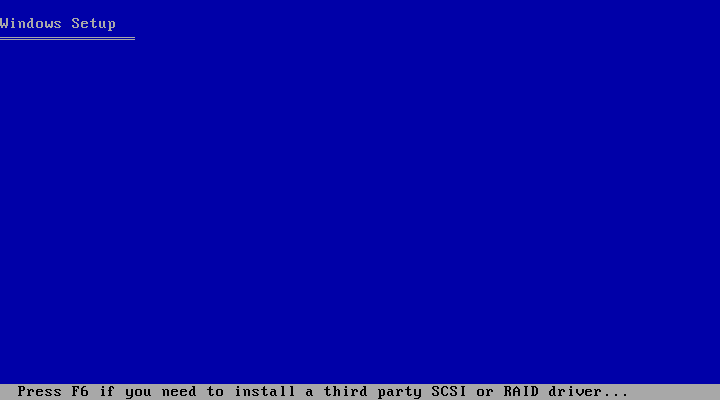 Press S to install additional
Press S to install additional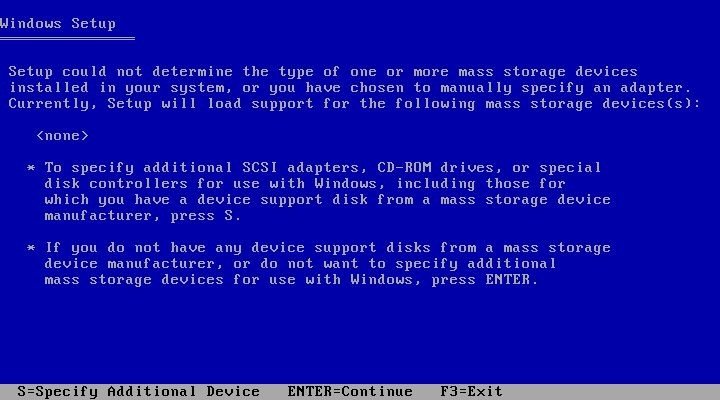
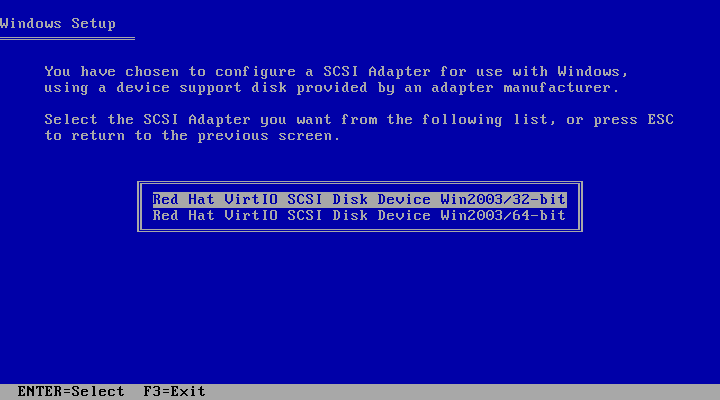 Press Enter to continue the installation.
Press Enter to continue the installation.Windows Server 2008
Install the guest as described by Section 9.1, “Using virt-install to create a guest”When the installer prompts you for the driver, click on Load Driver, point the installer toDrive A:and pick the driver that suits your guest operating system and architecture.
11.3. Using KVM para-virtualized drivers for existing devices
virtio driver instead of the virtualized IDE driver. This example edits libvirt configuration files. Alternatively, virt-manager, virsh attach-disk or virsh attach-interface can add a new device using the para-virtualized drivers Section 11.4, “Using KVM para-virtualized drivers for new devices”.
Note that the guest does not need to be shut down to perform these
steps, however the change will not be applied until the guest is
completely shut down and rebooted.
- Run the
virsh edit <guestname>command to edit the XML configuration file for your device. For example,virsh edit guest1. The configuration files are located in/etc/libvirt/qemu. - Below is a file-based block device using the virtualized IDE driver. This is a typical entry for a virtualized guest not using the para-virtualized drivers.
<disk type='file' device='disk'> <source file='/var/lib/libvirt/images/disk1.img'/> <target dev='hda' bus='ide'/> </disk>
- Change the entry to use the para-virtualized device by modifying the bus= entry to
virtio. Note that if the disk was previously IDE it will have a target similar to hda, hdb, or hdc and so on. When changing to bus=virtio the target needs to be changed to vda, vdb, or vdc accordingly.<disk type='file' device='disk'> <source file='/var/lib/libvirt/images/disk1.img'/> <target dev='vda' bus='virtio'/> </disk>
- Remove the address tag inside the disk tags. This must be done for this procedure to work. Libvirt will regenerate the address tag appropriately the next time the guest is started.
11.4. Using KVM para-virtualized drivers for new devices
virt-manager.
virsh attach-disk or virsh attach-interface commands can be used to attach devices using the para-virtualized drivers.
Install the drivers first
Procedure 11.3. Starting the new device wizard
- Open the virtualized guest by double clicking on the name of the guest in
virt-manager. - Open the Information tab by pressing the i information button.

Figure 11.1. The information tab button
- In the information tab, press the Add Hardware button.
- In the Adding Virtual Hardware tab select Storage or Network for the type of device. The storage and network device wizards are covered in procedures Procedure 11.4, “Adding a storage device using the para-virtualized storage driver” and Procedure 11.5, “Adding a network device using the para-virtualized network driver”
Procedure 11.4. Adding a storage device using the para-virtualized storage driver
Select hardware type
Select Storage as the Hardware type.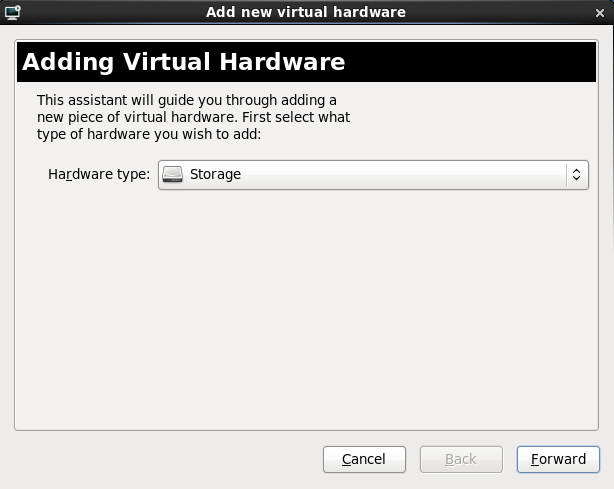 Press Forward to continue.
Press Forward to continue.Select the storage device and driver
Create a new disk image or select a storage pool volume.Set the Device type to Virtio Disk to use the para-virtualized drivers. Press Forward to continue.
Press Forward to continue.Finish the procedure
Confirm the details for the new device are correct.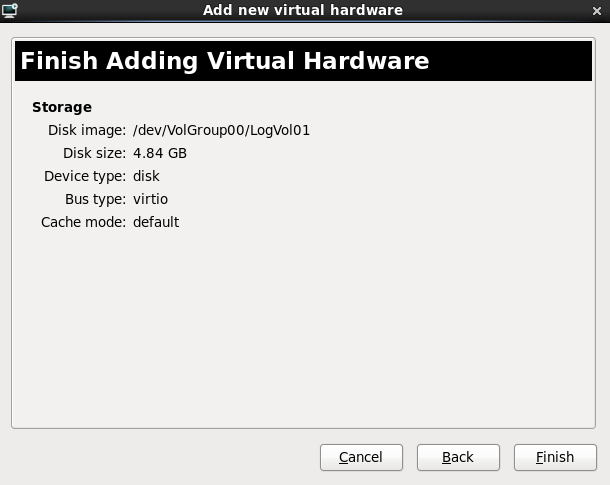 Press Finish to complete the procedure.
Press Finish to complete the procedure.
Procedure 11.5. Adding a network device using the para-virtualized network driver
Select hardware type
Select Network as the Hardware type.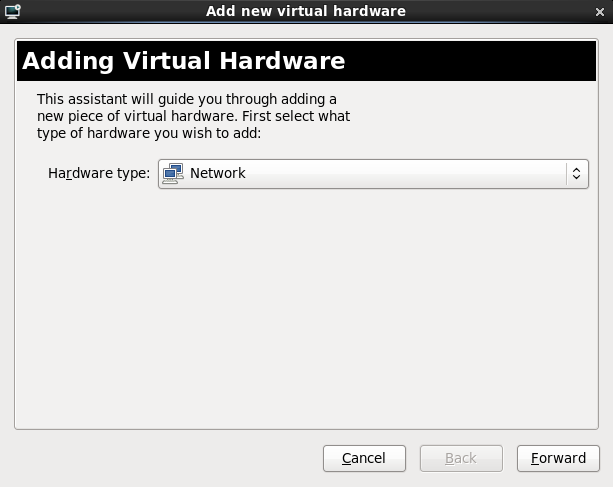 Press Forward to continue.
Press Forward to continue.Select the network device and driver
Select the network device from the Host device list.Create a custom MAC address or use the one provided.Set the Device model to virtio to use the para-virtualized drivers.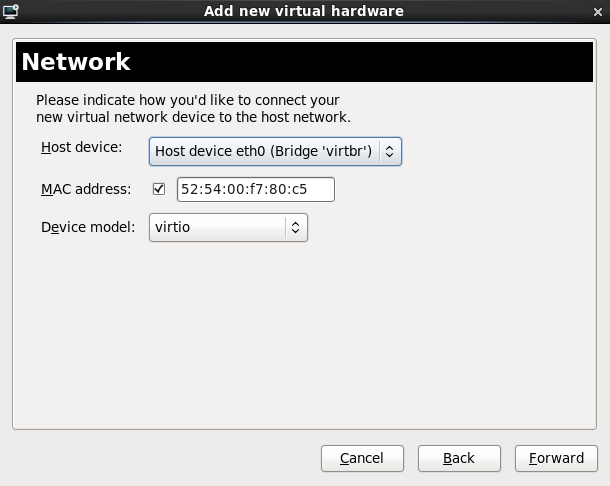 Press Forward to continue.
Press Forward to continue.Finish the procedure
Confirm the details for the new device are correct.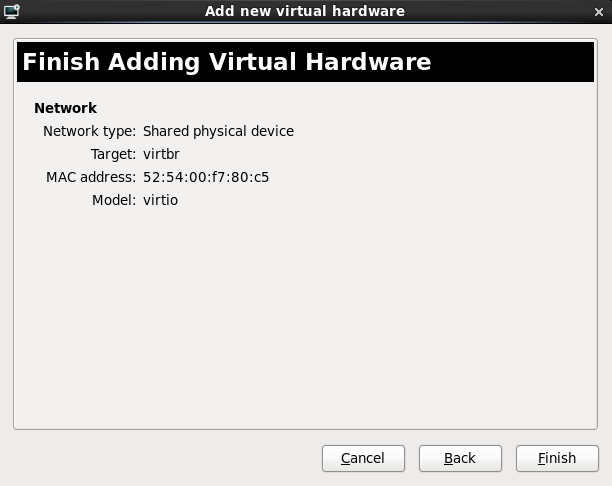 Press Finish to complete the procedure.
Press Finish to complete the procedure.
Chapter 12. PCI passthrough
Procedure 12.1. Preparing an Intel system for PCI passthrough
Enable the Intel VT-d extensions
The Intel VT-d extensions provides hardware support for directly assigning a physical devices to guest.The VT-d extensions are required for PCI passthrough with Red Hat Enterprise Linux. The extensions must be enabled in the BIOS. Some system manufacturers disable these extensions by default.These extensions are often called various terms in BIOS which differ from manufacturer to manufacturer. Consult your system manufacturer's documentation.Activate Intel VT-d in the kernel
Activate Intel VT-d in the kernel by appending theintel_iommu=onparameter to the kernel line of the kernel line in the/boot/grub/grub.conffile.The example below is a modifiedgrub.conffile with Intel VT-d activated.default=0 timeout=5 splashimage=(hd0,0)/grub/splash.xpm.gz hiddenmenu title Red Hat Enterprise Linux Server (2.6.32-36.x86-645) root (hd0,0) kernel /vmlinuz-2.6.32-36.x86-64 ro root=/dev/VolGroup00/LogVol00 rhgb quiet intel_iommu=on initrd /initrd-2.6.32-36.x86-64.imgReady to use
Reboot the system to enable the changes. Your system is now PCI passthrough capable.
Procedure 12.2. Preparing an AMD system for PCI passthrough
Enable AMD IOMMU extensions
The AMD IOMMU extensions are required for PCI passthrough with Red Hat Enterprise Linux. The extensions must be enabled in the BIOS. Some system manufacturers disable these extensions by default.
12.1. Adding a PCI device with virsh
pci_8086_3a6c, and a fully virtualized guest named win2k3.
Identify the device
Identify the PCI device designated for passthrough to the guest. Thevirsh nodedev-listcommand lists all devices attached to the system. The--treeoption is useful for identifying devices attached to the PCI device (for example, disk controllers and USB controllers).# virsh nodedev-list --tree
For a list of only PCI devices, run the following command:# virsh nodedev-list | grep pci
In the output from this command, each PCI device is identified by a string, as shown in the following example output:pci_0000_00_00_0 pci_0000_00_02_0 pci_0000_00_02_1 pci_0000_00_03_0 pci_0000_00_03_2 pci_0000_00_03_3 pci_0000_00_19_0 pci_0000_00_1a_0 pci_0000_00_1a_1 pci_0000_00_1a_2 pci_0000_00_1a_7 pci_0000_00_1b_0 pci_0000_00_1c_0
Tip: determining the PCI device
Comparinglspcioutput tolspci -n(which turns off name resolution) output can assist in deriving which device has which device identifier code.Record the PCI device number; the number is needed in other steps.- Information on the domain, bus and function are available from output of the
virsh nodedev-dumpxmlcommand:# virsh nodedev-dumpxml pci_8086_3a6c <device> <name>pci_8086_3a6c</name> <parent>computer</parent> <capability type='pci'> <domain>0</domain> <bus>0</bus> <slot>26</slot> <function>7</function> <id='0x3a6c'>82801JD/DO (ICH10 Family) USB2 EHCI Controller #2</product> <vendor id='0x8086'>Intel Corporation</vendor> </capability> </device> - Detach the device from the system. Attached devices cannot be used and may cause various errors if connected to a guest without detaching first.
# virsh nodedev-dettach pci_8086_3a6c Device pci_8086_3a6c dettached
- Convert slot and function values to hexadecimal values (from decimal) to get the PCI bus addresses. Append "0x" to the beginning of the output to tell the computer that the value is a hexadecimal number.For example, if bus = 0, slot = 26 and function = 7 run the following:
$ printf %x 0 0 $ printf %x 26 1a $ printf %x 7 7
The values to use:bus='0x00' slot='0x1a' function='0x7'
- Run
virsh edit(or virsh attach device) and added a device entry in the<devices>section to attach the PCI device to the guest.# virsh edit
win2k3<hostdev mode='subsystem' type='pci' managed='yes'> <source> <address domain='0x0000' bus='0x00' slot='0x1a' function='0x7'/> </source> </hostdev> - Once the guest system is configured to use the PCI address, the host system must be configured to stop using the device. The
ehcidriver is loaded by default for the USB PCI controller.$ readlink /sys/bus/pci/devices/0000\:00\:1a.7/driver ../../../bus/pci/drivers/ehci_hcd
- Detach the device:
$ virsh nodedev-dettach pci_8086_3a6c
- Verify it is now under the control of pci_stub:
$ readlink /sys/bus/pci/devices/0000\:00\:1d.7/driver ../../../bus/pci/drivers/pci-stub
- Set a sebool to allow the management of the PCI device from the guest:
$ setsebool -P virt_manage_sysfs 1
- Start the guest system :
# virsh start
win2k3
12.2. Adding a PCI device with virt-manager
virt-manager tool. The following procedure adds a 2 port USB controller to a virtualized guest.
Identify the device
Identify the PCI device designated for passthrough to the guest. Thevirsh nodedev-listcommand lists all devices attached to the system. The--treeoption is useful for identifying devices attached to the PCI device (for example, disk controllers and USB controllers).# virsh nodedev-list --tree
For a list of only PCI devices, run the following command:# virsh nodedev-list | grep pci
In the output from this command, each PCI device is identified by a string, as shown in the following example output:pci_0000_00_00_0 pci_0000_00_02_0 pci_0000_00_02_1 pci_0000_00_03_0 pci_0000_00_03_2 pci_0000_00_03_3 pci_0000_00_19_0 pci_0000_00_1a_0 pci_0000_00_1a_1 pci_0000_00_1a_2 pci_0000_00_1a_7 pci_0000_00_1b_0 pci_0000_00_1c_0
Tip: determining the PCI device
Comparinglspcioutput tolspci -n(which turns off name resolution) output can assist in deriving which device has which device identifier code.Record the PCI device number; the number is needed in other steps.Detach the PCI device
Detach the device from the system.# virsh nodedev-dettach pci_8086_3a6c Device pci_8086_3a6c dettached
Open the hardware settings
Open the virtual machine and click the Add Hardware button to add a new device to the guest.
Add the new device
Select Physical Host Device from the Hardware type list. Click Forward to continue.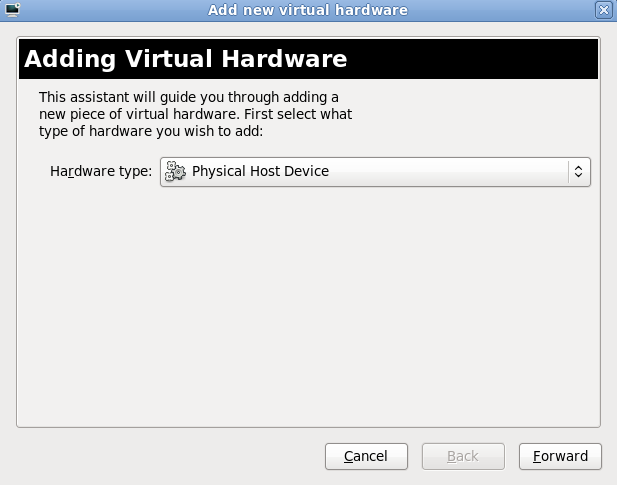
Select a PCI device
Select an unused PCI device. Note that selecting PCI devices presently in use on the host causes errors. In this example a PCI to USB interface device is used.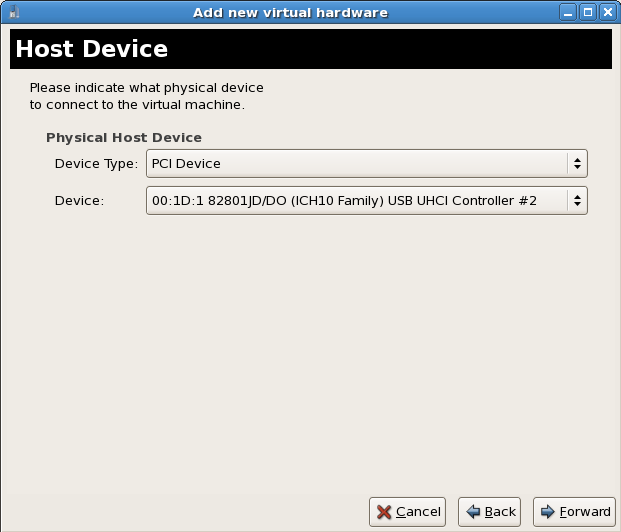
Confirm the new device
Click the Finish button to confirm the device setup and add the device to the guest.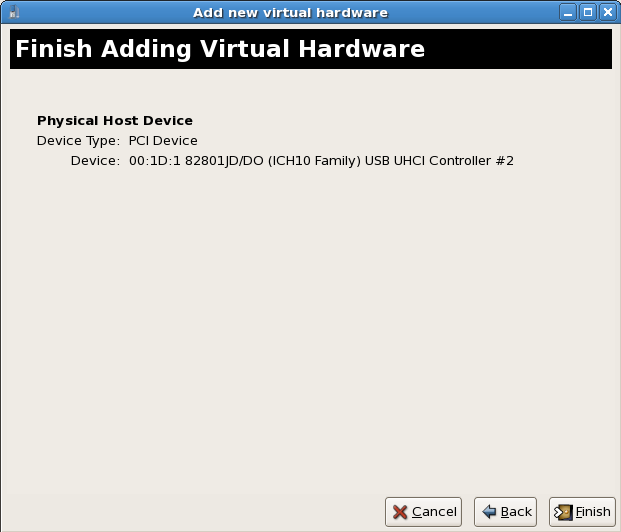
12.3. PCI passthrough with virt-install
--host-device parameter.
Identify the PCI device
Identify the PCI device designated for passthrough to the guest. Thevirsh nodedev-listcommand lists all devices attached to the system. The--treeoption is useful for identifying devices attached to the PCI device (for example, disk controllers and USB controllers).# virsh nodedev-list --tree
For a list of only PCI devices, run the following command:# virsh nodedev-list | grep pci
In the output from this command, each PCI device is identified by a string, as shown in the following example output:pci_0000_00_00_0 pci_0000_00_02_0 pci_0000_00_02_1 pci_0000_00_03_0 pci_0000_00_03_2 pci_0000_00_03_3 pci_0000_00_19_0 pci_0000_00_1a_0 pci_0000_00_1a_1 pci_0000_00_1a_2 pci_0000_00_1a_7 pci_0000_00_1b_0 pci_0000_00_1c_0
Tip: determining the PCI device
Comparinglspcioutput tolspci -n(which turns off name resolution) output can assist in deriving which device has which device identifier code.Add the device
Use the PCI identifier output from thevirsh nodedevcommand as the value for the--host-deviceparameter.# virt-install \ -n hostdev-test -r 1024 --vcpus 2 \ --os-variant fedora11 -v \ -l http://download.fedoraproject.org/pub/fedora/linux/development/x86_64/os \ -x 'console=ttyS0 vnc' --nonetworks --nographics \ --disk pool=default,size=8 \ --debug --host-device=pci_8086_10bdComplete the installation
Complete the guest installation. The PCI device should be attached to the guest.
Chapter 13. SR-IOV
13.1. Introduction
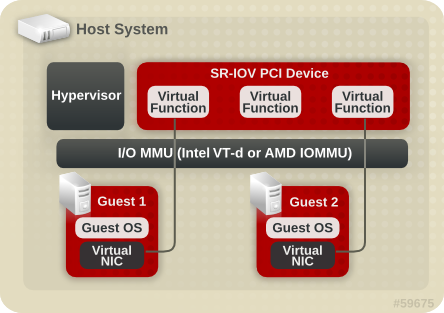
Figure 13.1. How SR-IOV works
- Physical Functions (PFs) are full PCIe devices that include the SR-IOV capabilities. Physical Functions are discovered, managed, and configured as normal PCI devices. Physical Functions configure and manage the SR-IOV functionality by assigning Virtual Functions.
- Virtual Functions (VFs) are simple PCIe functions that only process I/O. Each Virtual Function is derived from a Physical Function. The number of Virtual Functions a device may have is limited by the device hardware. A single Ethernet port, the Physical Device, may map to many Virtual Functions that can be shared to virtualized guests.
vhost-net feature.
Advantages of SR-IOV
SR-IOV devices can share a single physical port with multiple virtualized guests.13.2. Using SR-IOV
Procedure 13.1. Attach an SR-IOV network device
Enable Intel VT-d in BIOS and in the kernel
Skip this step if Intel VT-d is already enabled and working.Enable Intel VT-D in BIOS if it is not enabled already. Refer to Procedure 12.1, “Preparing an Intel system for PCI passthrough” for procedural help on enabling Intel VT-d in BIOS and the kernel.Verify support
Verify if the PCI device with SR-IOV capabilities are detected. This example lists an Intel 82576 network interface card which supports SR-IOV. Use thelspcicommand to verify if the device was detected.# lspci 03:00.0 Ethernet controller: Intel Corporation 82576 Gigabit Network Connection (rev 01) 03:00.1 Ethernet controller: Intel Corporation 82576 Gigabit Network Connection (rev 01)
Note that the output has been modified to remove all other devices.Start the SR-IOV kernel modules
If the device is supported the driver kernel module should be loaded automatically by the kernel. Optional parameters can be passed to the module using themodprobecommand. The Intel 82576 network interface card uses theigbdriver kernel module.# modprobe igb [<option>=<VAL1>,<VAL2>,] # lsmod |grep igb igb 87592 0 dca 6708 1 igb
Activate Virtual Functions
Themax_vfsparameter of theigbmodule allocates the maximum number of Virtual Functions. Themax_vfsparameter causes the driver to spawn, up to the value of the parameter in, Virtual Functions. For this particular card the valid range is0to7.Remove the module to change the variable.# modprobe -r igb
Restart the module with themax_vfsset to1or any number of Virtual Functions up to the maximum supported by your device.# modprobe igb max_vfs=7
Make the Virtual Functions persistent
Themodprobecommand /etc/modprobe.d/igb.conf options igb max_vfs=7Inspect the new Virtual Functions
Using thelspcicommand, list the newly added Virtual Functions attached to the Intel 82576 network device.# lspci | grep 82576 0b:00.0 Ethernet controller: Intel Corporation 82576 Gigabit Network Connection (rev 01) 0b:00.1 Ethernet controller: Intel Corporation 82576 Gigabit Network Connection (rev 01) 0b:10.0 Ethernet controller: Intel Corporation 82576 Virtual Function (rev 01) 0b:10.1 Ethernet controller: Intel Corporation 82576 Virtual Function (rev 01) 0b:10.2 Ethernet controller: Intel Corporation 82576 Virtual Function (rev 01) 0b:10.3 Ethernet controller: Intel Corporation 82576 Virtual Function (rev 01) 0b:10.4 Ethernet controller: Intel Corporation 82576 Virtual Function (rev 01) 0b:10.5 Ethernet controller: Intel Corporation 82576 Virtual Function (rev 01) 0b:10.6 Ethernet controller: Intel Corporation 82576 Virtual Function (rev 01) 0b:10.7 Ethernet controller: Intel Corporation 82576 Virtual Function (rev 01) 0b:11.0 Ethernet controller: Intel Corporation 82576 Virtual Function (rev 01) 0b:11.1 Ethernet controller: Intel Corporation 82576 Virtual Function (rev 01) 0b:11.2 Ethernet controller: Intel Corporation 82576 Virtual Function (rev 01) 0b:11.3 Ethernet controller: Intel Corporation 82576 Virtual Function (rev 01) 0b:11.4 Ethernet controller: Intel Corporation 82576 Virtual Function (rev 01) 0b:11.5 Ethernet controller: Intel Corporation 82576 Virtual Function (rev 01)
The identifier for the PCI device is found with the-nparameter of thelspcicommand. The Physical Functions corresponds to0b:00.0and0b:00.1. All the Virtual Functions haveVirtual Functionin the description.Verify devices exist with virsh
Thelibvirtservice must recognize the device before adding a device to a guest.libvirtuses a similar notation to thelspcioutput. All punctuation characters, ; and ., in lspci output are changed to underscores (_).Use thevirsh nodedev-listcommand and the grep command to filter the Intel 82576 network device from the list of available host devices.0bis the filter for the Intel 82576 network devices in this example. This may vary for your system and may result in additional devices.# virsh nodedev-list | grep
0bpci_0000_0b_00_0 pci_0000_0b_00_1 pci_0000_0b_10_0 pci_0000_0b_10_1 pci_0000_0b_10_2 pci_0000_0b_10_3 pci_0000_0b_10_4 pci_0000_0b_10_5 pci_0000_0b_10_6 pci_0000_0b_11_7 pci_0000_0b_11_1 pci_0000_0b_11_2 pci_0000_0b_11_3 pci_0000_0b_11_4 pci_0000_0b_11_5The serial numbers for the Virtual Functions and Physical Functions should be in the list.Get device details with virsh
Thepci_0000_0b_00_0is one of the Physical Functions andpci_0000_0b_10_0is the first corresponding Virtual Function for that Physical Function. Use thevirsh nodedev-dumpxmlcommand to get advanced output for both devices.<device> <name>pci_0000_0b_00_0</name> <parent>pci_0000_00_01_0</parent> <driver> <name>igb</name> </driver> <capability type='pci'> <domain>0</domain> <bus>11</bus> <slot>0</slot> <function>0</function> <product id='0x10c9'>Intel Corporation</product> <vendor id='0x8086'>82576 Gigabit Network Connection</vendor> </capability> </device> # virsh nodedev-dumpxml pci_0000_0b_10_0 <device> <name>pci_0000_0b_10_0</name> <parent>pci_0000_00_01_0</parent> <driver> <name>igbvf</name> </driver> <capability type='pci'> <domain>0</domain> <bus>11</bus> <slot>16</slot> <function>0</function> <product id='0x10ca'>Intel Corporation</product> <vendor id='0x8086'>82576 Virtual Function</vendor> </capability> </device>This example adds the Virtual Functionpci_0000_0b_10_0to the guest in Step 10. Note thebus,slotandfunctionparameters of the Virtual Function, these are required for adding the device.Detach the Virtual Functions
Devices attached to a host cannot be attached to guests. Red Hat Enterprise Linux automatically attaches new devices to the host. Detach the Virtual Function from the host so that the Virtual Function can be used by the guest. Detaching the Physical Function causes errors, only detach the required Virtual Functions.# virsh nodedev-dettach pci_0000_0b_10_0 Device pci_0000_0b_10_0 dettached
Add the Virtual Function to the guest
- Shut down the guest.
- Use the output from the
virsh nodedev-dumpxml pci_8086_10ca_0command to calculate the values for the configuration file. Convert slot and function values to hexadecimal values (from decimal) to get the PCI bus addresses. Append "0x" to the beginning of the output to tell the computer that the value is a hexadecimal number.The example device has the following values: bus = 3, slot = 16 and function = 1. Use theprintfutility to convert decimal values to hexadecimal values.$ printf %x 3 3 $ printf %x 16 10 $ printf %x 1 1
This example would use the following values in the configuration file:bus='0x03' slot='0x10' function='0x01'
- Open the XML configuration file with the
virsh editcommand. This example edits a guest namedMyGuest.# virsh edit
MyGuest - The default text editor will open the libvirt configuration file for the guest. Add the new device to the
devicessection of the XML configuration file.<hostdev mode='subsystem' type='pci'> <source> <address bus='0x03' slot='0x10' function='0x01'/> </source> </hostdev> - Save the configuration.
Restart
Restart the guest to complete the installation.# virsh start
MyGuest
13.3. Troubleshooting SR-IOV
Error starting the guest
Start the configured vm , an error reported as follows:# virsh start test error: Failed to start domain test error: internal error unable to start guest: char device redirected to /dev/pts/2 get_real_device: /sys/bus/pci/devices/0000:03:10.0/config: Permission denied init_assigned_device: Error: Couldn't get real device (03:10.0)! Failed to initialize assigned device host=03:10.0
Chapter 14. KVM guest timing management
- Clocks can fall out of synchronization with the actual time which invalidates sessions and affects networks.
- Guests with slower clocks may have issues migrating.
NTP
ntpd service:
# service ntpd start
# chkconfig ntpd on
ntpd service should minimize the affects of clock skew in all cases.
Determining if your CPU has the constant Time Stamp Counter
Your CPU has a constant Time Stamp Counter if theconstant_tsc flag is present. To determine if your CPU has the constant_tsc flag run the following command:
$ cat /proc/cpuinfo | grep constant_tsc
constant_tsc bit. If no output is given follow the instructions below.
Configuring hosts without a constant Time Stamp Counter
Systems without constant time stamp counters require additional configuration. Power management features interfere with accurate time keeping and must be disabled for guests to accurately keep time with KVM.Note
constant_tsc bit, disable all power management features (BZ#513138). Each system has several timers it uses to keep time. The TSC is not stable on the host, which is sometimes caused by cpufreq
changes, deep C state, or migration to a host with a faster TSC. Deep C
sleep states can stop the TSC. To prevent the kernel using deep C
states append processor.max_cstate=1 to the kernel boot options in the grub.conf file on the host:
title Red Hat Enterprise Linux (2.6.32-36.x86-64)
root (hd0,0)
kernel /vmlinuz-2.6.32-36.x86-64 ro root=/dev/VolGroup00/LogVol00 rhgb quiet processor.max_cstate=1cpufreq (only necessary on hosts without the constant_tsc) by editing the /etc/sysconfig/cpuspeed configuration file and change the MIN_SPEED and MAX_SPEED variables to the highest frequency available. Valid limits can be found in the /sys/devices/system/cpu/cpu*/cpufreq/scaling_available_frequencies files.
Using the para-virtualized clock with Red Hat Enterprise Linux guests
For certain Red Hat Enterprise Linux guests, additional kernel parameters are required. These parameters can be set by appending them to the end of the /kernel line in the /boot/grub/grub.conf file of the guest.| Red Hat Enterprise Linux | Additional guest kernel parameters |
|---|---|
| 6.0 AMD64/Intel 64 with the para-virtualized clock | Additional parameters are not required |
| 6.0 AMD64/Intel 64 without the para-virtualized clock | notsc lpj=n |
| 5.5 AMD64/Intel 64 with the para-virtualized clock | Additional parameters are not required |
| 5.5 AMD64/Intel 64 without the para-virtualized clock | divider=10 notsc lpj=n |
| 5.5 x86 with the para-virtualized clock | Additional parameters are not required |
| 5.5 x86 without the para-virtualized clock | divider=10 clocksource=acpi_pm lpj=n |
| 5.4 AMD64/Intel 64 | divider=10 notsc |
| 5.4 x86 | divider=10 clocksource=acpi_pm |
| 5.3 AMD64/Intel 64 | divider=10 notsc |
| 5.3 x86 | divider=10 clocksource=acpi_pm |
| 4.8 AMD64/Intel 64 | notsc divider=10 |
| 4.8 x86 | clock=pmtmr divider=10 |
| 3.9 AMD64/Intel 64 | Additional parameters are not required |
| 3.9 x86 | Additional parameters are not required |
Using the Real-Time Clock with Windows Server 2003 and Windows XP guests
Windows uses the both the Real-Time Clock (RTC) and the Time Stamp Counter (TSC). For Windows guests the Real-Time Clock can be used instead of the TSC for all time sources which resolves guest timing issues.PMTIMER clock source (the PMTIMER
usually uses the TSC) add the following line to the Windows boot
settings. Windows boot settings are stored in the boot.ini file. Add the
following line to the boot.ini file:
/use pmtimer
Using the Real-Time Clock with Windows Vista, Windows Server 2008 and Windows 7 guests
Windows uses the both the Real-Time Clock (RTC) and the Time Stamp Counter (TSC). For Windows guests the Real-Time Clock can be used instead of the TSC for all time sources which resolves guest timing issues.boot.ini file is no longer used from Windows Vista and newer. Windows Vista, Windows Server 2008 and Windows 7 use the Boot Configuration Data Editor (bcdedit.exe) to modify the Windows boot parameters.
- Open the Windows guest.
- Open the menu of the menu. Right click on the Command Prompt application, select Run as Administrator.
- Confirm the security exception, if prompted.
- Set the boot manager to use the platform clock. This should instruct Windows to use the PM timer for the primary clock source. The system UUID (
{default}in the example below) should be changed if the system UUID is different than the default boot device.C:\Windows\system32>bcdedit /set {default} USEPLATFORMCLOCK on The operation completed successfully
Part IV. Administration
Administering virtualized systems
Table of Contents
- 15. Server best practices
- 16. Security for virtualization
- 17. sVirt
- 18. KVM live migration
- 19. Remote management of virtualized guests
- 20. Overcommitting with KVM
- 21. KSM
- 22. Advanced virtualization administration
- 23. Migrating to KVM from other hypervisors using virt-v2v
- 24. Miscellaneous administration tasks
- 24.1. Automatically starting guests
- 24.2. Using qemu-img
- 24.3. Verifying virtualization extensions
- 24.4. Setting KVM processor affinities
- 24.5. Generating a new unique MAC address
- 24.6. Improving guest response time
- 24.7. Very Secure
ftpd - 24.8. Disable SMART disk monitoring for guests
- 24.9. Configuring a VNC Server
- 24.10. Gracefully shutting down guests
- 24.11. Virtual machine timer management with libvirt
Chapter 15. Server best practices
- Run SELinux in enforcing mode. Set SELinux to run in enforcing mode with the
setenforcecommand.# setenforce 1
- Remove or disable any unnecessary services such as
AutoFS,NFS,FTP,HTTP,NIS,telnetd,sendmailand so on. - Only add the minimum number of user accounts needed for platform management on the server and remove unnecessary user accounts.
- Avoid running any unessential applications on your host. Running applications on the host may impact virtual machine performance and can affect server stability. Any application which may crash the server will also cause all virtual machines on the server to go down.
- Use a central location for virtual machine installations and images. Virtual machine images should be stored under
/var/lib/libvirt/images/. If you are using a different directory for your virtual machine images make sure you add the directory to your SELinux policy and relabel it before starting the installation. - Installation sources, trees, and images should be stored in a central location, usually the location of your
vsftpdserver.
Chapter 16. Security for virtualization
- Run only necessary services on hosts. The fewer processes and services running on the host, the higher the level of security and performance.
- Enable SELinux on the hypervisor. Read Section 16.2, “SELinux and virtualization” for more information on using SELinux and virtualization.
- Use a firewall to restrict traffic to the host. You can setup a firewall with default-reject rules that will help secure the host from attacks. It is also important to limit network-facing services.
- Do not allow normal users to access the host. The host is privileged, and granting access to unprivileged accounts may compromise the level of security.
16.1. Storage security issues
fstab file, the initrd
file or used by the kernel command line. If less privileged users,
especially virtualized guests, have write access to whole partitions or
LVM volumes.
/dev/sdb). Use partitions (for example, /dev/sdb1) or LVM volumes.
16.2. SELinux and virtualization
/var/lib/libvirt/images.
Adding LVM based storage with SELinux in enforcing mode
The following section is an example of adding a logical volume to a virtualized guest with SELinux enabled. These instructions also work for hard drive partitions.Procedure 16.1. Creating and mounting a logical volume on a virtualized guest with SELinux enabled
- Create a logical volume. This example creates a 5 gigabyte logical volume named
NewVolumeNameon the volume group namedvolumegroup.# lvcreate -n
NewVolumeName-L5Gvolumegroup - Format the
NewVolumeNamelogical volume with a file system that supports extended attributes, such as ext3.# mke2fs -j
/dev/volumegroup/NewVolumeName - Create a new directory for mounting the new logical volume. This directory can be anywhere on your file system. It is advised not to put it in important system directories (
/etc,/var,/sys) or in home directories (/homeor/root). This example uses a directory called/virtstorage# mkdir
/virtstorage - Mount the logical volume.
# mount
/dev/volumegroup/NewVolumeName/virtstorage - Set the correct SELinux type for the libvirt image folder.
# semanage fcontext -a -t virt_image_t "/virtstorage(/.*)?"
If the targeted policy is used (targeted is the default policy) the command appends a line to the/etc/selinux/targeted/contexts/files/file_contexts.localfile which makes the change persistent. The appended line may resemble this:/virtstorage(/.*)? system_u:object_r:virt_image_t:s0
- Run the command to change the type of the mount point (
/virtstorage) and all files under it tovirt_image_t(therestoreconandsetfilescommands read the files in/etc/selinux/targeted/contexts/files/).# restorecon -R -v /virtstorage
Testing new attributes
touch command) on the file system.
# touch /virtstorage/newfile# sudo ls -Z/virtstorage-rw-------. root root system_u:object_r:virt_image_t:s0newfile
virt_image_t.
16.3. SELinux
# semanage fcontext -a -t virt_image _t -f -b /dev/sda2 # restorecon /dev/sda2
KVM and SELinux
There are several SELinux Booleans which affect KVM and libvirt. These Booleans are listed below for your convenience.| SELinux Boolean | Description |
|---|---|
| allow_unconfined_qemu_transition | Default: off. This Boolean controls whether KVM guests can be transitioned to unconfined users. |
| qemu_full_network | Default: on. This Boolean controls full network access to KVM guests. |
| qemu_use_cifs | Default: on. This Boolean controls KVM's access to CIFS or Samba file systems. |
| qemu_use_comm | Default: off. This Boolean controls whether KVM can access serial or parallel communications ports. |
| qemu_use_nfs | Default: on. This Boolean controls KVM's access to NFS file systems. |
16.4. Virtualization firewall information
Guest network services
- ICMP requests must be accepted. ICMP packets are used for network testing. You cannot ping guests if ICMP packets are blocked.
- Port 22 should be open for SSH access and the initial installation.
- Ports 80 or 443 (depending on the security settings on the RHEV Manager) are used by the vdsm-reg service to communicate information about the host.
- Ports 5634 to 6166 are used for guest console access with the SPICE protocol.
- Ports 49152 to 49216 are used for migrations with KVM. Migration may use any port in this range depending on the number of concurrent migrations occurring.
- Enabling IP forwarding (
net.ipv4.ip_forward = 1) is also required for shared bridges and the default bridge. Note that installing libvirt enables this variable so it will be enabled when the virtualization packages are installed unless it was manually disabled.
Chapter 17. sVirt
Non-virtualized environments
In a non-virtualized environment, hosts are separated from each other physically and each host has a self-contained environment, consisting of services such as a web server, or a DNS server. These services communicate directly to their own user space, host kernel and physical host, offering their services directly to the network. The following image represents a non-virtualized environment: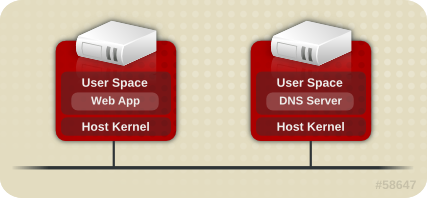
Virtualized environments
In a virtualized environment, several operating systems can run on a single host kernel and physical host. The following image represents a virtualized environment: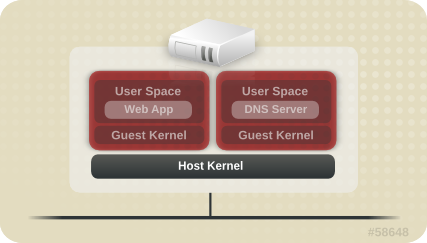
17.1. Security and Virtualization
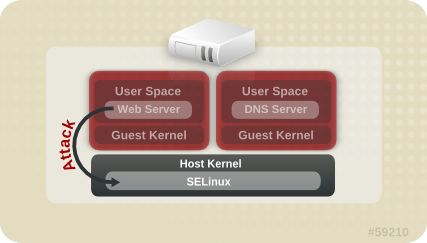
17.2. sVirt labeling
# ps -eZ | grep qemu system_u:system_r:svirt_t:s0:c87,c520 27950 ? 00:00:17 qemu-kvm system_u:system_r:svirt_t:s0:c639,c757 27989 ? 00:00:06 qemu-system-x86
# ls -lZ /var/lib/libvirt/images/* system_u:object_r:svirt_image_t:s0:c87,c520 image1
Table 17.1. sVirt labels
| Type | SELinux Context | Description |
|---|---|---|
| Virtualized guest processes | system_u:system_r:svirt_t:MCS1 | MCS1 is a randomly selected MCS field. Currently approximately 500,000 labels are supported. |
| Virtualized guest images | system_u:object_r:svirt_image_t:MCS1 | Only svirt_t processes with the same MCS fields are able to read/write these image files and devices. |
| Virtualized guest shared read/write content | system_u:object_r:svirt_image_t:s0 | All svirt_t processes are allowed to write to the svirt_image_t:s0 files and devices. |
| Virtualized guest shared read only content | system_u:object_r:svirt_content_t:s0 | All svirt_t processes are able to read files/devices with this label. |
| Virtualized guest images | system_u:object_r:virt_content_t:s0 | System default label used when an image exits. No svirt_t virtual processes are allowed to read files/devices with this label. |
Chapter 18. KVM live migration
- Load balancing - guests can be moved to hosts with lower usage when a host becomes overloaded.
- Hardware failover - when hardware devices on the host start to fail, guests can be safely relocated so the host can be powered down and repaired.
- Energy saving - guests can be redistributed to other hosts and host systems powered off to save energy and cut costs in low usage periods.
- Geographic migration - guests can be moved to another location for lower latency or in serious circumstances.
18.1. Live migration requirements
Migration requirements
- A virtualized guest installed on shared networked storage using one of the following protocols:
- Fibre Channel
- iSCSI
- NFS
- GFS2
- Two or more Red Hat Enterprise Linux systems of the same version with the same updates.
- Both systems must have the appropriate ports open.
- Both systems must have identical network configurations. All bridging and network configurations must be exactly the same on both hosts.
- Shared storage must mount at the same location on source and destination systems. The mounted directory name must be identical.
Configuring network storage
Configure shared storage and install a guest on the shared storage. For shared storage instructions, refer to Part V, “Virtualization storage topics”.18.3. Live KVM migration with virsh
virsh command. The migrate command accepts parameters in the following format:
# virsh migrate --live GuestName DestinationURLGuestName parameter represents the name of the guest which you want to migrate.
DestinationURL parameter
is the URL or hostname of the destination system. The destination system
must run the same version of Red Hat Enterprise Linux, be using the
same hypervisor and have libvirt running.
Example: live migration with virsh
This example migrates fromtest1.example.com to test2.example.com. Change the host names for your environment. This example migrates a virtual machine named RHEL4test.
Verify the guest is running
From the source system,test1.example.com, verifyRHEL4testis running:[root@test1 ~]# virsh list Id Name State ---------------------------------- 10 RHEL4 running
Migrate the guest
Execute the following command to live migrate the guest to the destination,test2.example.com. Append/systemto the end of the destination URL to tell libvirt that you need full access.# virsh migrate --live
RHEL4test qemu+ssh://test2.example.com/systemOnce the command is entered you will be prompted for the root password of the destination system.Wait
The migration may take some time depending on load and the size of the guest.virshonly reports errors. The guest continues to run on the source host until fully migrated.Verify the guest has arrived at the destination host
From the destination system,test2.example.com, verifyRHEL4testis running:[root@test2 ~]# virsh list Id Name State ---------------------------------- 10 RHEL4 running
Other networking methods
18.4. Migrating with virt-manager
virt-manager.
Connect to the source and the target hosts
Connect to the source and target hosts. On the menu, click , the Add Connection window appears.Enter the following details:- Hypervisor: Select .
- Connection: Select the connection type.
- Hostname: Enter the hostname.
Press the button.
Figure 18.1. Add Connection
virt-managernow displays the newly connected host in the list of available hosts.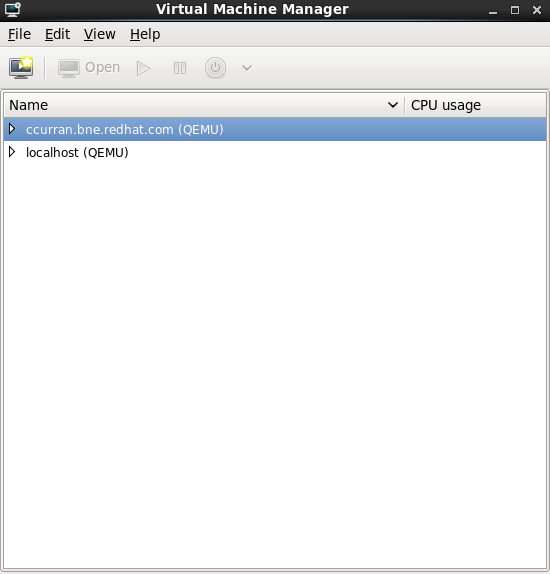
Figure 18.2. Connected Host
Add a storage pool to both hosts
Both hosts must be connected to the same storage pool. Create the storage pool on both hosts using the same network storage device. Using a storage pool ensures both servers have identical storage configurations. This procedure uses a NFS server.Open the storage tab
On the menu, click , the Host Details window appears.Click the tab.
Figure 18.3. Storage tab
Add a storage pool with the same NFS to the source and target hosts.
Add a new storage pool. In the lower left corner of the window, click the button. The Add a New Storage Pool window appears.Enter the following details:- Name: Enter the name of the storage pool.
- Type: Select .

Figure 18.4. Add a new Storage Pool
Press to continue.Specify storage pool details
Enter the following details:- Format: Select the storage type. This must be NFS or iSCSI for live migrations.
- Host Name: Enter the IP address or fully-qualified domain name of the storage server.
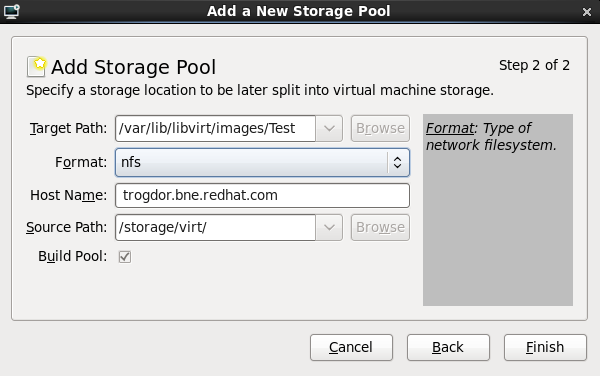
Figure 18.5. Storage pool details
Press the button to add the storage pool.Verify the new storage pool was added sucessfully
The new storage pool should be visible in the Storage tab.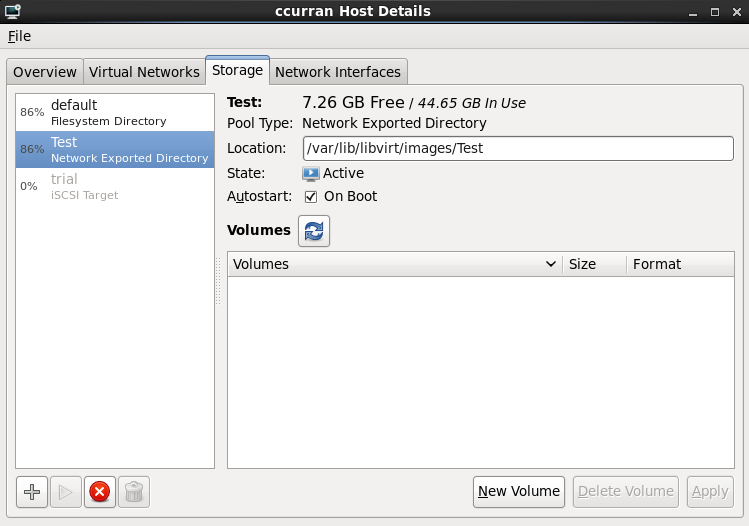
Figure 18.6. New storage pool in the storage tab
Complete these steps on both hosts before proceeding.Optional: Add a volume to the storage pool
Add a volume to the storage pool or create a new virtualized guest on the storage pool. If your storage pool already has virtualized guests, you can skip this step.- Create a new volume in the shared storage pool, click .Enter the details, then click .
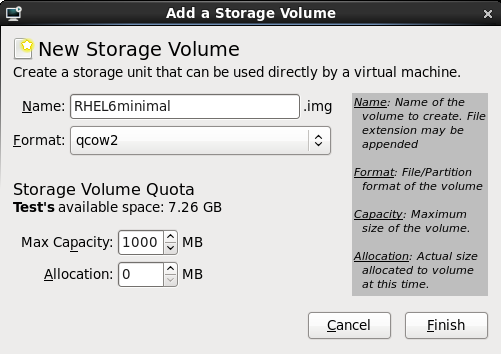
Figure 18.7. Add a storage volume
Create a new virtualized guest on the new volume
Create a new virtualized guest that uses the new volume. For information on creating virtualized guests, refer to Part II, “Installation”.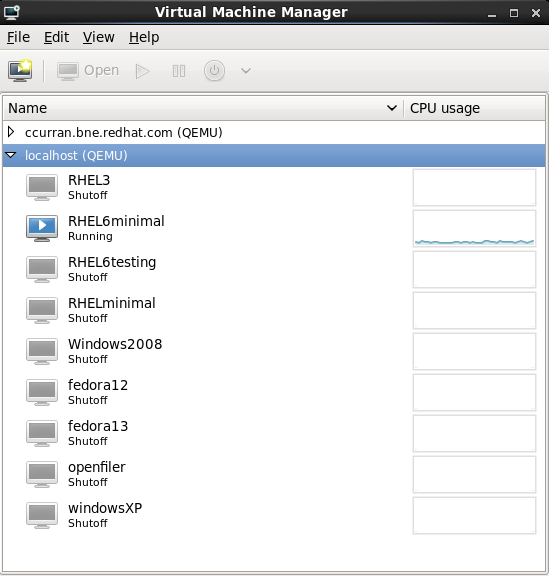
Figure 18.8. New virtualized guest
The Virtual Machine window appears.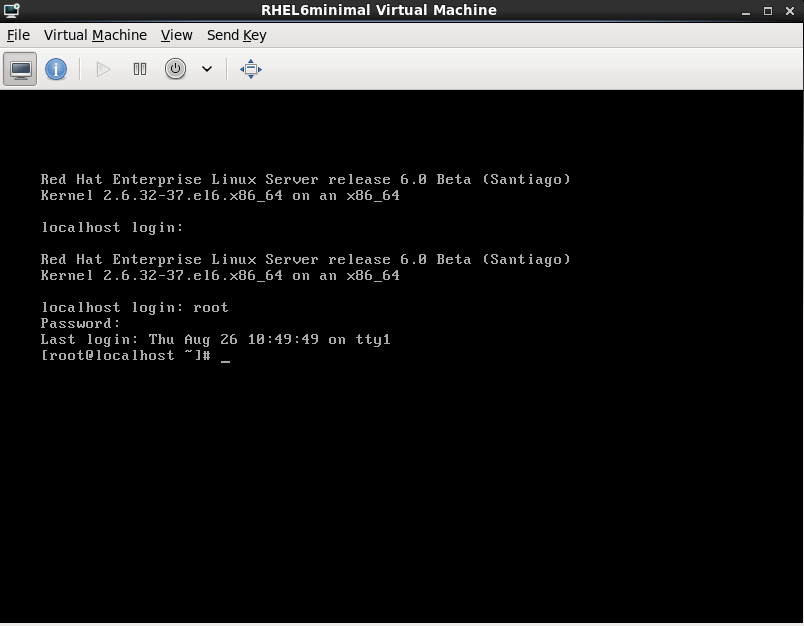
Figure 18.9. Virtual Machine window
Migrate the virtualized guest
From the main virt-manager screen, right-click on the virtual machine and select . The Migrate the virtual machine window appears.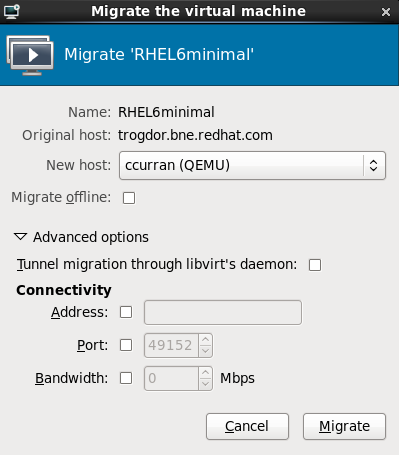
Figure 18.10. Migrate the virtual machine
Select the destination host from the list.Select Migrate offline to disable live migration and do an offline migration.Select advanced options if required. For a standard migration, no of these settings should be modified.Press Migrate to confirm and migrate the virtualized guest.- A status bar tracks the progress of the migration. Once the migration is complete the virtualized guest will appear in the list of virtualized guests on the destination.
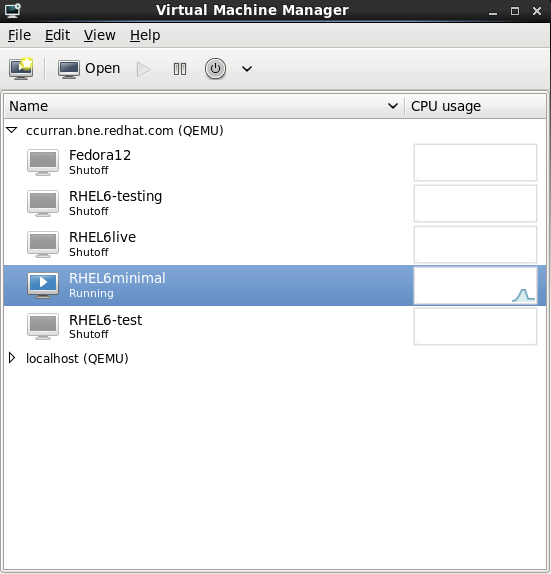
Figure 18.11. Completed migration
Chapter 19. Remote management of virtualized guests
ssh or TLS and SSL.
19.1. Remote management with SSH
libvirt management connection securely tunneled over an SSH connection to manage the remote machines. All the authentication is done using SSH public key cryptography and passwords or passphrases gathered by your local SSH agent. In addition the VNC console for each guest virtual machine is tunneled over SSH.
- you require root log in access to the remote machine for managing virtual machines,
- the initial connection setup process may be slow,
- there is no standard or trivial way to revoke a user's key on all hosts or guests, and
- ssh does not scale well with larger numbers of remote machines.
Configuring password less or password managed SSH access for virt-manager
The following instructions assume you are starting from scratch and do not already have SSH keys set up. If you have SSH keys set up and copied to the other systems you can skip this procedure.
The user is important for remote management
virt-manager must run as the user who
owns the keys to connect to the remote host. That means, if the remote
systems are managed by a non-root user virt-manager
must be run in unprivileged mode. If the remote systems are managed by
the local root user then the SSH keys must be owned and created by root.
virt-manager.
Optional: Changing user
Change user, if required. This example uses the local root user for remotely managing the other hosts and the local host.$ su -
Generating the SSH key pair
Generate a public key pair on the machinevirt-manageris used. This example uses the default key location, in the~/.ssh/directory.$ ssh-keygen -t rsa
Copying the keys to the remote hosts
Remote login without a password, or with a passphrase, requires an SSH key to be distributed to the systems being managed. Use thessh-copy-idcommand to copy the key to root user at the system address provided (in the example,root@example.com).$ ssh-copy-id -i ~/.ssh/id_rsa.pub root@example.com root@example.com's password:
Now try logging into the machine, with thessh root@example.comcommand and check in the.ssh/authorized_keysfile to make sure unexpected keys have not been added.Repeat for other systems, as required.Optional: Add the passphrase to the ssh-agent
Add the passphrase for the SSH key to thessh-agent, if required. On the local host, use the following command to add the passphrase (if there was one) to enable password-less login.# ssh-add ~/.ssh/id_rsa.pub
The libvirt daemon (libvirtd)
The libvirt daemon provide an interface for managing virtual machines. You must have the libvirtd daemon installed and running on every remote host that needs managing.
$ ssh root@somehost
# chkconfig libvirtd on
# service libvirtd start
libvirtd and SSH
are configured you should be able to remotely access and manage your
virtual machines. You should also be able to access your guests with VNC at this point.
Accessing remote hosts with virt-manager
Remote hosts can be managed with the virt-manager GUI tool. SSH keys must belong to the user executing virt-manager for password-less login to work.- Start virt-manager.
- Open the -> menu.
- Input values for the hypervisor type, the connection, Connection->Remote tunnel over SSH, and enter the desired hostname, then click connection.
19.2. Remote management over TLS and SSL
libvirt
management connection opens a TCP port for incoming connections, which
is securely encrypted and authenticated based on x509 certificates.
TLS/SSL access for virt-manager
The libvirt Wiki contains complete details on how to configure TLS/SSL access: http://wiki.libvirt.org/page/TLSSetup- The Certificate Authority Certificate should be placed in
/etc/pki/CA/cacert.pem. - The Client Certificate, signed by the CA, should be placed in either of:
/etc/pki/libvirt-vnc/clientcert.pemfor system wide use, or$HOME/.pki/libvirt-vnc/clientcert.pemfor an individual user.
- The Private Key for the Client Certificate should be placed in either of:
/etc/pki/libvirt-vnc/private/clientkey.pemfor system wide use, or$HOME/.pki/libvirt-vnc/private/clientkey.pemfor an individual user.
19.3. Transport modes
libvirt supports the following transport modes:
Transport Layer Security (TLS)
Transport Layer Security TLS 1.0 (SSL 3.1) authenticated and encrypted TCP/IP socket, usually listening on a public port number. To use this you will need to generate client and server certificates. The standard port is 16514.UNIX sockets
Unix domain sockets are only accessible on the local machine. Sockets are not encrypted, and use UNIX permissions or SELinux for authentication. The standard socket names are/var/run/libvirt/libvirt-sock and /var/run/libvirt/libvirt-sock-ro (for read-only connections).
SSH
Transported over a Secure Shell protocol (SSH) connection. Requires Netcat (the nc package) installed. The libvirt daemon (libvirtd)
must be running on the remote machine. Port 22 must be open for SSH
access. You should use some sort of ssh key management (for example, the
ssh-agent utility) or you will be prompted for a password.
ext
Theext parameter is used
for any external program which can make a connection to the remote
machine by means outside the scope of libvirt. This parameter is
unsupported.
tcp
Unencrypted TCP/IP socket. Not recommended for production use, this is normally disabled, but an administrator can enable it for testing or use over a trusted network. The default port is 16509.Remote URIs
A Uniform Resource Identifier (URI) is used byvirsh and libvirt to connect to a remote host. URIs can also be used with the --connect parameter for the virsh command to execute single commands or migrations on remote hosts.
driver[+transport]://[username@][hostname][:port]/[path][?extraparameters]
Examples of remote management parameters
- Connect to a remote KVM host named
server7, using SSH transport and the SSH usernameccurran.qemu+ssh://ccurran@server7/
- Connect to a remote KVM hypervisor on the host named
server7using TLS.qemu://server7/
- Connect to a remote KVM hypervisor on host
server7using TLS. Theno_verify=1instructs libvirt not to verify the server's certificate.qemu://server7/?no_verify=1
Testing examples
- Connect to the local KVM hypervisor with a non-standard UNIX socket. The full path to the Unix socket is supplied explicitly in this case.
qemu+unix:///system?socket=/opt/libvirt/run/libvirt/libvirt-sock
- Connect to the libvirt daemon with an unencrypted TCP/IP connection to the server with the IP address 10.1.1.10 on port 5000. This uses the test driver with default settings.
test+tcp://10.1.1.10:5000/default
Extra URI parameters
Extra parameters can be appended to remote URIs. The table below Table 19.1, “Extra URI parameters” covers the recognized parameters. All other parameters are ignored. Note that parameter values must be URI-escaped (that is, a question mark (?) is appended before the parameter and special characters are converted into the URI format).Table 19.1. Extra URI parameters
| Name | Transport mode | Description | Example usage |
|---|---|---|---|
| name | all modes | The name passed to the remote virConnectOpen function. The name is normally formed by removing transport, hostname, port number, username and extra parameters from the remote URI, but in certain very complex cases it may be better to supply the name explicitly. | name=qemu:///system |
| command | ssh and ext | The external command. For ext transport this is required. For ssh the default is ssh. The PATH is searched for the command. | command=/opt/openssh/bin/ssh |
| socket | unix and ssh | The path to the UNIX domain socket, which overrides the default. For ssh transport, this is passed to the remote netcat command (see netcat). | socket=/opt/libvirt/run/libvirt/libvirt-sock |
| netcat | ssh |
The
netcat command can be used to connect to remote systems. The default netcat parameter uses the nc command. For SSH transport, libvirt constructs an SSH command using the form below:
command -p port [-l username] hostname
netcat -U socket
The
port, username and hostname parameters can be specified as part of the remote URI. The command, netcat and socket come from other extra parameters.
| netcat=/opt/netcat/bin/nc |
| no_verify | tls | If set to a non-zero value, this disables client checks of the server's certificate. Note that to disable server checks of the client's certificate or IP address you must change the libvirtd configuration. | no_verify=1 |
| no_tty | ssh | If set to a non-zero value, this stops ssh from asking for a password if it cannot log in to the remote machine automatically (for using ssh-agent or similar). Use this when you do not have access to a terminal - for example in graphical programs which use libvirt. | no_tty=1 |
Chapter 20. Overcommitting with KVM
Overcommitting memory
Most operating systems and applications do not use 100% of the available RAM all the time. This behavior can be exploited with KVM. KVM can allocate more memory for virtualized guests than the host has physically available.pdflush process, the cleanup process, starts. The pdflush process kills processes to free memory so the system does not crash. pdflush
may destroy virtualized guests or other system processes which may
cause file system errors and may leave virtualized guests
unbootable.This can cause issues if virtualized guests use their total
RAM.
Warning
Overcommitting with KSM
Configuring swap for overcommitting memory
The swap partition is used for swapping underused memory to the hard drive to speed up memory performance. The default size of the swap partition is calculated from the physical RAM of the host.Important
Example 20.1. Memory overcommit example
Overcommitting virtualized CPUs
The KVM hypervisor supports overcommitting virtualized CPUs. Virtualized CPUs can be overcommitted as far as load limits of virtualized guests allow. Use caution when overcommitting VCPUs as loads near 100% may cause dropped requests or unusable response times.Always test first
Chapter 21. KSM
qemu-kvm
process. Once the guest is running the contents of the guest operating
system image can be shared when guests are running the same operating
system or applications. KSM only identifies and merges identical pages
which does not interfere with the guest or impact the security of the
host or the guests. KSM allows KVM to request that these identical guest
memory regions be shared.
- The
ksmservice starts and stops the KSM kernel thread. - The
ksmtunedservice controls and tunes theksm, dynamically managing same-page merging. Theksmtunedservice startsksmand stops theksmservice if memory sharing is not necessary. Theksmtunedservice must be told with theretuneparameter to run when new virtualized guests are created or destroyed.
The KSM service
Theksm service is a standard Linux daemon that uses the KSM kernel features.
ksm service is not started, KSM shares only 2000 pages. This default is low and provides limited memory saving benefits.
ksm service is started, KSM will share up to half of the host system's main memory. Start the ksm service to enable KSM to share more memory.
# service ksm start Starting ksm: [ OK ]
ksm service can be added to the default startup sequence. Make the ksm service persistent with the chkconfig command.
# chkconfig ksm on
The KSM tuning service
Theksmtuned service does not have any options. The ksmtuned service loops and adjusts ksm. The ksmtuned service is notified by libvirt when a virtualized guest is created or destroyed.
# service ksmtuned start Starting ksmtuned: [ OK ]
ksmtuned service can be tuned with the retune parameter. The retune parameter instructs ksmtuned to run tuning functions manually.
/etc/ksmtuned.conf file is the configuration file for the ksmtuned service. The file output below is the default ksmtuned.conf file.
# Configuration file for ksmtuned. # How long ksmtuned should sleep between tuning adjustments # KSM_MONITOR_INTERVAL=60 # Millisecond sleep between ksm scans for 16Gb server. # Smaller servers sleep more, bigger sleep less. # KSM_SLEEP_MSEC=10 # KSM_NPAGES_BOOST=300 # KSM_NPAGES_DECAY=-50 # KSM_NPAGES_MIN=64 # KSM_NPAGES_MAX=1250 # KSM_THRES_COEF=20 # KSM_THRES_CONST=2048 # uncomment the following to enable ksmtuned debug information # LOGFILE=/var/log/ksmtuned # DEBUG=1
KSM variables and monitoring
KSM stores monitoring data in the/sys/kernel/mm/ksm/ directory. Files in this directory are updated by the kernel and are an accurate record of KSM usage and statistics.
/etc/ksmtuned.conf file as noted below.
The /sys/kernel/mm/ksm/ files
- full_scans
- Full scans run.
- pages_shared
- Total pages shared.
- pages_sharing
- Pages presently shared.
- pages_to_scan
- Pages not scanned.
- pages_unshared
- Pages no longer shared.
- pages_volatile
- Number of volatile pages.
- run
- Whether the KSM process is running.
- sleep_millisecs
- Sleep milliseconds.
/var/log/ksmtuned log file if the DEBUG=1 line is added to the /etc/ksmtuned.conf file. The log file location can be changed with the LOGFILE parameter. Changing the log file location is not advised and may require special configuration of SELinux settings.
/etc/sysconfig/ksm file can manually set a number or all pages used by KSM as not swappable.
- Open the
/etc/sysconfig/ksmfile with a text editor.# The maximum number of unswappable kernel pages # which may be allocated by ksm (0 for unlimited) # If unset, defaults to half of total memory # KSM_MAX_KERNEL_PAGES=
- Uncomment the
KSM_MAX_KERNEL_PAGESline to manually configure the number of unswappable pages for KSM. Setting this variable to0configures KSM to keep all identical pages in main memory which can improve performance if the system has sufficient main memory.# The maximum number of unswappable kernel pages # which may be allocated by ksm (0 for unlimited) # If unset, defaults to half of total memory KSM_MAX_KERNEL_PAGES=0
Deactivating KSM
KSM has a performance overhead which may be too large for certain environments or host systems.ksm service and the ksmtuned service. Stopping the services deactivates KSM but does not persist after restarting.
# service ksm stop Stopping ksm: [ OK ] # service ksmtuned stop Stopping ksmtuned: [ OK ]
chkconfig command. To turn off the services, run the following commands:
# chkconfig ksm off # chkconfig ksmtuned off
Chapter 22. Advanced virtualization administration
Note
22.1. Guest scheduling
22.2. Advanced memory management
22.3. Guest block I/O throttling
22.4. Guest network I/O throttling
Chapter 23. Migrating to KVM from other hypervisors using virt-v2v
virt-v2v command converts guests from a foreign hypervisor to run on KVM, managed by libvirt. The virt-v2v
command can currently convert Red Hat Enterprise Linux 4, Red Hat
Enterprise Linux 5, Windows Vista, Windows 7, Windows Server 2003 and
Windows Server 2008 virtualized guests running on Xen, KVM and VMware
ESX. The virt-v2v command enables para-virtualized (virtio) drivers in the converted guest if possible.
virt-v2v is available on Red Hat Network (RHN) in the Red Hat Enterprise Linux Server (v. 6 for 64-bit x86_64) or Red Hat Enterprise Linux Workstation (v.6 for x86_64) channel.
virt-v2v tool requires root access to the host system.
Installing virt-v2v
To installvirt-v2v from RHN, ensure the system is subscribed to the appropriate channel, then run:
yum install virt-v2v23.1. Preparing to convert a virtualized guest
- Create a local storage domain for transferred storage
virt-v2vcopies the guest storage to a locally defined libvirt storage pool during import. This pool can be defined using any libvirt tool, and can be of any type. The simplest way to create a new pool is withvirt-manager. Select your host, right click and select details.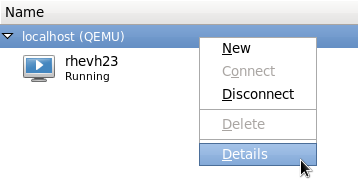
Figure 23.1. Select host details
Select the Storage tab.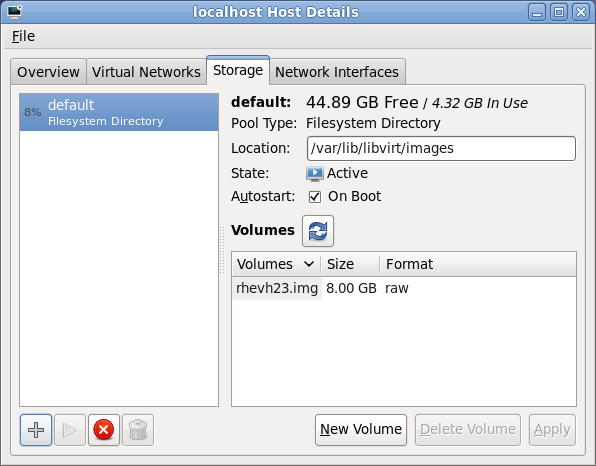
Figure 23.2. The storage tab
Click the plus sign (+) button to add a new storage pool.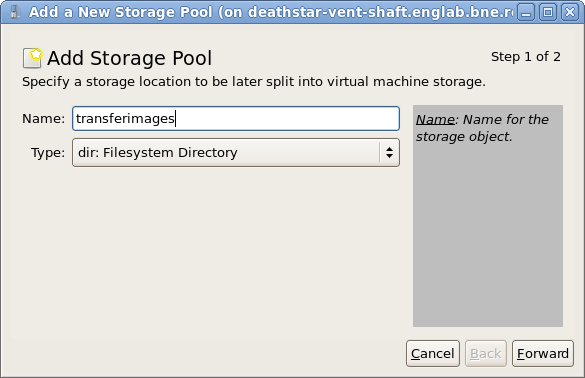
Figure 23.3. Adding a storage pool
- Create local network interfaces.The local machine must have an appropriate network to which the converted virtualized guest can connect. This is likely to be a bridge interface. A bridge interface can be created using standard tools on the host. Since version 0.8.3,
virt-managercan also create and manage bridges. - Specify network mappings in
virt-v2v.conf. This step is optional, and is not required for most use cases.If your virtualized guest has multiple network interfaces,/etc/virt-v2v.confmust be edited to specify the network mapping for all interfaces. You can specify an alternativevirt-v2v.conffile with the-fparameter.If your virtualized guest only has a single network interface, it is simpler to use the--networkor--bridgeparameters, rather than modifyingvirt-v2v.conf.
Preparing to convert a virtualized guest running Linux
Before a virtualized guest running Linux can be converted, ensure that the following steps are completed.- Obtain the softwareAs part of the conversion process,
virt-v2vmay install a new kernel and drivers on the virtualized guest. If the host runningvirt-v2vis registered to Red Hat Network (RHN), the required packages will be automatically downloaded. For environments where RHN is not available, thevirt-v2v.conffile references a list of RPMs used for this purpose. The RPMs relevant to your virtualized guest must be downloaded manually from RHN and made available in the directory specified by the path-root configuration element, which by default is/var/lib/virt-v2v/software/.virt-v2vwill display an error similar to Example 23.1, “Missing Package error” if software it depends upon for a particular conversion is not available.Example 23.1. Missing Package error
virt-v2v: Installation failed because the following files referenced in the configuration file are required, but missing: rhel/5/kernel-2.6.18-128.el5.x86_64.rpm rhel/5/ecryptfs-utils-56-8.el5.x86_64.rpm rhel/5/ecryptfs-utils-56-8.el5.i386.rpm
To obtain the relevant RPMs for your environment, repeat these steps for each missing package:- Login to Red Hat Network
- Select Channels
- Use the Filter by Product Channel function to select the channel for the version of Red Hat Enterprise Linux running on the virtualized guest. In the case of the example shown in Example 23.1, “Missing Package error”, the channel is Red Hat Enterprise Linux Server 5.3.
- Select the Packages tab
- Use the Filter by Package function to locate the missing package
- Select the package exactly matching the one shown in the error message. For the the example shown in Example 23.1, “Missing Package error”, the first package is kernel-2.6.18-128.el5.x86_64
- Select Download Package at the bottom of the package details page
- Save the downloaded package to the appropriate directory in
/var/lib/virt-v2v/software. For Red Hat Enterprise Linux 5, the directory is/var/lib/virt-v2v/software/rhel/5
Preparing to convert a virtualized guest running Windows
Before a virtualized guest running Windows can be converted, ensure that the following steps are completed.Important
- Obtain the Guest Tools ISOAs part of the conversion process for virtualized guests running Windows, the Red Hat Enterprise Virtualization Manager will install drivers using the Guest Tools ISO. See Section 23.4.2, “Configuration changes for Windows virtualized guests” for details of the process. The Guest Tools ISO is obtained as follows:
- From the Red Hat Enterprise Virtualization Manager, Login to Red Hat Network
- Click on Download Software
- Select the Red Hat Enterprise Virtualization (x86-64) channel
- Select the Red Hat Enterprise Virt Manager for Desktops (v.2 x86) or Red Hat Enterprise Virt Manager for Desktops (v.2 x86) channel, as appropriate for your subscription.
- Download Guest Tools ISO for 2.2 and save it locally
- Upload the Guest Tools ISO to the Red Hat Enterprise Virtualization ManagerUpload the Guest Tools ISO using the ISO Uploader. See the Red Hat Enterprise Virtualization for Servers Administration Guide for instructions.
- Ensure that the libguestfs-winsupport package is installed on the host running
virt-v2v. This package provides support for NTFS, which is used by many Windows systems. If you attempt to convert a virtualized guest using NTFS without the libguestfs-winsupport package installed, the conversion will fail. - Ensure that the virtio-win package is installed on the host running
virt-v2v. This package provides para-virtualized block and network drivers for Windows guests. If you attempt to convert a virtualized guest running Windows without the virtio-win package installed, the conversion will fail giving an error message concerning missing files.
Preparing to convert a local Xen virtualized guest
The following is required when converting virtualized guests on a host which used to run Xen, but has been updated to run KVM. It is not required when converting a Xen guest imported directly from a running libvirt/Xen instance.- Obtain the XML for the virtualized guest
virt-v2vuses a libvirt domain description to determine the current configuration of the virtualized guest, including the location of its storage. Before starting the conversion, obtain this from the host running the virtualized guest with the following command:virsh dumpxml vm-name > vm-name.xml
This will require booting into a Xen kernel to obtain the XML, as libvirt needs to connect to a running Xen hypervisor to obtain its metadata. The conversion process is optimized for KVM, so obtaining domain data while running a Xen kernel, then performing the conversion using a KVM kernel will be more efficient than running the conversion on a Xen kernel.
23.2. Converting virtualized guests
virt-v2v
to perform the actual conversions. This section provides the steps to
convert the virtualized guests, and the reference table for virt-v2v.
Note that conversions are resource intensive processes, involving
copying the whole disk image for a virtualized guest. In typical
environments, converting a single virtualized guest takes approximately
5-10 minutes.
23.2.1. virt-v2v
virt-v2v -i libvirtxml -op pool --bridge brname vm-name.xml virt-v2v -op pool --network netname vm-name virt-v2v -ic esx://esx.example.com/?no_verify=1 -op pool --bridge brname vm-name
Parameters
-i input
|
Specifies the input method to obtain the guest for conversion. The default is libvirt. Supported options are:
|
-ic URI
|
Specifies the connection to use when using the libvirt input method. If omitted, this defaults to qemu:///system.
virt-v2v can currently
automatically obtain guest storage from local libvirt connections, ESX
connections, and connections over SSH. Other types of connection are not
supported.
|
-o method
|
Specifies the output method. If no output method is specified, the default is libvirt. Supported output methods are:
|
-oc URI
|
Specifies the libvirt connection to use to create the
converted guest. If omitted, this defaults to qemu:///system. Note that
virt-v2v must be able to write directly to storage described by this
libvirt connection. This makes writing to a remote connection
impractical at present.
|
-op pool
|
Specifies the pool which will be used to create new storage for the converted guest.
|
-osd domain
|
Specifies the path to an existing Red Hat Enterprise Virtualization Export storage domain.
The domain must be in the format <host > <path>; for example,
storage.example.com:/rhev/export. The nfs export must be mountable and writable by the machine running virt-v2v.
|
-f file | --config file
| Load the virt-v2v configuration from file. Defaults to /etc/virt-v2v.conf if it exists. |
-n network | --network network
|
Map all guest bridges or networks which don't have a mapping in the configuration file to the specified network.
This option cannot be used in conjunction with --bridge.
|
-b bridge | --bridge bridge
|
Map all guest bridges or networks which don't have a mapping in the configuration file to the specified bridge.
This option cannot be used in conjunction with --network.
|
--help
| Display brief help. |
--version
| Display version number and exit. |
23.2.2. Converting a local Xen virtualized guest
virt-v2v -i libvirtxml -op pool --bridge brname vm-name.xml
pool is the local storage pool to hold the image, brname is the name of a local network bridge to connect the converted guest's network to, and vm-name.xml is the path to the virtualized guest's exported XML. You may also use the --network parameter to connect to a locally managed network, or specify multiple mappings in /etc/virt-v2v.conf.
virt-v2v
will attempt to install a new kernel during the conversion process. You
can avoid this requirement by installing a regular kernel, which won't
reference a hypervisor in its name, alongside the Xen kernel prior to
conversion. You should not make this newly installed kernel your default
kernel, because Xen will not boot it. virt-v2v will make it the default during conversion.
23.2.3. Converting a remote Xen virtualized guest
virt-v2v -ic xen+ssh://root@vmhost.example.com -op pool --bridge brname vm-name
vmhost.example.com is the host running the virtualized guest, pool is the local storage pool to hold the image, brname is the name of a local network bridge to connect the converted guest's network to, and vm-name is the domain of the Xen virtualized guest. You may also use the --network parameter to connect to a locally managed network, or specify multiple mappings in /etc/virt-v2v.conf.
virt-v2v
will attempt to install a new kernel during the conversion process. You
can avoid this requirement by installing a regular kernel, which won't
reference a hypervisor in its name, alongside the Xen kernel prior to
conversion. You should not make this newly installed kernel your default
kernel, because Xen will not boot it. virt-v2v will make it the default during conversion.
23.2.4. Converting a VMware ESX virtualized guest
virt-v2v -ic esx://esx.example.com/ -op pool --bridge brname vm-name
esx.example.com is the VMware ESX server, pool is the local storage pool to hold the image, brname is the name of a local network bridge to connect the converted guest's network to, and vm-name is the name of the virtualized guest. You may also use the --network parameter to connect to a locally managed network, or specify multiple mappings in /etc/virt-v2v.conf.
Authenticating to the ESX server
Connecting to the ESX server will require authentication.virt-v2v
supports password authentication when connecting to ESX. It reads
passwords from $HOME/.netrc. The format of this file is described in the
netrc(5) man page. An example entry is:
machine esx.example.com login root password s3cr3t
.netrc permissions
.netrc file must have a permission mask of 0600 to be read correctly by virt-v2v
Connecting to an ESX server with an invalid certificate
In non-production environments, the ESX server may have a non-valid certificate, for example a self-signed certificate. In this case, certificate checking can be explicitly disabled by adding '?no_verify=1' to the connection URI as shown below:... -ic esx://esx.example.com/?no_verify=1 ...
23.2.5. Converting a virtualized guest running Windows
Important
virt-v2v -i libvirtxml -o rhev -osd storage.example.com:/exportdomain --network rhevm vm-name.xml
vm-name.xml is the path to the virtualized guest's exported xml, and storage.example.com:/exportdomain is the export storage domain. You may also use the --network parameter to connect to a locally managed network, or specify multiple mappings in /etc/virt-v2v.conf.
virt-v2v
will attempt to install a new kernel during the conversion process. You
can avoid this requirement by installing a regular kernel, which won't
reference a hypervisor in its name, alongside the Xen kernel prior to
conversion. You should not make this newly installed kernel your default
kernel, because Xen will not boot it. virt-v2v will make it the default during conversion.
23.3. Running converted virtualized guests
virt-v2v will
create a new libvirt domain for the converted virtualized guest with the
same name as the original virtualized guest. It can be started as usual
using libvirt tools, for example virt-manager.
Guest network configuration
virt-v2v cannot currently reconfigure a guest's network configuration. If the converted guest is not connected to the same subnet as the source, its network configuration may have to be updated.23.4. Configuration changes
virt-v2v
will make certain changes to a guest to enable it to run on a KVM
hypervisor either with or without virtio drivers. These changes are
specific to the guest operating system. The details specified here
pertain to supported Red Hat based Linux distributions and Windows.
23.4.1. Configuration changes for Linux virtualized guests
Table 23.1. virt-v2v changes to Linux virtualized guests
| Change | Description |
|---|---|
| Kernel | Un-bootable, that is, xen para-virtualized, kernels will be uninstalled. No new kernel will be installed if there is a remaining kernel which supports virtio. If no remaining kernel supports virtio and the configuration file specifies a new kernel it will be installed and configured as the default. |
| X reconfiguration | If the guest has X configured, its display driver will be updated. See GUEST DRIVERS for which driver will be used. |
| Rename block devices | If changes have caused block devices to change name, these changes will be reflected in /etc/fstab |
| Configure device drivers | Whether virtio or non-virtio drivers are configured, virt-v2v will ensure that the correct network and block drivers are specified in the modprobe configuration. |
| initrd | virt-v2v will ensure that the initrd for the default kernel supports booting the root device, whether it is using virtio or not. |
| SELinux | virt-v2v will initiate a relabel of the guest on the next boot. This ensures that any changes it has made are correctly labeled according to the guest's local policy. |
virt-v2v will configure the following drivers in a Linux guest:
Table 23.2. Configured drivers in a Linux Guest
| Para-virtualized driver type | Driver module |
|---|---|
| Display | cirrus |
| Storage | virtio_blk |
| Network | virtio_net |
| In addition, initrd will preload the virtio_pci driver |
| Other drivers | |
|---|---|
| Display | cirrus |
| Block | Virtualized IDE |
| Network | Virtualized e1000 |
23.4.2. Configuration changes for Windows virtualized guests
Warning
virt-v2v.
These packages provide support for NTFS and Windows para-virtualized
block and network drivers. If you attempt to convert a virtualized guest
using NTFS without the libguestfs-winsupport package installed, the conversion will fail. If you attempt to convert a virtualized guest running Windows without the virtio-win package installed, the conversion will fail giving an error message concerning missing files.
virt-v2v can convert virtualized guests
running Windows Vista, Windows 7, Windows Server 2003 and Windows
Server 2008. The conversion process for virtualized guests running
Windows is slightly to different to the process for virtualized guests
running Linux. Windows virtualized guest images are converted as
follows:
- virt-v2v installs virtio block drivers.
- virt-v2v installs the CDUpgrader utility.
- virt-v2v makes registry changes to include the virtio block drivers in the CriticalDeviceDatabase section of the registry, and ensure the CDUpgrader service is started at the next boot.
virt-v2v has completed
the conversion. The converted virtualized guest is now bootable, but
does not yet have all the drivers installed necessary to function
correctly. The conversion must be finished by the Red Hat Enterprise
Virtualization Manager. The Manager performs the following steps:
- The virtualized guest is imported and run on the Manager. See the Red Hat Enterprise Virtualization for Servers Administration Guide for details.
Important
The first boot stage can take several minutes to run, and must not be interrupted. It will run automatically without any administrator intervention other than starting the virtualized guest. To ensure the process is not interrupted, no user should login to the virtualized guest until it has quiesced. You can check for this in the Manager GUI. - The Manager attaches the Guest Tools CD to the virtual machine.
Note
The Guest Tools ISO must be uploaded using the ISO Uploader for this step to succeed. See Preparing to convert a virtualized guest running Windows for instructions. - CDUpgrader detects the Guest Tools CD and installs all the virtio drivers from it, including a re-install of the virtio block drivers.
Chapter 24. Miscellaneous administration tasks
- 24.1. Automatically starting guests
- 24.2. Using qemu-img
- 24.3. Verifying virtualization extensions
- 24.4. Setting KVM processor affinities
- 24.5. Generating a new unique MAC address
- 24.6. Improving guest response time
- 24.7. Very Secure
ftpd - 24.8. Disable SMART disk monitoring for guests
- 24.9. Configuring a VNC Server
- 24.10. Gracefully shutting down guests
- 24.11. Virtual machine timer management with libvirt
24.1. Automatically starting guests
virsh to set a guest, TestServer, to automatically start when the host boots.
# virsh autostart TestServer
Domain TestServer marked as autostarted
--disable parameter
# virsh autostart --disable TestServer
Domain TestServer unmarked as autostarted
24.2. Using qemu-img
qemu-img command line tool is used for formatting various file systems used by KVM. qemu-img should be used for formatting virtualized guest images, additional storage devices and network storage. qemu-img options and usages are listed below.
Formatting and creating new images or devices
Create the new disk imagefilename of size size and format format.
# qemu-img create [-6] [-e] [-b base_image] [-fformat]filename[size]
Convert an existing image to another format
Theconvert option is used for converting a recognized format to another image format.
# qemu-img convert [-c] [-e] [-f format]filename[-Ooutput_format]output_filename
filename to disk image output_filename using format output_format. The disk image can be optionally encrypted with the -e option or compressed with the -c option.
qcow2 format supports
encryption or compression. the compression is read-only. It means that
if a compressed sector is rewritten, then it is rewritten as
uncompressed data.
qcow or cow. The empty sectors are detected and suppressed from the destination image.
getting image information
theinfo parameter displays information about a disk image. the format for the info option is as follows:
# qemu-img info [-f format] filename
Supported formats
The format of an image is usually guessed automatically. The following formats are supported:-
raw - Raw disk image format (default). This format has the advantage of being simple and easily exportable to all other emulators. If your file system supports holes (for example in ext2 or ext3 on Linux or NTFS on Windows), then only the written sectors will reserve space. Use
qemu-img infoto know the real size used by the image orls -lson Unix/Linux. -
qcow2 - QEMU image format, the most versatile format. Use it to have smaller images (useful if your file system does not supports holes, for example: on Windows), optional AES encryption, zlib based compression and support of multiple VM snapshots.
-
qcow - Old QEMU image format. Only included for compatibility with older versions.
-
cow - User Mode Linux Copy On Write image format. The
cowformat is included only for compatibility with previous versions. It does not work with Windows. -
vmdk - VMware 3 and 4 compatible image format.
-
cloop - Linux Compressed Loop image, useful only to reuse directly compressed CD-ROM images present for example in the Knoppix CD-ROMs.
24.3. Verifying virtualization extensions
- Run the following command to verify the CPU virtualization extensions are available:
$ grep -E 'svm|vmx' /proc/cpuinfo
- Analyze the output.
- The following output contains a
vmxentry indicating an Intel processor with the Intel VT extensions:flags : fpu tsc msr pae mce cx8 apic mtrr mca cmov pat pse36 clflush dts acpi mmx fxsr sse sse2 ss ht tm syscall lm constant_tsc pni monitor ds_cpl vmx est tm2 cx16 xtpr lahf_lm
- The following output contains an
svmentry indicating an AMD processor with the AMD-V extensions:flags : fpu tsc msr pae mce cx8 apic mtrr mca cmov pat pse36 clflush mmx fxsr sse sse2 ht syscall nx mmxext fxsr_opt lm 3dnowext 3dnow pni cx16 lahf_lm cmp_legacy svm cr8legacy ts fid vid ttp tm stc
If any output is received, the processor has the hardware virtualization extensions. However in some circumstances manufacturers disable the virtualization extensions in BIOS.The "flags:" output content may appear multiple times, once for each hyperthread, core or CPU on the system.The virtualization extensions may be disabled in the BIOS. If the extensions do not appear or full virtualization does not work refer to Procedure 34.1, “Enabling virtualization extensions in BIOS”. For users of the KVM hypervisor
If the kvm package is installed. I As an additional check, verify that thekvmmodules are loaded in the kernel:# lsmod | grep kvm
If the output includeskvm_intelorkvm_amdthen thekvmhardware virtualization modules are loaded and your system meets requirements. sudo
Additional output
virsh command can output a full list of virtualization system capabilities. Run virsh capabilities as root to receive the complete list.
24.4. Setting KVM processor affinities
Identifying CPU and NUMA topology
The first step in deciding what policy to apply is to determine the host’s memory and CPU topology. Thevirsh nodeinfo command provides information about how many sockets, cores and hyperthreads there are attached a host.
# virsh nodeinfo CPU model: x86_64 CPU(s): 8 CPU frequency: 1000 MHz CPU socket(s): 2 Core(s) per socket: 4 Thread(s) per core: 1 NUMA cell(s): 1 Memory size: 8179176 kB
virsh capabilities to get additional output data on the CPU configuration.
# virsh capabilities
<capabilities>
<host>
<cpu>
<arch>x86_64</arch>
</cpu>
<migration_features>
<live/>
<uri_transports>
<uri_transport>tcp</uri_transport>
</uri_transports>
</migration_features>
<topology>
<cells num='2'>
<cell id='0'>
<cpus num='4'>
<cpu id='0'/>
<cpu id='1'/>
<cpu id='2'/>
<cpu id='3'/>
</cpus>
</cell>
<cell id='1'>
<cpus num='4'>
<cpu id='4'/>
<cpu id='5'/>
<cpu id='6'/>
<cpu id='7'/>
</cpus>
</cell>
</cells>
</topology>
<secmodel>
<model>selinux</model>
<doi>0</doi>
</secmodel>
</host>
[ Additional XML removed ]
</capabilities>Decide which NUMA node can run the guest
Locking a guest to a particular NUMA node offers no benefit if that node does not have sufficient free memory for that guest. libvirt stores information on the free memory available on each node. Use thevirsh freecell command to display the free memory on all NUMA nodes.
# virsh freecell 0: 2203620 kB 1: 3354784 kB
Lock a guest to a NUMA node or physical CPU set
Once you have determined which node to run the guest on, refer to the capabilities data (the output of thevirsh capabilities command) about NUMA topology.
- Extract from the
virsh capabilitiesoutput.<topology> <cells num='2'> <cell id='0'> <cpus num='4'> <cpu id='0'/> <cpu id='1'/> <cpu id='2'/> <cpu id='3'/> </cpus> </cell> <cell id='1'> <cpus num='4'> <cpu id='4'/> <cpu id='5'/> <cpu id='6'/> <cpu id='7'/> </cpus> </cell> </cells> </topology> - Observe that the node 1,
<cell id='1'>, has physical CPUs 4 to 7. - The guest can be locked to a set of CPUs by appending the
cpusetattribute to the configuration file.- While the guest is offline, open the configuration file with
virsh edit. - Locate where the guest's virtual CPU count is specified. Find the
vcpuselement.<vcpus>4</vcpus>
The guest in this example has four CPUs. - Add a
cpusetattribute with the CPU numbers for the relevant NUMA cell.<vcpus cpuset='4-7'>4</vcpus>
- Save the configuration file and restart the guest.
Automatically locking guests to CPUs with virt-install
Thevirt-install provisioning tool provides a simple way to automatically apply a 'best fit' NUMA policy when guests are created.
cpuset option for virt-install can use a CPU set of processors or the parameter auto. The auto parameter automatically determines the optimal CPU locking using the available NUMA data.
--cpuset=auto with the virt-install command when creating new guests.
Tuning CPU affinity on running guests
There may be times where modifying CPU affinities on running guests is preferable to rebooting the guest. Thevirsh vcpuinfo and virsh vcpupin commands can perform CPU affinity changes on running guests.
virsh vcpuinfo command gives up to date information about where each virtual CPU is running.
guest1 is a guest with four virtual CPUs is running on a KVM host.
# virsh vcpuinfo guest1
VCPU: 0
CPU: 3
State: running
CPU time: 0.5s
CPU Affinity: yyyyyyyy
VCPU: 1
CPU: 1
State: running
CPU Affinity: yyyyyyyy
VCPU: 2
CPU: 1
State: running
CPU Affinity: yyyyyyyy
VCPU: 3
CPU: 2
State: running
CPU Affinity: yyyyyyyyvirsh vcpuinfo output (the yyyyyyyy value of CPU Affinity) shows that the guest can presently run on any CPU.
# virsh vcpupinguest10 4 # virsh vcpupinguest11 5 # virsh vcpupinguest12 6 # virsh vcpupinguest13 7
virsh vcpuinfo command confirms the change in affinity.
# virsh vcpuinfo guest1
VCPU: 0
CPU: 4
State: running
CPU time: 32.2s
CPU Affinity: ----y---
VCPU: 1
CPU: 5
State: running
CPU time: 16.9s
CPU Affinity: -----y--
VCPU: 2
CPU: 6
State: running
CPU time: 11.9s
CPU Affinity: ------y-
VCPU: 3
CPU: 7
State: running
CPU time: 14.6s
CPU Affinity: -------y# grep pid /var/run/libvirt/qemu/guest1.xml
<domstatus state='running' pid='4907'>
# grep Cpus_allowed_list /proc/4907/task/*/status
/proc/4907/task/4916/status:Cpus_allowed_list: 4
/proc/4907/task/4917/status:Cpus_allowed_list: 5
/proc/4907/task/4918/status:Cpus_allowed_list: 6
/proc/4907/task/4919/status:Cpus_allowed_list: 7
</section>24.5. Generating a new unique MAC address
macgen.py. Now from that directory you can run the script using ./macgen.py and it will generate a new MAC address. A sample output would look like the following:
$ ./macgen.py 00:16:3e:20:b0:11 #!/usr/bin/python # macgen.py script to generate a MAC address for virtualized guests # import random # def randomMAC(): mac = [ 0x00, 0x16, 0x3e, random.randint(0x00, 0x7f), random.randint(0x00, 0xff), random.randint(0x00, 0xff) ] return ':'.join(map(lambda x: "%02x" % x, mac)) # print randomMAC()
Another method to generate a new MAC for your guest
You can also use the built-in modules ofpython-virtinst to generate a new MAC address and UUID for use in a guest configuration file:
# echo 'import virtinst.util ; print\ virtinst.util.uuidToString(virtinst.util.randomUUID())' | python # echo 'import virtinst.util ; print virtinst.util.randomMAC()' | python
#!/usr/bin/env python # -*- mode: python; -*- print "" print "New UUID:" import virtinst.util ; print virtinst.util.uuidToString(virtinst.util.randomUUID()) print "New MAC:" import virtinst.util ; print virtinst.util.randomMAC() print ""
24.6. Improving guest response time
- Severely overcommitted memory.
- Overcommitted memory with high processor usage
- Other (not
qemu-kvmprocesses) busy or stalled processes on the host.
pdflush kernel function. pdflush
automatically kills processes to keep the system from crashing and to
free up memory. Always ensure the host has sufficient swap space when
overcommitting memory.
Warning: turning off swap
Turning off swap
Swap usage can be completely turned off to prevent guests from being unresponsive while they are moved back to main memory. This may improve performance but will expose the system to certain risks.swapoff command can disable all swap partitions and swap files on a system.
# swapoff -a
swap lines from the /etc/fstab file and restart the host system.
Using SSDs for swap
Using Solid State Drives (SSDs) for swap storage may improve the performance of virtualized guests.24.7. Very Secure ftpd
vsftpd can provide access to
installation trees for para-virtualized guests (for example, the Red Hat
Enterprise Linux repositories) or other data. If you have not installed
vsftpd during the server installation you can grab the RPM package from your Server directory of your installation media and install it using the rpm -ivh vsftpd*.rpm (note that the RPM package must be in your current directory).
- To configure
vsftpd, edit/etc/passwdusingvipwand change the ftp user's home directory to the directory where you are going to keep the installation trees for your guests. An example entry for the FTP user would look like the following:ftp:x:14:50:FTP User:/installtree/:/sbin/nologin
- Verify that
vsftpdis not enabled using thechkconfig --list vsftpd:$ chkconfig --list vsftpd vsftpd 0:off 1:off 2:off 3:off 4:off 5:off 6:off
- Run the
chkconfig --levels 345 vsftpd onto start vsftpd automatically for run levels 3, 4 and 5. - Use the
chkconfig --list vsftpdcommand to verify thevsftpddaemon is enabled to start during system boot:$ chkconfig --list vsftpd vsftpd 0:off 1:off 2:off 3:on 4:on 5:on 6:off
- use the
service vsftpd start vsftpdto start the vsftpd service:$service vsftpd start vsftpd Starting vsftpd for vsftpd: [ OK ]
24.8. Disable SMART disk monitoring for guests
# service smartd stop # chkconfig --del smartd
24.9. Configuring a VNC Server
vino-preferences command.
- Edit the
~/.vnc/xstartupfile to start a GNOME session whenever vncserver is started. The first time you run the vncserver script it will ask you for a password you want to use for your VNC session. - A sample
xstartupfile:#!/bin/sh # Uncomment the following two lines for normal desktop: # unset SESSION_MANAGER # exec /etc/X11/xinit/xinitrc [ -x /etc/vnc/xstartup ] && exec /etc/vnc/xstartup [ -r $HOME/.Xresources ] && xrdb $HOME/.Xresources #xsetroot -solid grey #vncconfig -iconic & #xterm -geometry 80x24+10+10 -ls -title "$VNCDESKTOP Desktop" & #twm & if test -z "$DBUS_SESSION_BUS_ADDRESS" ; then eval `dbus-launch --sh-syntax –exit-with-session` echo "D-BUS per-session daemon address is: \ $DBUS_SESSION_BUS_ADDRESS" fi exec gnome-session
24.10. Gracefully shutting down guests
Minimal installation installation option will not install the acpid package.
virsh shutdown command is executed. The virsh shutdown command is designed to gracefully shut down virtualized guests.
virsh shutdown is easier and safer for system administration. Without graceful shut down with the virsh shutdown command a system administrator must log into a virtualized guest manually or send the Ctrl-Alt-Del key combination to each guest.
Other virtualized operating systems
virsh shutdown
command requires that the guest operating system is configured to
handle ACPI shut down requests. Many operating systems require
additional configuration on the guest operating system to accept ACPI
shut down requests.
Procedure 24.1. Workaround for Red Hat Enterprise Linux 6
Install the acpid package
Theacpidservice listen and processes ACPI requests.Log into the guest and install the acpid package on the guest:# yum install acpid
Enable the acpid service
Set theacpidservice to start during the guest boot sequence and start the service:# chkconfig acpid on # service acpid start
virsh shutdown command is used.
24.11. Virtual machine timer management with libvirt
virsh edit command. See Editing a guest's configuration file for details.
<clock>
The clock element is used to determine how the guest clock is synchronized with the host clock. The clock element has the following attributes:offset
Determines how the guest clock is offset from the host clock. The offset attribute has the following possible values:Table 24.1. Offset attribute values
Value Description utc The guest clock will be synchronized to UTC when booted. localtime The guest clock will be synchronized to the host's configured timezone when booted, if any. timezone The guest clock will be synchronized to a given timezone, specified by the timezoneattribute.variable The guest clock will be synchronized to an arbitrary offset from UTC. The delta relative to UTC is specified in seconds, using the adjustmentattribute. The guest is free to adjust the Real Time Clock (RTC) over time and expect that it will be honored following the next reboot. This is in contrast toutcmode, where any RTC adjustments are lost at each reboot.timezone
The timezone to which the guest clock is to be synchronized.adjustment
The delta for guest clock synchronization. In seconds, relative to UTC.
Example 24.1. Always synchronize to UTC
<clock offset="utc" />
Example 24.2. Always synchronize to the host timezone
<clock offset="localtime" />
Example 24.3. Synchronize to an arbitrary timezone
<clock offset="timezone" timezone="Europe/Paris" />
Example 24.4. Synchronize to UTC + arbitrary offset
<clock offset="variable" adjustment="123456" />
<timer>
A clock element can have zero or more timer elements as children. The timer element specifies a time source used for guest clock synchronization. The timer element has the following attributes. Only thename is required, all other attributes are optional.
name
The name of the time source to use.Table 24.2. name attribute values
Value Description platform The master virtual time source which may be used to drive the policy of other time sources. pit Programmable Interval Timer - a timer with periodic interrupts. rtc Real Time Clock - a continuously running timer with periodic interrupts. hpet High Precision Event Timer - multiple timers with periodic interrupts. tsc Time Stamp Counter - counts the number of ticks since reset, no interrupts. wallclock
Specifies whether the wallclock should track host or guest time. Only valid for a name value ofplatformorrtc.Table 24.3. wallclock attribute values
Value Description host RTC wallclock always tracks host time. guest RTC wallclock always tracks guest time. tickpolicy
The policy used to pass ticks on to the guest.Table 24.4. tickpolicy attribute values
Value Description none Continue to deliver at normal rate (i.e. ticks are delayed). catchup Deliver at a higher rate to catch up. merge Ticks merged into one single tick. discard All missed ticks are discarded. frequency
Used to set a fixed frequency, measured in Hz. This attribute is only relevant for a name value oftsc. All other timers operate at a fixed frequency (pit,rtc), or at a frequency fully controlled by the guest (hpet).mode
Determines how the time source is exposed to the guest. This attribute is only relevant for a name value oftsc. All other timers are always emulated.Table 24.5. mode attribute values
Value Description auto Native if safe, otherwise emulated. native Always native. emulate Always emulate. paravirt Native + para-virtualized. present
Used to override the default set of timers visible to the guest. For example, to enable or disable the HPET.Table 24.6. present attribute values
Value Description yes Force this timer to the visible to the guest. no Force this timer to not be visible to the guest.
Example 24.5. Clock synchronizing to local time with RTC and PIT timers, and the HPET timer disabled
<clock mode="localtime"> <timer name="rtc" tickpolicy="catchup" wallclock="guest" /> <timer name="pit" tickpolicy="none" /> <timer name="hpet" present="no" /> </clock>
Part VI. Virtualization reference guide
Virtualization commands, system tools, applications and additional systems reference
Table of Contents
- 30. Managing guests with virsh
- 31. Managing guests with the Virtual Machine Manager (virt-manager)
- 31.1. Starting virt-manager
- 31.2. The Virtual Machine Manager main window
- 31.3. The virtual hardware details window
- 31.4. Virtual Machine graphical console
- 31.5. Adding a remote connection
- 31.6. Displaying guest details
- 31.7. Performance monitoring
- 31.8. Displaying CPU usage
- 31.9. Displaying Disk I/O
- 31.10. Displaying Network I/O
- 31.11. Managing a virtual network
- 31.12. Creating a virtual network
- 32. libvirt configuration reference
- 33. Creating custom libvirt scripts
Chapter 30. Managing guests with virsh
virsh is a command line interface tool for managing guests and the hypervisor.
virsh command-line tool is built on the libvirt management API and operates as an alternative to the qemu-kvm command and the graphical virt-manager application. The virsh command can be used in read-only mode by unprivileged users or, with root access, full administration functionality. The virsh command is ideal for scripting virtualization administration.
virsh command quick reference
The following tables provide a quick reference for all virsh command line options.Table 30.1. Guest management commands
| Command | Description |
|---|---|
help
| Prints basic help information. |
list
| Lists all guests. |
dumpxml
| Outputs the XML configuration file for the guest. |
create
| Creates a guest from an XML configuration file and starts the new guest. |
start
| Starts an inactive guest. |
destroy
| Forces a guest to stop. |
define
| Outputs an XML configuration file for a guest. |
domid
| Displays the guest's ID. |
domuuid
| Displays the guest's UUID. |
dominfo
| Displays guest information. |
domname
| Displays the guest's name. |
domstate
| Displays the state of a guest. |
quit
| Quits the interactive terminal. |
reboot
| Reboots a guest. |
restore
| Restores a previously saved guest stored in a file. |
resume
| Resumes a paused guest. |
save
| Save the present state of a guest to a file. |
shutdown
| Gracefully shuts down a guest. |
suspend
| Pauses a guest. |
undefine
| Deletes all files associated with a guest. |
migrate
| Migrates a guest to another host. |
virsh command options manage guest and hypervisor resources:
Table 30.2. Resource management options
| Command | Description |
|---|---|
setmem
| Sets the allocated memory for a guest. |
setmaxmem
| Sets maximum memory limit for the hypervisor. |
setvcpus
| Changes number of virtual CPUs assigned to a guest. |
vcpuinfo
| Displays virtual CPU information about a guest. |
vcpupin
| Controls the virtual CPU affinity of a guest. |
domblkstat
| Displays block device statistics for a running guest. |
domifstat
| Displays network interface statistics for a running guest. |
attach-device
| Attach a device to a guest, using a device definition in an XML file. |
attach-disk
| Attaches a new disk device to a guest. |
attach-interface
| Attaches a new network interface to a guest. |
detach-device
|
Detach a device from a guest, takes the same kind of XML descriptions as command attach-device.
|
detach-disk
| Detach a disk device from a guest. |
detach-interface
| Detach a network interface from a guest. |
virsh commands for managing and creating storage pools and volumes.
Table 30.3. Storage Pool options
| Command | Description |
|---|---|
| find-storage-pool-sources | Returns the XML definition for all storage pools of a given type that could be found. |
find-storage-pool-sources port
| Returns data on all storage pools of a given type that could be found as XML. If the host and port are provided, this command can be run remotely. |
pool-autostart
| Sets the storage pool to start at boot time. |
pool-build
|
The pool-build command builds a defined pool. This command can format disks and create partitions.
|
pool-create
|
pool-create creates and starts a storage pool from the provided XML storage pool definition file.
|
pool-create-as name
|
Creates and starts a storage pool from the provided parameters. If the --print-xml parameter is specified, the command prints the XML definition for the storage pool without creating the storage pool.
|
pool-define
| Creates a storage bool from an XML definition file but does not start the new storage pool. |
pool-define-as name
|
Creates but does not start, a storage pool from the provided parameters. If the --print-xml parameter is specified, the command prints the XML definition for the storage pool without creating the storage pool.
|
pool-destroy
|
Permanently destroys a storage pool in libvirt. The raw data contained in the storage pool is not changed and can be recovered with the pool-create command.
|
pool-delete
| Destroys the storage resources used by a storage pool. This operation cannot be recovered. The storage pool still exists after this command but all data is deleted. |
pool-dumpxml
| Prints the XML definition for a storage pool. |
pool-edit
| Opens the XML definition file for a storage pool in the users default text editor. |
pool-info
| Returns information about a storage pool. |
pool-list
|
Lists storage pools known to libvirt. By default, pool-list lists pools in use by active guests. The --inactive parameter lists inactive pools and the --all parameter lists all pools.
|
pool-undefine
| Deletes the definition for an inactive storage pool. |
pool-uuid
| Returns the UUID of the named pool. |
pool-name
| Prints a storage pool's name when provided the UUID of a storage pool. |
pool-refresh
| Refreshes the list of volumes contained in a storage pool. |
pool-start
| Starts a storage pool that is defined but inactive. |
virsh commands:
Table 30.4. Miscellaneous options
| Command | Description |
|---|---|
version
|
Displays the version of virsh
|
nodeinfo
| Outputs information about the hypervisor |
Connecting to the hypervisor
Connect to a hypervisor session withvirsh:
# virsh connect {name}{name} is the machine name (hostname) or URL of the hypervisor. To initiate a read-only connection, append the above command with --readonly.
Creating a virtual machine XML dump (configuration file)
Output a guest's XML configuration file withvirsh:
# virsh dumpxml {guest-id, guestname or uuid}stdout). You can save the data by piping the output to a file. An example of piping the output to a file called guest.xml:
# virsh dumpxmlGuestID>guest.xml
guest.xml can recreate the guest (refer to Editing a guest's configuration file. You can edit this XML configuration file to configure additional devices or to deploy additional guests. Refer to Section 33.1, “Using XML configuration files with virsh” for more information on modifying files created with virsh dumpxml.
virsh dumpxml output:
# virsh dumpxml r5b2-mySQL01
<domain type='kvm' id='13'>
<name>r5b2-mySQL01</name>
<uuid>4a4c59a7ee3fc78196e4288f2862f011</uuid>
<bootloader>/usr/bin/pygrub</bootloader>
<os>
<type>linux</type>
<kernel>/var/lib/libvirt/vmlinuz.2dgnU_</kernel>
<initrd>/var/lib/libvirt/initrd.UQafMw</initrd>
<cmdline>ro root=/dev/VolGroup00/LogVol00 rhgb quiet</cmdline>
</os>
<memory>512000</memory>
<vcpu>1</vcpu>
<on_poweroff>destroy</on_poweroff>
<on_reboot>restart</on_reboot>
<on_crash>restart</on_crash>
<devices>
<interface type='bridge'>
<source bridge='br0'/>
<mac address='00:16:3e:49:1d:11'/>
<script path='bridge'/>
</interface>
<graphics type='vnc' port='5900'/>
<console tty='/dev/pts/4'/>
</devices>
</domain>
Creating a guest from a configuration file
Guests can be created from XML configuration files. You can copy existing XML from previously created guests or use thedumpxml option (refer to Creating a virtual machine XML dump (configuration file)). To create a guest with virsh from an XML file:
# virsh create configuration_file.xmlEditing a guest's configuration file
Instead of using thedumpxml option (refer to Creating a virtual machine XML dump (configuration file)) guests can be edited either while they run or while they are offline. The virsh edit command provides this functionality. For example, to edit the guest named softwaretesting:
# virsh edit softwaretesting$EDITOR shell parameter (set to vi by default).
Suspending a guest
Suspend a guest withvirsh:
# virsh suspend {domain-id, domain-name or domain-uuid}resume (Resuming a guest) option.
Resuming a guest
Restore a suspended guest withvirsh using the resume option:
# virsh resume {domain-id, domain-name or domain-uuid}suspend and resume operations.
Save a guest
Save the current state of a guest to a file using thevirsh command:
# virsh save {domain-name, domain-id or domain-uuid} filenamerestore (Restore a guest) option. Save is similar to pause, instead of just pausing a guest the present state of the guest is saved.
Restore a guest
Restore a guest previously saved with thevirsh save command (Save a guest) using virsh:
# virsh restore filenameShut down a guest
Shut down a guest using thevirsh command:
# virsh shutdown {domain-id, domain-name or domain-uuid}on_shutdown parameter in the guest's configuration file.
Rebooting a guest
Reboot a guest usingvirsh command:
#virsh reboot {domain-id, domain-name or domain-uuid}on_reboot element in the guest's configuration file.
Forcing a guest to stop
Force a guest to stop with thevirsh command:
# virsh destroy {domain-id, domain-name or domain-uuid}virsh destroy can corrupt guest file systems . Use the destroy option only when the guest is unresponsive.
Getting the domain ID of a guest
To get the domain ID of a guest:# virsh domid {domain-name or domain-uuid}Getting the domain name of a guest
To get the domain name of a guest:# virsh domname {domain-id or domain-uuid}Getting the UUID of a guest
To get the Universally Unique Identifier (UUID) for a guest:# virsh domuuid {domain-id or domain-name}virsh domuuid output:
# virsh domuuid r5b2-mySQL01 4a4c59a7-ee3f-c781-96e4-288f2862f011
Displaying guest Information
Usingvirsh with the guest's domain ID, domain name or UUID you can display information on the specified guest:
# virsh dominfo {domain-id, domain-name or domain-uuid}virsh dominfo output:
# virsh dominfo r5b2-mySQL01 id: 13 name: r5b2-mysql01 uuid: 4a4c59a7-ee3f-c781-96e4-288f2862f011 os type: linux state: blocked cpu(s): 1 cpu time: 11.0s max memory: 512000 kb used memory: 512000 kb
Displaying host information
To display information about the host:# virsh nodeinfo
virsh nodeinfo output:
# virsh nodeinfo CPU model x86_64 CPU (s) 8 CPU frequency 2895 Mhz CPU socket(s) 2 Core(s) per socket 2 Threads per core: 2 Numa cell(s) 1 Memory size: 1046528 kb
Editing a storage pool definition
Thevirsh pool-edit command takes the
name or UUID for a storage pool and opens the XML definition file for a
storage pool in the users default text editor.
virsh pool-edit command is equivalent to running the following commands:
# virsh pool-dumpxmlpool>pool.xml # vimpool.xml # virsh pool-definepool.xml
Note
$VISUAL or $EDITOR environment variables, and default is vi.
Displaying the guests
To display the guest list and their current states withvirsh:
# virsh list
--inactive option to list inactive guests (that is, guests that have been defined but are not currently active), and
--all option lists all guests. For example:
# virsh list --all Id Name State ---------------------------------- 0 Domain-0 running 1 Domain202 paused 2 Domain010 inactive 3 Domain9600 crashed
virsh list is categorized as one of the six states (listed below).
- The
runningstate refers to guests which are currently active on a CPU. - Guests listed as
blockedare blocked, and are not running or runnable. This is caused by a guest waiting on I/O (a traditional wait state) or guests in a sleep mode. - The
pausedstate lists domains that are paused. This occurs if an administrator uses the pause button invirt-manager,xm pauseorvirsh suspend. When a guest is paused it consumes memory and other resources but it is ineligible for scheduling and CPU resources from the hypervisor. - The
shutdownstate is for guests in the process of shutting down. The guest is sent a shutdown signal and should be in the process of stopping its operations gracefully. This may not work with all guest operating systems; some operating systems do not respond to these signals. - Domains in the
dyingstate are in is in process of dying, which is a state where the domain has not completely shut-down or crashed. crashedguests have failed while running and are no longer running. This state can only occur if the guest has been configured not to restart on crash.
Displaying virtual CPU information
To display virtual CPU information from a guest withvirsh:
# virsh vcpuinfo {domain-id, domain-name or domain-uuid}virsh vcpuinfo output:
# virsh vcpuinfo r5b2-mySQL01 VCPU: 0 CPU: 0 State: blocked CPU time: 0.0s CPU Affinity: yy
Configuring virtual CPU affinity
To configure the affinity of virtual CPUs with physical CPUs:# virsh vcpupin domain-id vcpu cpulistdomain-id parameter is the guest's ID number or name.
vcpu parameter denotes the number of virtualized CPUs allocated to the guest.The vcpu parameter must be provided.
cpulist parameter is a list of physical CPU identifier numbers separated by commas. The cpulist parameter determines which physical CPUs the VCPUs can run on.
Configuring virtual CPU count
To modify the number of CPUs assigned to a guest withvirsh:
# virsh setvcpus {domain-name, domain-id or domain-uuid} countcount value cannot exceed the count above the amount specified when the guest was created.
Configuring memory allocation
To modify a guest's memory allocation withvirsh :
# virsh setmem {domain-id or domain-name} count
Displaying guest block device information
Usevirsh domblkstat to display block device statistics for a running guest.
# virsh domblkstat GuestName block-deviceDisplaying guest network device information
Usevirsh domifstat to display network interface statistics for a running guest.
# virsh domifstat GuestName interface-device Migrating guests with virsh
A guest can be migrated to another host withvirsh. Migrate domain to another host. Add --live for live migration. The migrate command accepts parameters in the following format:
# virsh migrate --live GuestName DestinationURL--live parameter is optional. Add the --live parameter for live migrations.
GuestName parameter represents the name of the guest which you want to migrate.
DestinationURL parameter is the URL or hostname of the destination system. The destination system requires:
- Red Hat Enterprise Linux 5.4 (ASYNC update 4) or newer,
- the same hypervisor version, and
- the
libvirtservice must be started.
Managing virtual networks
This section covers managing virtual networks with thevirsh command. To list virtual networks:
# virsh net-list
# virsh net-list Name State Autostart ----------------------------------------- default active yes vnet1 active yes vnet2 active yes
# virsh net-dumpxml NetworkName# virsh net-dumpxml vnet1
<network>
<name>vnet1</name>
<uuid>98361b46-1581-acb7-1643-85a412626e70</uuid>
<forward dev='eth0'/>
<bridge name='vnet0' stp='on' forwardDelay='0' />
<ip address='192.168.100.1' netmask='255.255.255.0'>
<dhcp>
<range start='192.168.100.128' end='192.168.100.254' />
</dhcp>
</ip>
</network>
virsh commands used in managing virtual networks are:
virsh net-autostart— Autostart a network specified asnetwork-namenetwork-name.virsh net-create— generates and starts a new network using an existing XML file.XMLfilevirsh net-define— generates a new network device from an existing XML file without starting it.XMLfilevirsh net-destroy— destroy a network specified asnetwork-namenetwork-name.virsh net-name— convert a specifiednetworkUUIDnetworkUUIDto a network name.virsh net-uuid— convert a specifiednetwork-namenetwork-nameto a network UUID.virsh net-start— starts an inactive network.nameOfInactiveNetworkvirsh net-undefine— removes the definition of an inactive network.nameOfInactiveNetwork
Chapter 31. Managing guests with the Virtual Machine Manager (virt-manager)
- 31.1. Starting virt-manager
- 31.2. The Virtual Machine Manager main window
- 31.3. The virtual hardware details window
- 31.4. Virtual Machine graphical console
- 31.5. Adding a remote connection
- 31.6. Displaying guest details
- 31.7. Performance monitoring
- 31.8. Displaying CPU usage
- 31.9. Displaying Disk I/O
- 31.10. Displaying Network I/O
- 31.11. Managing a virtual network
- 31.12. Creating a virtual network
virt-manager) windows, dialog boxes, and various GUI controls.
virt-manager provides a graphical view of hypervisors and guest on your system and on remote machines. You can use virt-manager to define virtualized guests. virt-manager can perform virtualization management tasks, including:
- assigning memory,
- assigning virtual CPUs,
- monitoring operational performance,
- saving and restoring, pausing and resuming, and shutting down and starting virtualized guests,
- links to the textual and graphical consoles, and
- live and offline migrations.
31.1. Starting virt-manager
virt-manager session open the menu, then the menu and select (virt-manager).
virt-manager main window appears.

Figure 31.1. Starting virt-manager
virt-manager can be started remotely using ssh as demonstrated in the following command:
ssh -X host's address
[remotehost]# virt-manager
ssh to manage virtual machines and hosts is discussed further in Section 19.1, “Remote management with SSH”.
31.2. The Virtual Machine Manager main window
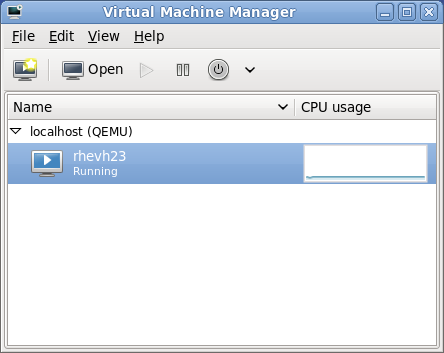
Figure 31.2. Virtual Machine Manager main window
31.3. The virtual hardware details window
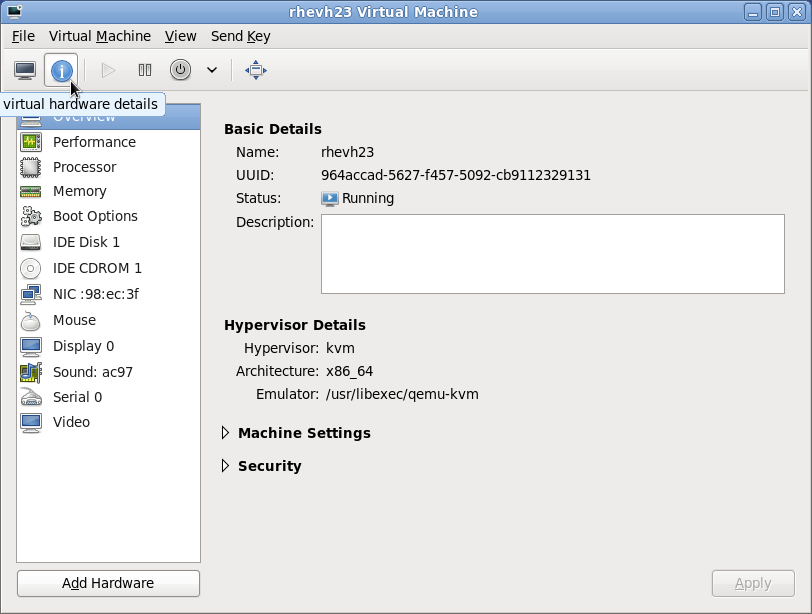
Figure 31.3. The virtual hardware details icon
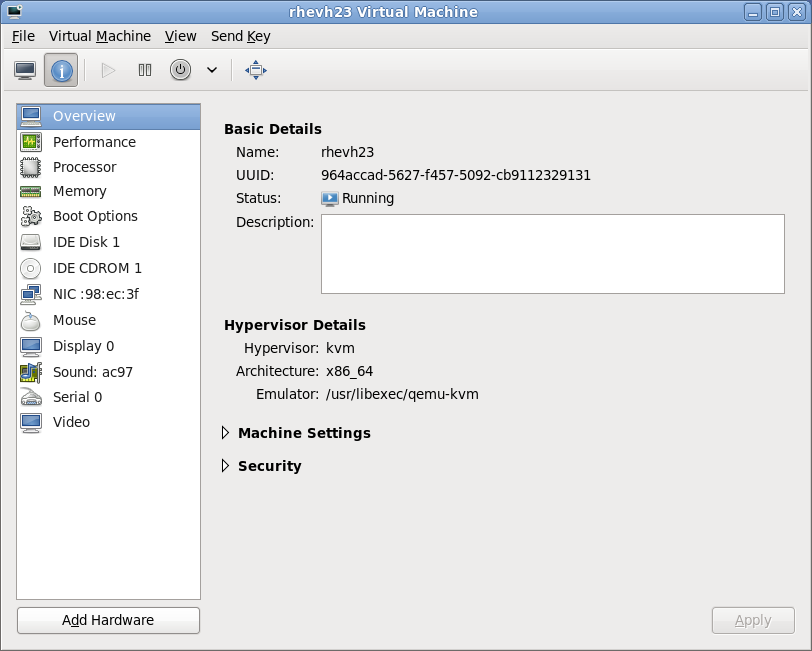
Figure 31.4. The virtual hardware details window
31.4. Virtual Machine graphical console
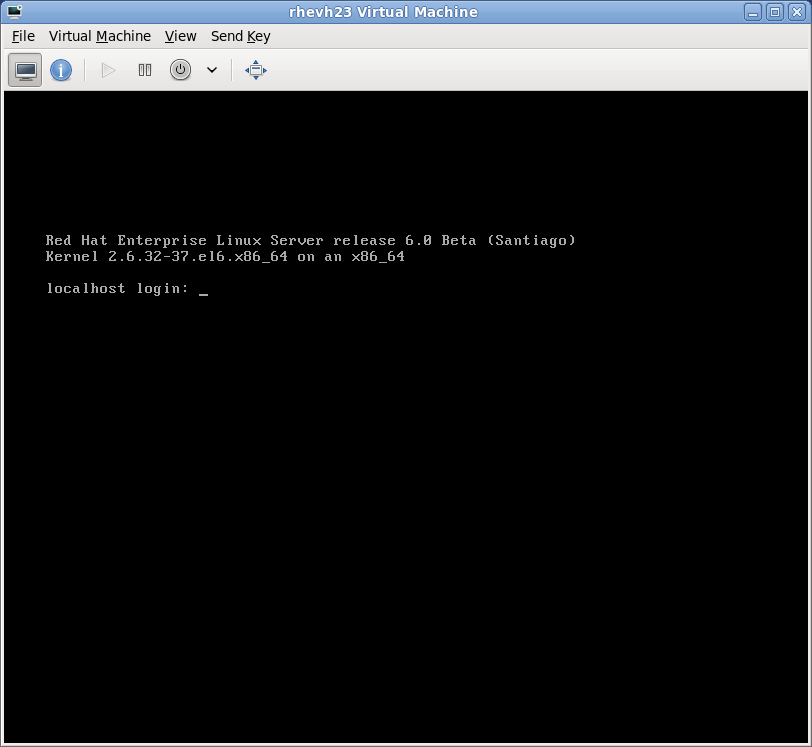
Figure 31.5. Graphical console window
A note on security and VNC
127.0.0.1). This ensures only those with shell privileges on the host can access virt-manager and the virtual machine through VNC.
virt-managersticky key' capability
to send these sequences. You must press any modifier key (Ctrl or Alt) 3
times and the key you specify gets treated as active until the next
non-modifier key is pressed. Then you can send Ctrl-Alt-F11 to the guest
by entering the key sequence 'Ctrl Ctrl Ctrl Alt+F1'.
31.5. Adding a remote connection
virt-manager.
- To create a new connection open the File menu and select the Add Connection... menu item.
- The Add Connection wizard appears. Select the hypervisor. For Red Hat Enterprise Linux 6 systems select QEMU/KVM. Select Local for the local system or one of the remote connection options and click Connect. This example uses Remote tunnel over SSH which works on default installations. For more information on configuring remote connections refer to Chapter 19, Remote management of virtualized guests

Figure 31.6. Add Connection
- Enter the root password for the selected host when prompted.
virt-manager window.
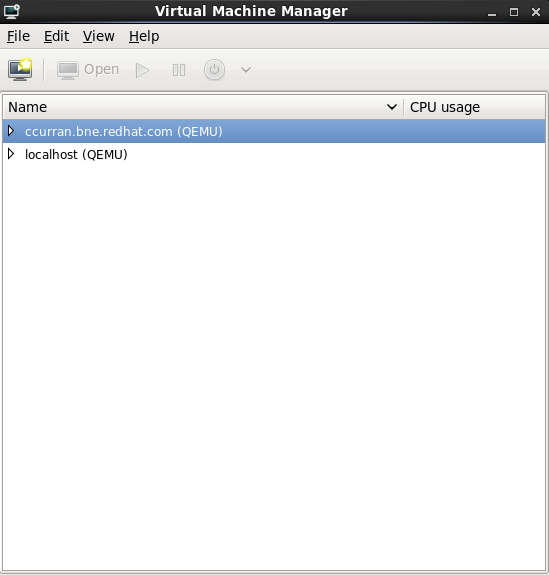
Figure 31.7. Remote host in the main virt-manager window
31.6. Displaying guest details
- In the Virtual Machine Manager main window, highlight the virtual machine that you want to view.

Figure 31.8. Selecting a virtual machine to display
- From the Virtual Machine Manager Edit menu, select Virtual Machine Details.On the Virtual Machine window, select Overview from the navigation pane on the left hand side.The Overview view shows a summary of configuration details for the virtualized guest.
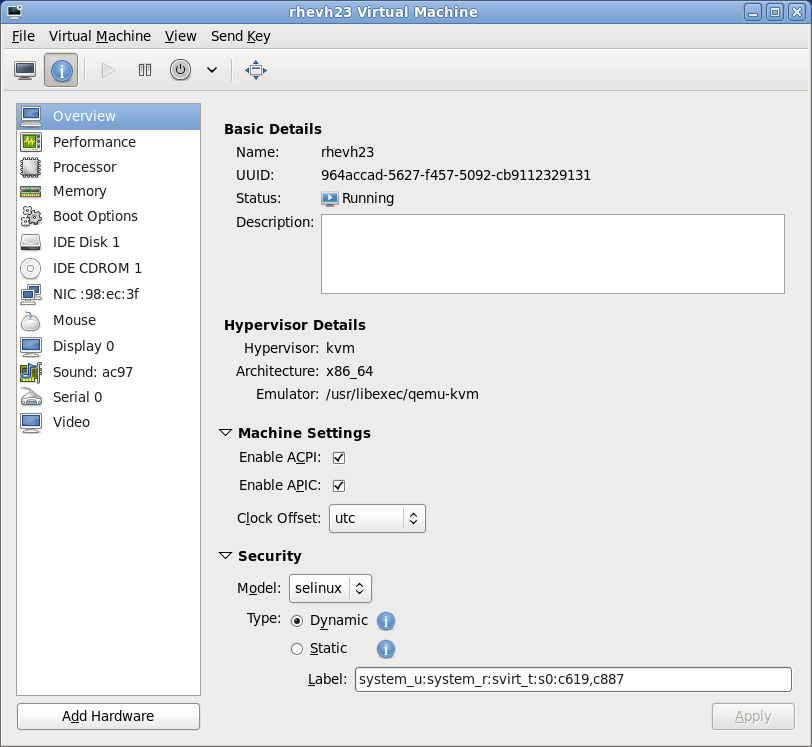
Figure 31.10. Displaying guest details overview
- Select Performance from the navigation pane on the left hand side.The Performance view shows a summary of guest performance, including CPU and Memory usage.
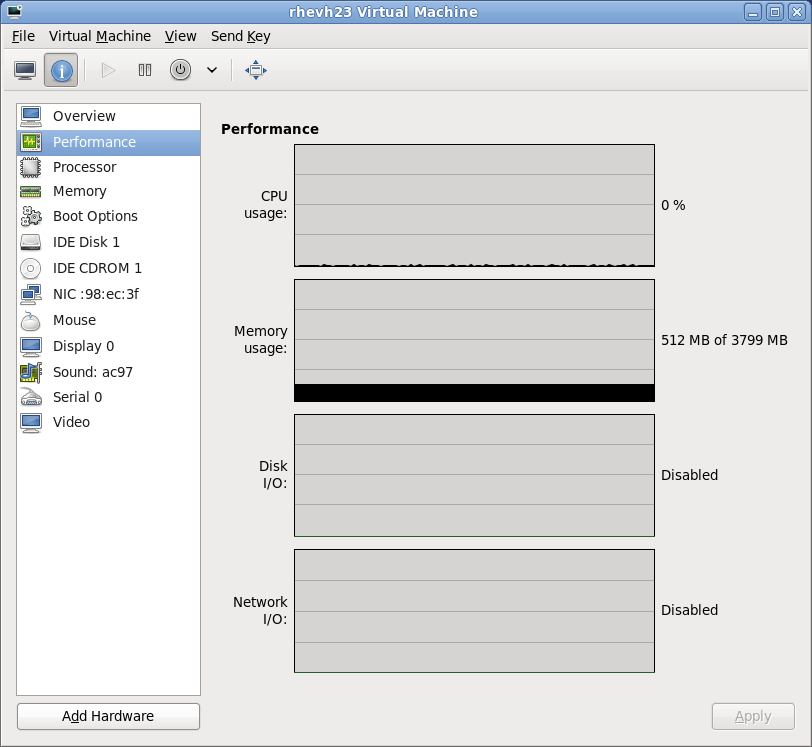
Figure 31.11. Displaying guest performance details
- Select Processor from the navigation pane on the left hand side. The Processor view allows you to view or change the current processor allocation.
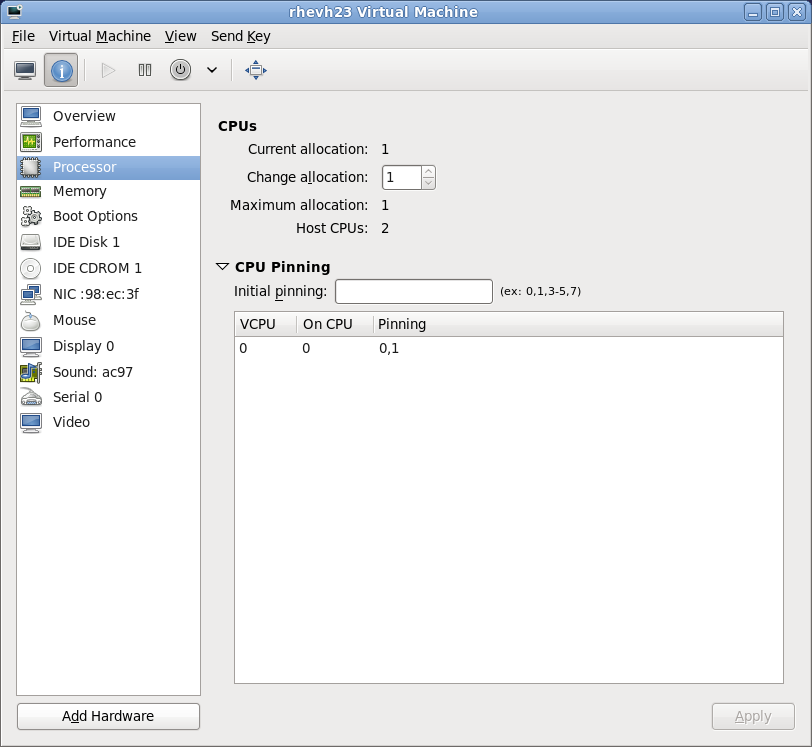
Figure 31.12. Processor allocation panel
- Select Memory from the navigation pane on the left hand side. The Memory view allows you to view or change the current memory allocation.
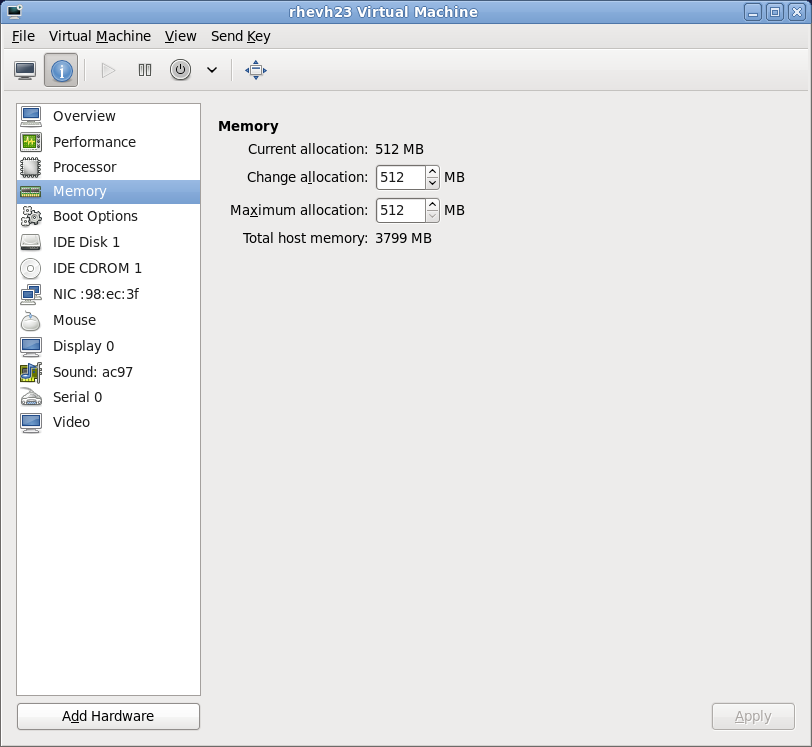
Figure 31.13. Displaying memory allocation
- Each virtual disk attached to the virtual machine is displayed in the navigation pane. Click on a virtual disk to modify or remove it.
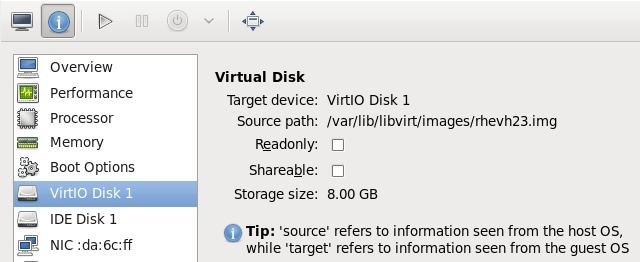
Figure 31.14. Displaying disk configuration
- Each virtual network interface attached to the virtual machine is displayed in the nagivation pane. Click on a virtual network interface to modify or remove it.
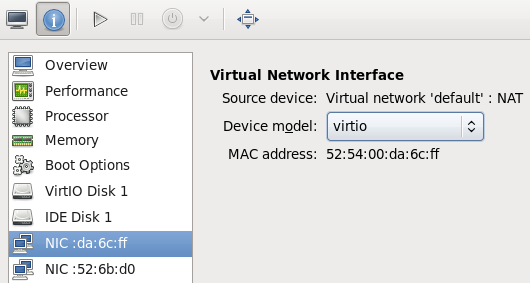
Figure 31.15. Displaying network configuration
31.7. Performance monitoring
virt-manager's preferences window.
- From the Edit menu, select Preferences.
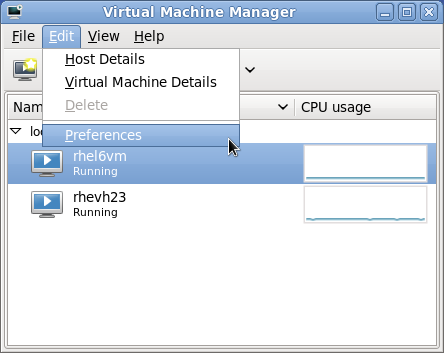
Figure 31.16. Modifying guest preferences
The Preferences window appears. - From the Stats tab specify the time in seconds or stats polling options.
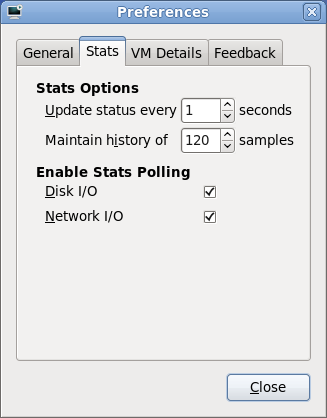
Figure 31.17. Configuring performance monitoring
31.8. Displaying CPU usage
- From the View menu, select Graph, then the CPU Usage check box.
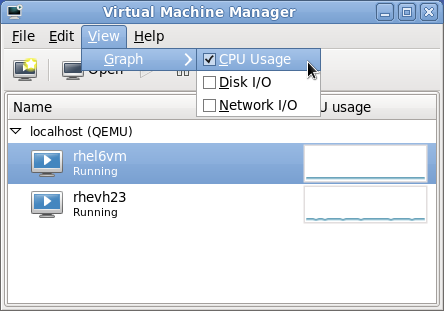
Figure 31.18. Selecting CPU usage
- The Virtual Machine Manager shows a graph of CPU usage for all virtual machines on your system.

Figure 31.19. Displaying CPU usage
31.9. Displaying Disk I/O
- From the View menu, select Graph, then the Disk I/O check box.
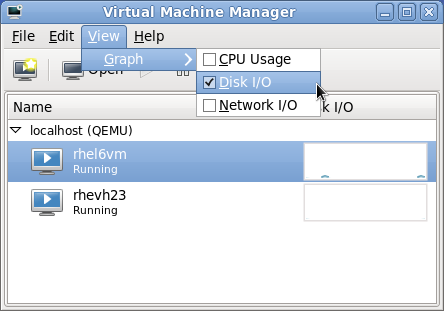
Figure 31.20. Selecting Disk I/O
- The Virtual Machine Manager shows a graph of Disk I/O for all virtual machines on your system.

Figure 31.21. Displaying Disk I/O
31.10. Displaying Network I/O
- From the View menu, select Graph, then the Network I/O check box.
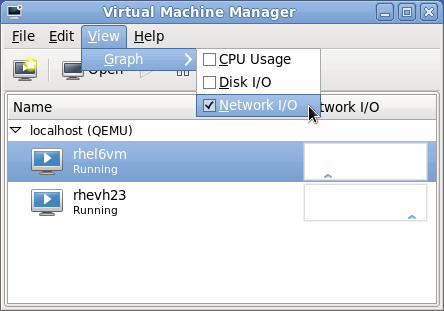
Figure 31.22. Selecting Network I/O
- The Virtual Machine Manager shows a graph of Network I/O for all virtual machines on your system.

Figure 31.23. Displaying Network I/O
31.11. Managing a virtual network
- From the Edit menu, select Host Details.
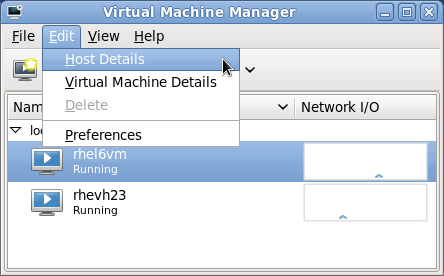
Figure 31.24. Selecting a host's details
- This will open the menu. Click the Virtual Networks tab.
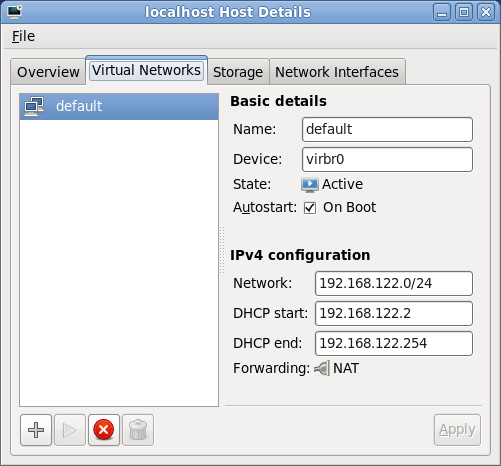
Figure 31.25. Virtual network configuration
- All available virtual networks are listed on the left-hand box of the menu. You can edit the configuration of a virtual network by selecting it from this box and editing as you see fit.
31.12. Creating a virtual network
- Open the Host Details menu (refer to Section 31.11, “Managing a virtual network”) and click the button, identified by a plus sign (+) icon.

Figure 31.26. Virtual network configuration
This will open the window. Click to continue.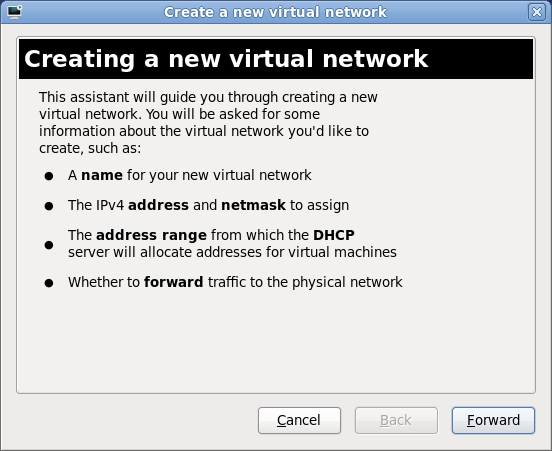
Figure 31.27. Creating a new virtual network
- Enter an appropriate name for your virtual network and click .
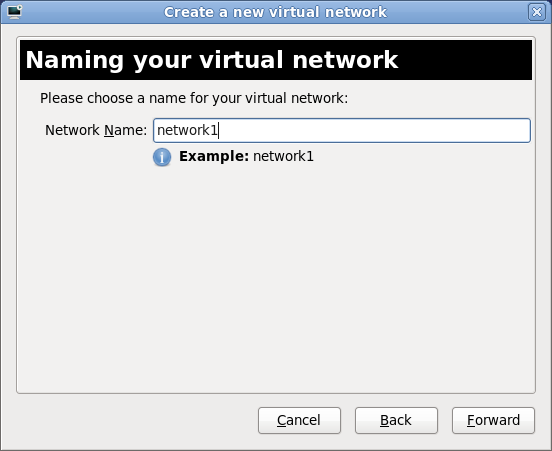
Figure 31.28. Naming your virtual network
- Enter an IPv4 address space for your virtual network and click .
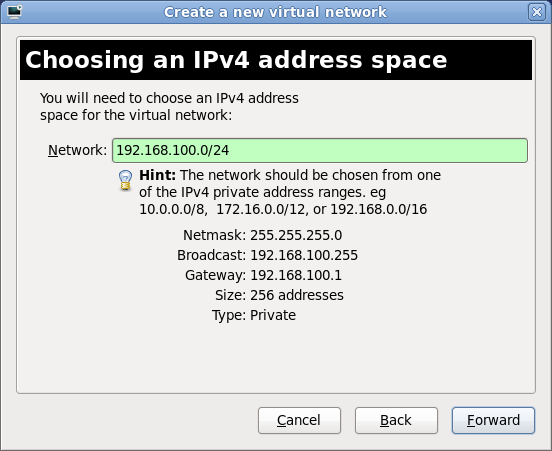
Figure 31.29. Choosing an IPv4 address space
- Define the DHCP range for your virtual network by specifying a Start and End range of IP addresses. Click to continue.
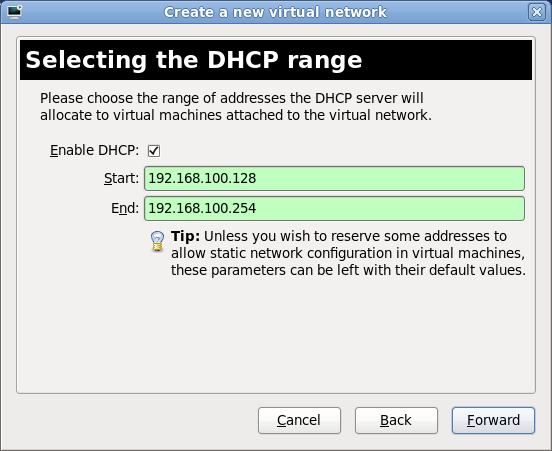
Figure 31.30. Selecting the
DHCPrange - Select how the virtual network should connect to the physical network.
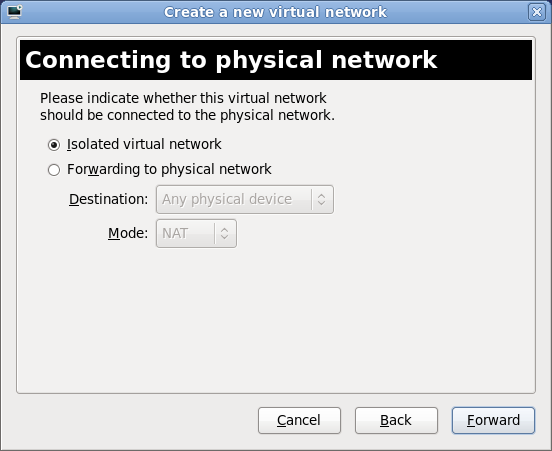
Figure 31.31. Connecting to physical network
If you select Forwarding to physical network, choose whether the Destination should be Any physical device or a specific physical device. Also select whether the Mode should be NAT or Routed.Click to continue. - You are now ready to create the network. Check the configuration of your network and click .
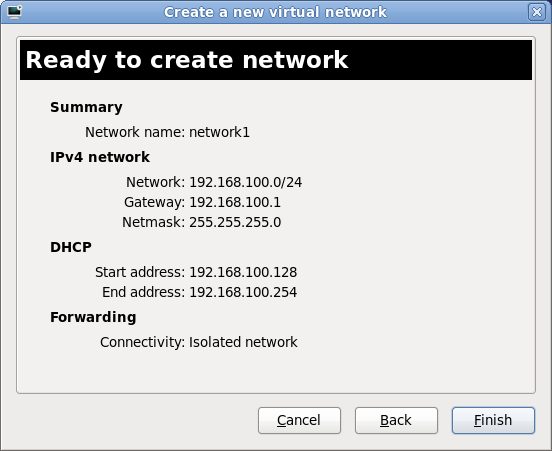
Figure 31.32. Ready to create network
- The new virtual network is now available in the tab of the window.
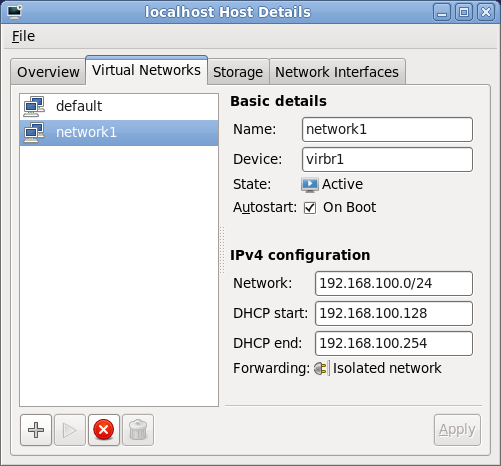
Figure 31.33. New virtual network is now available
Chapter 32. libvirt configuration reference
Table 32.1. libvirt configuration files
| Item | Description |
|---|---|
pae
|
Specifies the physical address extension configuration data.
|
apic
|
Specifies the advanced programmable interrupt controller configuration data.
|
memory
|
Specifies the memory size in megabytes.
|
vcpus
|
Specifies the numbers of virtual CPUs.
|
console
|
Specifies the port numbers to export the domain consoles to.
|
nic
|
Specifies the number of virtual network interfaces.
|
vif
|
Lists the randomly-assigned MAC addresses and bridges assigned to use for the domain's network addresses.
|
disk
|
Lists the block devices to export to the domain and exports physical devices to domain with read only access.
|
dhcp
|
Enables networking using DHCP.
|
netmask
|
Specifies the configured IP netmasks.
|
gateway
|
Specifies the configured IP gateways.
|
acpi
|
Specifies the advanced configuration power interface configuration data.
|
Chapter 33. Creating custom libvirt scripts
libvirt.
libvirt.
33.1. Using XML configuration files with virsh
virsh can handle XML configuration
files. You may want to use this to your advantage for scripting large
deployments with special options. You can add devices defined in an XML
file to a running virtualized guest. For example, to add a ISO file as hdc to a running guest create an XML file:
# cat satelliteiso.xml <disk type="file" device="disk"> <driver name="file"/> <source file="/var/lib/libvirt/images/rhn-satellite-5.0.1-11-redhat-linux-as-i386-4-embedded-oracle.iso"/> <target dev="hdc"/> <readonly/> </disk>
virsh attach-device to attach the ISO as hdc to a guest called "satellite" :
# virsh attach-device satellite satelliteiso.xml
Part VII. Troubleshooting
Introduction to troubleshooting and problem solving
Important note on virtualization issues
If all else fails...
Table of Contents
Chapter 34. Troubleshooting
34.1. Debugging and troubleshooting tools
kvm_statkvmtracevmstatiostatlsofsystemtapcrashsysrqsysrq tsysrq w
ifconfigtcpdumpThetcpdumpcommand 'sniffs' network packets.tcpdumpis useful for finding network abnormalities and problems with network authentication. There is a graphical version oftcpdumpnamedwireshark.brctlbrctlis a networking tool that inspects and configures the Ethernet bridge configuration in the Virtualization linux kernel. You must have root access before performing these example commands:# brctl show bridge-name bridge-id STP enabled interfaces ----------------------------------------------------------------------------- virtbr0 8000.feffffff yes eth0 # brctl showmacs virtbr0 port-no mac-addr local? aging timer 1 fe:ff:ff:ff:ff: yes 0.00 2 fe:ff:ff:fe:ff: yes 0.00 # brctl showstp virtbr0 virtbr0 bridge-id 8000.fefffffffff designated-root 8000.fefffffffff root-port 0 path-cost 0 max-age 20.00 bridge-max-age 20.00 hello-time 2.00 bridge-hello-time 2.00 forward-delay 0.00 bridge-forward-delay 0.00 aging-time 300.01 hello-timer 1.43 tcn-timer 0.00 topology-change-timer 0.00 gc-timer 0.02
- strace is a command which traces system calls and events received and used by another process.
- vncviewer: connect to a VNC server running on your server or a virtual machine. Install vncviwer using the
yum install vnccommand. - vncserver: start a remote desktop on your server. Gives you the ability to run graphical user interfaces such as virt-manager via a remote session. Install vncserver using the
yum install vnc-servercommand.
34.2. kvm_stat
kvm_stat command is a python script which retrieves runtime statistics from the kvm kernel module. The kvm_stat command can be used to diagnose guest behavior visible to kvm.
In particular, performance related issues with guests. Currently, the
reported statistics are for the entire system; the behavior of all
running guests is reported.
kvm_stat command requires that the kvm kernel module is loaded and debugfs is mounted. If either of these features are not enabled, the command will output the required steps to enable debugfs or the kvm module. For example:
# kvm_stat
Please mount debugfs ('mount -t debugfs debugfs /sys/kernel/debug')
and ensure the kvm modules are loadeddebugfs if required:
# mount -t debugfs debugfs /sys/kernel/debug
kvm_stat output
Thekvm_stat command outputs statistics
for all virtualized guests and the host. The output is updated until
the command is terminated (using Ctrl+c or the q key).
# kvm_stat kvm statistics efer_reload 94 0 exits 4003074 31272 fpu_reload 1313881 10796 halt_exits 14050 259 halt_wakeup 4496 203 host_state_reload 1638354 24893 hypercalls 0 0 insn_emulation 1093850 1909 insn_emulation_fail 0 0 invlpg 75569 0 io_exits 1596984 24509 irq_exits 21013 363 irq_injections 48039 1222 irq_window 24656 870 largepages 0 0 mmio_exits 11873 0 mmu_cache_miss 42565 8 mmu_flooded 14752 0 mmu_pde_zapped 58730 0 mmu_pte_updated 6 0 mmu_pte_write 138795 0 mmu_recycled 0 0 mmu_shadow_zapped 40358 0 mmu_unsync 793 0 nmi_injections 0 0 nmi_window 0 0 pf_fixed 697731 3150 pf_guest 279349 0 remote_tlb_flush 5 0 request_irq 0 0 signal_exits 1 0 tlb_flush 200190 0
Explanation of variables:
- efer_reload
- The number of Extended Feature Enable Register (EFER) reloads.
- exits
- The count of all
VMEXITcalls. - fpu_reload
- The number of times a
VMENTRYreloaded the FPU state. Thefpu_reloadis incremented when a guest is using the Floating Point Unit (FPU). - halt_exits
- Number of guest exits due to
haltcalls. This type of exit is usually seen when a guest is idle. - halt_wakeup
- Number of wakeups from a
halt. - host_state_reload
- Count of full reloads of the host state (currently tallies MSR setup and guest MSR reads).
- hypercalls
- Number of guest hypervisor service calls.
- insn_emulation
- Number of guest instructions emulated by the host.
- insn_emulation_fail
- Number of failed
insn_emulationattempts. - io_exits
- Number of guest exits from I/O port accesses.
- irq_exits
- Number of guest exits due to external interrupts.
- irq_injections
- Number of interrupts sent to guests.
- irq_window
- Number of guest exits from an outstanding interrupt window.
- largepages
- Number of large pages currently in use.
- mmio_exits
- Number of guest exits due to memory mapped I/O (MMIO) accesses.
- mmu_cache_miss
- Number of KVM MMU shadow pages created.
- mmu_flooded
- Detection count of excessive write operations to an MMU page. This counts detected write operations not of individual write operations.
- mmu_pde_zapped
- Number of page directory entry (PDE) destruction operations.
- mmu_pte_updated
- Number of page table entry (PTE) destruction operations.
- mmu_pte_write
- Number of guest page table entry (PTE) write operations.
- mmu_recycled
- Number of shadow pages that can be reclaimed.
- mmu_shadow_zapped
- Number of invalidated shadow pages.
- mmu_unsync
- Number of non-synchronized pages which are not yet unlinked.
- nmi_injections
- Number of Non-maskable Interrupt (NMI) injections to the guest.
- nmi_window
- Number of guest exits from (outstanding) Non-maskable Interrupt (NMI) windows.
- pf_fixed
- Number of fixed (non-paging) page table entry (PTE) maps.
- pf_guest
- Number of page faults injected into guests.
- remote_tlb_flush
- Number of remote (sibling CPU) Translation Lookaside Buffer (TLB) flush requests.
- request_irq
- Number of guest interrupt window request exits.
- signal_exits
- Number of guest exits due to pending signals from the host.
- tlb_flush
- Number of
tlb_flushoperations performed by the hypervisor.
Note
kvm_stat command is exported by the KVM hypervisor as pseudo files located in the /sys/kernel/debug/kvm/ directory.
34.3. Log files
- The default directory for all file-based images is the
/var/lib/libvirt/imagesdirectory. qemu-kvm.[PID].logis the log file created by theqemu-kvmprocess for each fully virtualized guest. When using this log file, you must retrieve the givenqemu-kvmprocess PID, by using thepscommand to examine process arguments to isolate theqemu-kvmprocess on the virtual machine. Note that you must replace the [PID] symbol with the actual PIDqemu-kvmprocess.
virt-manager.log file that resides in the /.virt-manager
directory. Note that every time you start the Virtual Machine Manager,
it overwrites the existing log file contents. Make sure to backup the virt-manager.log file, before you restart the Virtual Machine manager after a system error.
34.4. Troubleshooting with serial consoles
virsh console command.
- output data may be dropped or scrambled.
ttyS0 on Linux or COM1 on Windows.
/boot/grub/grub.conf file by inserting the line console=tty0 console=ttyS0,115200.
title Red Hat Enterprise Linux Server (2.6.32-36.x86-64)
root (hd0,0)
kernel /vmlinuz-2.6.32-36.x86-64 ro root=/dev/volgroup00/logvol00
console=tty0 console=ttyS0,115200
initrd /initrd-2.6.32-36.x86-64.img
# virsh console
virt-manager to display the virtual text console. In the guest console window, select Serial Console from the View menu.
34.5. Virtualization log files
- /var/log/libvirt/qemu/
GuestName.log
virt-manager.log file that resides in the /.virt-manager
directory. Note that every time you start the Virtual Machine Manager,
it overwrites the existing log file contents. Make sure to backup the virt-manager.log file, before you restart the Virtual Machine manager after a system error.
34.6. Loop device errors
/etc/modprobe.conf. Edit /etc/modprobe.conf and add the following line to it:
options loop max_loop=64
phy: device or file: file commands.
34.7. Enabling Intel VT and AMD-V virtualization hardware extensions in BIOS
Procedure 34.1. Enabling virtualization extensions in BIOS
- Reboot the computer and open the system's BIOS menu. This can usually be done by pressing the key, the F1 key or Alt and F4 keys depending on the system.
Enabling the virtualization extensions in BIOS
Note: BIOS steps
Many of the steps below may vary depending on your motherboard, processor type, chipset and OEM. Refer to your system's accompanying documentation for the correct information on configuring your system.- Open the Processor submenu The processor settings menu may be hidden in the Chipset, Advanced CPU Configuration or Northbridge.
- Enable Intel Virtualization Technology (also known as Intel VT). AMD-V extensions cannot be disabled in the BIOS and should already be enabled. The virtualization extensions may be labeled Virtualization Extensions, Vanderpool or various other names depending on the OEM and system BIOS.
- Enable Intel VTd or AMD IOMMU, if the options are available. Intel VTd and AMD IOMMU are used for PCI passthrough.
- Select Save & Exit.
- Reboot the machine.
- When the machine has booted, run
cat /proc/cpuinfo | grep vmx svm. If the command outputs, the virtualization extensions are now enabled. If there is no output your system may not have the virtualization extensions or the correct BIOS setting enabled.
34.8. KVM networking performance
Note
e1000) driver is also supported as an emulated driver choice. To use the e1000 driver, replace virtio in the procedure below with e1000. For the best performance it is recommended to use the virtio driver.
Procedure 34.2. Switching to the virtio driver
- Shutdown the guest operating system.
- Edit the guest's configuration file with the
virshcommand (whereGUESTis the guest's name):# virsh edit
GUESTThevirsh editcommand uses the$EDITORshell variable to determine which editor to use. - Find the network interface section of the configuration. This section resembles the snippet below:
<interface type='network'> [output truncated] <model type='rtl8139' /> </interface> - Change the type attribute of the model element from
'rtl8139'to'virtio'. This will change the driver from the rtl8139 driver to the e1000 driver.<interface type='network'> [output truncated] <model type=
'virtio'/> </interface> - Save the changes and exit the text editor
- Restart the guest operating system.
Creating new guests using other network drivers
Alternatively, new virtualized guests can be created with a different network driver. This may be required if you are having difficulty installing guests over a network connection. This method requires you to have at least one virtualized guest already created (possibly installed from CD or DVD) to use as a template.- Create an XML template from an existing virtualized guest (in this example, named
Guest1):# virsh dumpxml
Guest1> /tmp/guest-template.xml - Copy and edit the XML file and update the unique fields: virtual machine name, UUID, disk image, MAC address, and any other unique parameters. Note that you can delete the UUID and MAC address lines and virsh will generate a UUID and MAC address.
# cp /tmp/
guest-template.xml /tmp/new-guest.xml # vi /tmp/new-guest.xmlAdd the model line in the network interface section:<interface type='network'> [output truncated] <model type='virtio' /> </interface> - Create the new virtual machine:
# virsh define /tmp/new-guest.xml # virsh start new-guest
Additional resources
A.1. Online resources
- http://www.libvirt.org/ is the official website for the
libvirtvirtualization API. - http://virt-manager.et.redhat.com/ is the project website for the Virtual Machine Manager (virt-manager), the graphical application for managing virtual machines.
- Open Virtualization Center
- Red Hat Documentation
- Virtualization technologies overview
- Red Hat Emerging Technologies group
A.2. Installed documentation
man virshand/usr/share/doc/libvirt-— Contains sub commands and options for the<version-number>virshvirtual machine management utility as well as comprehensive information about thelibvirtvirtualization library API./usr/share/doc/gnome-applet-vm-— Documentation for the GNOME graphical panel applet that monitors and manages locally-running virtual machines.<version-number>/usr/share/doc/libvirt-python-— Provides details on the Python bindings for the<version-number>libvirtlibrary. Thelibvirt-pythonpackage allows python developers to create programs that interface with thelibvirtvirtualization management library./usr/share/doc/python-virtinst-— Provides documentation on the<version-number>virt-installcommand that helps in starting installations of Fedora and Red Hat Enterprise Linux related distributions inside of virtual machines./usr/share/doc/virt-manager-— Provides documentation on the Virtual Machine Manager, which provides a graphical tool for administering virtual machines.<version-number>
Glossary
- Bare-metal
- The term bare-metal refers to the underlying physical architecture of a computer. Running an operating system on bare-metal is another way of referring to running an unmodified version of the operating system on the physical hardware. An example of operating system running on bare metal is a normally installed operating system.
- Full virtualization
- KVM uses full, hardware-assisted virtualization. Full virtualization uses hardware features of the processor to provide total abstraction of the underlying physical system (Bare-metal) and creates a new virtual machine in which the guest operating systems can run. No modifications are needed in the guest operating system. The guest operating system and any applications on the guest are not aware of the virtualized environment and run normally. Para-virtualization requires a modified version of the Linux operating system.
- Fully virtualized
- See Full virtualization.
- Guest system
- Also known as guests, virtual machines, virtual servers or domains.
- Hardware Virtual Machine
- Host
- The host operating system runs virtualized guests.
- Hypervisor
- The hypervisor is the software layer that abstracts the hardware from the operating system permitting multiple operating systems to run on the same hardware. The hypervisor runs on a host operating system allowing other virtualized operating systems to run on the host's hardware.The Kernel-based Virtual Machine hypervisor is provided with Red Hat Enterprise Linux.
- I/O
- Short for input/output (pronounced "eye-oh"). The term I/O describes any program, operation or device that transfers data to or from a computer and to or from a peripheral device. Every transfer is an output from one device and an input into another. Devices such as keyboards and mouses are input-only devices while devices such as printers are output-only. A writable CD-ROM is both an input and an output device.
- Kernel SamePage Merging
- Kernel SamePage Merging (KSM) is used by the KVM hypervisor to allow KVM guests to share identical memory pages. The pages shared are usually common libraries or other identical, high-use data. KSM allows for greater guest density of identical or similar guest operating systems by avoiding memory duplication.For information on using KSM with Red Hat Enterprise Linux refer to Chapter 21, KSM.
- Kernel-based Virtual Machine
- KVM (Kernel-based Virtual Machine) is a Full virtualization solution for Linux on AMD64 and Intel 64 hardware. KVM is a Linux kernel module built for the standard Red Hat Enterprise Linux kernel. KVM can run multiple, unmodified virtualized guest Windows and Linux operating systems. The KVM hypervisor in Red Hat Enterprise Linux is managed with the libvirt API and tools built for libvirt,
virt-managerandvirsh.KVM is a set of Linux kernel modules which manage devices, memory and management APIs for the Hypervisor module itself. Virtualized guests are run as Linux processes and threads which are controlled by these modules.Red Hat Enterprise Linux KVM hypervisors can be managed by the Red Hat Enterprise Virtualization Manager as an alternative to libvirt. - LUN
- A Logical Unit Number (LUN) is a number assigned to a logical unit (a SCSI protocol entity).
- MAC Addresses
- The Media Access Control Address is the hardware address for a Network Interface Controller. In the context of virtualization MAC addresses must be generated for virtual network interfaces with each MAC on your local domain being unique.
- Migration
- Migration is the term for the process of moving a virtualized guest from one host to another. Migration can be conducted offline (where the guest is suspended and then moved) or live (where a guest is moved without suspending).Offline migrationAn offline migration suspends the guest then moves an image of the guest's memory to the destination host.Live migrationLive migration is the process of migrating a running guest from one physical host to another physical host.
- Para-virtualization
- Para-virtualization is only available in Red Hat Enterprise Linux 5. Para-virtualization uses software mechanisms to share devices and system resources with specially-designed kernels or newer kernels with the PV-opts features.
- Para-virtualized
- See Para-virtualization,
- Para-virtualized drivers
- Para-virtualized drivers are device drivers that operate on fully virtualized Linux guests. These drivers greatly increase performance of network and block device I/O for fully virtualized guests.
- PCI passthrough
- The KVM hypervisor supports attaching PCI devices on the host system to virtualized guests. PCI passthrough allows guests to have exclusive access to PCI devices for a range of tasks. PCI passthrough allows PCI devices to appear and behave as if they were physically attached to the guest operating system.
- Physical Functions
- Physical Functions (PFs) are full PCIe devices that include the SR-IOV capabilities. Physical Functions are discovered, managed, and configured as normal PCI devices. Physical Functions configure and manage the SR-IOV functionality by assigning Virtual Functions.
- Security Enhanced Linux
- Short for Security Enhanced Linux, SELinux uses Linux Security Modules (LSM) in the Linux kernel to provide a range of minimum privilege required security policies.
- Single Root I/O Virtualization
- SR-IOV is a standard for a type of PCI passthrough which natively shares a single device to multiple guests.SR-IOV enables a Single Root Function (for example, a single Ethernet port), to appear as multiple, separate, physical devices. A physical device with SR-IOV capabilities can be configured to appear in the PCI configuration space as multiple functions, each device has its own configuration space complete with Base Address Registers (BARs).SR-IOV uses two new PCI functions:
- Universally Unique Identifier
- A Universally Unique Identifier (UUID) is a standardized numbering method for devices, systems and certain software objects in distributed computing environments. Types of UUIDs in virtualization include:
ext2andext3file system identifiers, RAID device identifiers, iSCSI and LUN device identifiers, MAC addresses and virtual machine identifiers. - Virtual Functions
- Virtual Functions (VFs) are simple PCIe functions that only process I/O. Each Virtual Function is derived from a Physical Function. The number of Virtual Functions a device may have is limited by the device hardware. A single Ethernet port, the Physical Device, may map to many Virtual Functions that can be shared to virtualized guests.
- Virtual machines
- A virtual machine is a software implementation of a physical machine or programming language (for example the Java Runtime Environment or LISP). Virtual machines in the context of virtualization are operating systems running on virtualized hardware.
- Virtualization
- Virtualization is a broad computing term for running software, usually operating systems, concurrently and isolated from other programs on one system. Most existing implementations of virtualization use a hypervisor, a software layer that controls hardware and provides guest operating systems with access to underlying hardware. The hypervisor allows multiple operating systems to run on the same physical system by giving the guest operating system virtualized hardware. There are various methods for virtualizing operating systems:
- Hardware-assisted virtualization is the technique used for full virtualization with KVM (definition: Full virtualization)
- Para-virtualization is a technique used by Xen to run Linux guests (definition: Para-virtualization)
- Software virtualization or emulation. Software virtualization uses binary translation and other emulation techniques to run unmodified operating systems. Software virtualization is significantly slower than hardware-assisted virtualization or para-virtualization. Software virtualization, in the form of QEMU or BORCH, works in Red Hat Enterprise Linux, it's just slow.
Red Hat Enterprise Linux supports hardware-assisted, full virtualization with the KVM hypervisor. - Virtualized CPU
- A system has a number of virtual CPUs (VCPUs) relative to the number of physical processor cores. The number of virtual CPUs is finite and represents the total number of virtual CPUs that can be assigned to guest virtual machines.
- Xen
- Xen is not available as a hypervisor type for Red Hat Enterprise Linux 6 and newer. Xen is only supported for Red Hat Enterprise Linux 5 and newer.Red Hat Enterprise Linux 5 supports the Xen hypervisor and the KVM hypervisor (refer to Kernel-based Virtual Machine). Both hypervisors have different architectures and development approaches. The Xen hypervisor runs underneath a Red Hat Enterprise Linux operating system which acts as a host managing system resources and virtualization APIs.Red Hat Enterprise Linux 6 is supported as a para-virtualized and fully-virtualized guest of Red Hat Enterprise Linux 5.4 (and newer) running the Xen hypervisor. Red Hat Enterprise Linux 6 is also supported as a guest of the Red Hat Enterprise Linux 5.4 (and newer) running the KVM hypervisor.
Revision History
| Revision History | |||||||||||
|---|---|---|---|---|---|---|---|---|---|---|---|
| Revision 6.0-35 | Mon Oct 04 2010 | ||||||||||
| |||||||||||
| Revision 6.0-25 | Thu Sep 09 2010 | ||||||||||
| |||||||||||
| Revision 6.0-24 | Fri Sep 03 2010 | ||||||||||
| |||||||||||
| Revision 6.0-23 | Tue May 25 2010 | ||||||||||
| |||||||||||
| Revision 6.0-22 | Fri May 14 2010 | ||||||||||
| |||||||||||
| Revision 6.0-11 | Tue Apr 20 2010 | ||||||||||
| |||||||||||
| Revision 6.0-10 | Thu Apr 15 2010 | ||||||||||
| |||||||||||
| Revision 6.0-5 | Mon Mar 01 2010 | ||||||||||
| |||||||||||
Colophon
- Daniel Berrange contributed various sections on libvirt.
- Don Dutile contributed technical editing for the para-virtualized drivers section.
- Barry Donahue contributed technical editing for the para-virtualized drivers section.
- Rick Ring contributed technical editing for the Virtual Machine Manager Section.
- Michael Kearey contributed technical editing for the sections on using XML configuration files with virsh and virtualized floppy drives.
- Marco Grigull contributed technical editing for the software compatibility and performance section.
- Eugene Teo contributed technical editing for the Managing Guests with virsh section.
Translators
Due to technical limitations, the translators credited in this section are those who worked on previous versions of the Red Hat Enterprise Linux Virtualization Guide and the Fedora Virtualization Guide.- Simplified Chinese
- Leah Wei Liu
- Traditional Chinese
- Chester Cheng
- Terry Chuang
- Japanese
- Kiyoto Hashida
- Korean
- Eun-ju Kim
- Dutch
- Geert Warrink
- French
- Sam Friedmann
- German
- Hedda Peters
- Greek
- Nikos Charonitakis
- Italian
- Silvio Pierro
- Francesco Valente
- Brazilian Portuguese
- Glaucia de Freitas
- Leticia de Lima
- Spanish
- Domingo Becker
- Héctor Daniel Cabrera
- Angela Garcia
- Gladys Guerrero
- Russian
- Yuliya Poyarkova
aa - ab - af - ak - als - am - an - ang - ar - arc - as - ast - av - ay - az - ba - bar - bat_smg - bcl - be - be_x_old - bg - bh - bi - bm - bn - bo - bpy - br - bs - bug - bxr - ca - cbk_zam - cdo - ce - ceb - ch - cho - chr - chy - co - cr - crh - cs - csb - cu - cv - cy - da - de - diq - dsb - dv - dz - ee - el - eml - en - eo - es - et - eu - ext - fa - ff - fi - fiu_vro - fj - fo - fr - frp - fur - fy - ga - gan - gd - gl - glk - gn - got - gu - gv - ha - hak - haw - he - hi - hif - ho - hr - hsb - ht - hu - hy - hz - ia - id - ie - ig - ii - ik - ilo - io - is - it - iu - ja - jbo - jv - ka - kaa - kab - kg - ki - kj - kk - kl - km - kn - ko - kr - ks - ksh - ku - kv - kw - ky - la - lad - lb - lbe - lg - li - lij - lmo - ln - lo - lt - lv - map_bms - mdf - mg - mh - mi - mk - ml - mn - mo - mr - mt - mus - my - myv - mzn - na - nah - nap - nds - nds_nl - ne - new - ng - nl - nn - no - nov - nrm - nv - ny - oc - om - or - os - pa - pag - pam - pap - pdc - pi - pih - pl - pms - ps - pt - qu - quality - rm - rmy - rn - ro - roa_rup - roa_tara - ru - rw - sa - sah - sc - scn - sco - sd - se - sg - sh - si - simple - sk - sl - sm - sn - so - sr - srn - ss - st - stq - su - sv - sw - szl - ta - te - tet - tg - th - ti - tk - tl - tlh - tn - to - tpi - tr - ts - tt - tum - tw - ty - udm - ug - uk - ur - uz - ve - vec - vi - vls - vo - wa - war - wo - wuu - xal - xh - yi - yo - za - zea - zh - zh_classical - zh_min_nan - zh_yue - zu -
Static Wikipedia 2007 (no images)
aa - ab - af - ak - als - am - an - ang - ar - arc - as - ast - av - ay - az - ba - bar - bat_smg - bcl - be - be_x_old - bg - bh - bi - bm - bn - bo - bpy - br - bs - bug - bxr - ca - cbk_zam - cdo - ce - ceb - ch - cho - chr - chy - co - cr - crh - cs - csb - cu - cv - cy - da - de - diq - dsb - dv - dz - ee - el - eml - en - eo - es - et - eu - ext - fa - ff - fi - fiu_vro - fj - fo - fr - frp - fur - fy - ga - gan - gd - gl - glk - gn - got - gu - gv - ha - hak - haw - he - hi - hif - ho - hr - hsb - ht - hu - hy - hz - ia - id - ie - ig - ii - ik - ilo - io - is - it - iu - ja - jbo - jv - ka - kaa - kab - kg - ki - kj - kk - kl - km - kn - ko - kr - ks - ksh - ku - kv - kw - ky - la - lad - lb - lbe - lg - li - lij - lmo - ln - lo - lt - lv - map_bms - mdf - mg - mh - mi - mk - ml - mn - mo - mr - mt - mus - my - myv - mzn - na - nah - nap - nds - nds_nl - ne - new - ng - nl - nn - no - nov - nrm - nv - ny - oc - om - or - os - pa - pag - pam - pap - pdc - pi - pih - pl - pms - ps - pt - qu - quality - rm - rmy - rn - ro - roa_rup - roa_tara - ru - rw - sa - sah - sc - scn - sco - sd - se - sg - sh - si - simple - sk - sl - sm - sn - so - sr - srn - ss - st - stq - su - sv - sw - szl - ta - te - tet - tg - th - ti - tk - tl - tlh - tn - to - tpi - tr - ts - tt - tum - tw - ty - udm - ug - uk - ur - uz - ve - vec - vi - vls - vo - wa - war - wo - wuu - xal - xh - yi - yo - za - zea - zh - zh_classical - zh_min_nan - zh_yue - zu -
Static Wikipedia 2006 (no images)
aa - ab - af - ak - als - am - an - ang - ar - arc - as - ast - av - ay - az - ba - bar - bat_smg - bcl - be - be_x_old - bg - bh - bi - bm - bn - bo - bpy - br - bs - bug - bxr - ca - cbk_zam - cdo - ce - ceb - ch - cho - chr - chy - co - cr - crh - cs - csb - cu - cv - cy - da - de - diq - dsb - dv - dz - ee - el - eml - eo - es - et - eu - ext - fa - ff - fi - fiu_vro - fj - fo - fr - frp - fur - fy - ga - gan - gd - gl - glk - gn - got - gu - gv - ha - hak - haw - he - hi - hif - ho - hr - hsb - ht - hu - hy - hz - ia - id - ie - ig - ii - ik - ilo - io - is - it - iu - ja - jbo - jv - ka - kaa - kab - kg - ki - kj - kk - kl - km - kn - ko - kr - ks - ksh - ku - kv - kw - ky - la - lad - lb - lbe - lg - li - lij - lmo - ln - lo - lt - lv - map_bms - mdf - mg - mh - mi - mk - ml - mn - mo - mr - mt - mus - my - myv - mzn - na - nah - nap - nds - nds_nl - ne - new - ng - nl - nn - no - nov - nrm - nv - ny - oc - om - or - os - pa - pag - pam - pap - pdc - pi - pih - pl - pms - ps - pt - qu - quality - rm - rmy - rn - ro - roa_rup - roa_tara - ru - rw - sa - sah - sc - scn - sco - sd - se - sg - sh - si - simple - sk - sl - sm - sn - so - sr - srn - ss - st - stq - su - sv - sw - szl - ta - te - tet - tg - th - ti - tk - tl - tlh - tn - to - tpi - tr - ts - tt - tum - tw - ty - udm - ug - uk - ur - uz - ve - vec - vi - vls - vo - wa - war - wo - wuu - xal - xh - yi - yo - za - zea - zh - zh_classical - zh_min_nan - zh_yue - zu -
Sub-domains
CDRoms - Magnatune - Librivox - Liber Liber - Encyclopaedia Britannica - Project Gutenberg - Wikipedia 2008 - Wikipedia 2007 - Wikipedia 2006 -
Other Domains
https://www.classicistranieri.it - https://www.ebooksgratis.com - https://www.gutenbergaustralia.com - https://www.englishwikipedia.com - https://www.wikipediazim.com - https://www.wikisourcezim.com - https://www.projectgutenberg.net - https://www.projectgutenberg.es - https://www.radioascolto.com - https://www.debitoformtivo.it - https://www.wikipediaforschools.org - https://www.projectgutenbergzim.com
